
Moral Ambition: Stop Wasting Your Talent and Start Making a Difference
by
Bregman, Rutger
Published 9 Mar 2025
It inspired similar cases in other countries, including Germany, Ireland, and France. 2 Mark Green, Bright, Infinite Future: A Generational Memoir on the Progressive Rise, St Martin’s Press (2016), p. 45. 3 Paul Sabin, Public Citizens: The Attack on Big Government and the Remaking of American Liberalism, W.W. Norton (2021), p. 25. 4 Mark Green, ‘How Ralph Nader Changed America’, The Nation (1 December 2015). See also: Ralph Nader, ‘On Harvard Law School and Systems of Justice in America’, YouTube (14 September 2015), from 6:35. 5 See: ‘fortune 500: 1965 Full list’, cnn Money. 6 Ralph Nader, Unsafe at Any Speed: The Designed-In Dangers of the American Automobile, Grossman (1965). 7 Sabin, Public Citizens, p. 31. 8 ‘On 50th Anniversary of Ralph Nader’s Unsafe at Any Speed, Safety Group Reports Declining Death Rates Have Saved 3.5 Million Lives’, Center for Auto Safety (1 December 2015). 9 Peter Thiel and Blake Masters, Zero to One: Notes on Startups, or How to Build the Future, Currency (2014), p. 124. 10 Belinda Luscombe, ‘Who’s Afraid of Peter Thiel?
…
In those days, some 50,000 Americans died in traffic accidents every year, and car manufacturers were doing next to nothing to make their vehicles safer. Car safety became Ralph Nader’s first mission. He wrote a ripper of an indictment targeting the auto industry and one manufacturer in particular: General Motors. The industry giant topped the Fortune 500 list at the time, with annual revenue greater than most countries. But that didn’t deter Nader.5 His indictment – which grew into a bestselling book – mercilessly exposed the problems with the Chevrolet Corvair, a car that seemed designed to kill its driver.6 General Motors soon saw Ralph Nader as Public Enemy No. 1. Management sicced private investigators on him, who proceeded to tap Nader’s phone and hire prostitutes to damage his squeaky-clean reputation.
…
Nader realised he was being tailed and tipped off a couple of journalists: the public was outraged, and Nader’s book shot to the top of the bestseller list. The CEO of General Motors was called before the Senate to testify on the matter in a televised hearing, where he apologised to the young Ralph Nader. Five months later, President Lyndon B. Johnson signed the Traffic Safety Act and the Highway Safety Act into law. lbj signs two road safety bills as nader looks on, read the headline in the Washington Post.7 It’s not overstating things to say that Ralph Nader’s name should be on every seatbelt in every American car. In 2015, a couple of traffic experts calculated that these two federal laws had saved more than 3.5 million lives.8 But the young lawyer, at age thirty-two, was just getting started.
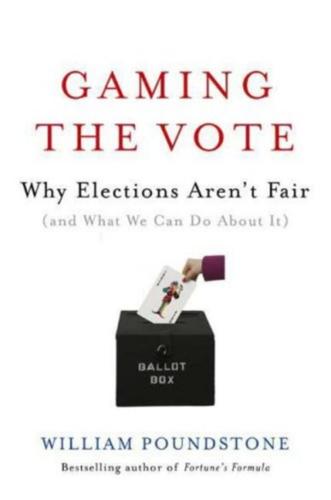
Gaming the Vote: Why Elections Aren't Fair (And What We Can Do About It)
by
William Poundstone
Published 5 Feb 2008
"Huffman's Foes in Primary Blast National GOP Support."' Arizona Dail)' Sf<lr, Sept. 6, 2006. Brodie, John, and Bob Mack (1990). "Up Close and Personal with Lee Atwater, Homebody: Sf'}', May 1990, 88-89, Budoff, Carrie (2006). "Santorum Calls Casey a 'Thug' in Residency Flap." PhiuuieJphm Daily News, May 20, 2006, Buchanan, Pal, and Ralph Nader (2004). "Ralph Nader: Conservatively Speaking," The American Consen'ative, June 21, 2004. Bueno De Mesquita, Bruce, and Kenneth Shepsle (201)1). "William Harrison Riker, "Washinglon, D,C.: Nalional Academy Press, newton.nap.eclufhtmllbiomems/ wriker,hlm!. Cabrera, Marisa (2006). "Oscars Insight: Proportional Voting System Makes for Wideopen Nomination Pick."'
…
John • Benjamin Harrison· James Weaver· J. P. Morgan· Henry Clay Frick· Teddy Roosevelt· William Howard Taft· Woodrow Wilson· Eugene Debs· socialism • Wall Street· Ross Perot· Larry King· nude photos· George H. W, Bush· Bill Clinton· Bob Dole· POWs • Vietnamese· Black Panthers· Ed Rollins • FDR • Harry Levine· Ralph Nader· Hiroshima· AI Gore· Lewis Carroll • Tweedledee • Tweedledum • George W. Bush· Michael Moore· John McCain • Karl Rove· Mother Teresa· universal negatives· Tarek Milleron • Cadillac tail Iins • George McGovern· Gore Vidal· Ronald Reagan· the Iifty-Iive-mile-anhour speed limit· Mother Jones· James Carville· "That Bastard" • the devil • Pat Buchanan· Harry Browne· Harry Reid· defective consumer products 4.
…
In our two-party system, the most familiar form of vote splitting is the spoiler effect. When there is a tight race between the two major candidates, a third-party "spoiler" candidate can take enough votes from one of the from-runners to hand the election to his rival. This happened in the 2000 presidential race, when Green candidate Ralph Nader tipped the balance from AI Gore to George W. Bush in Florida, and thus determined the election. Vote splitting is an invisible hand misguiding the whole electoral process. The consequences are weakened mandates, loss of faith in the democratic process, squandered dollars, and sometimes squandered lives.

We the Corporations: How American Businesses Won Their Civil Rights
by
Adam Winkler
Published 27 Feb 2018
On Nader, see Evan Osborne, The Rise of the Anti-Corporate Movement: Corporations and the People Who Hate Them (2007), 59; “The U.S.’s Toughest Customer,” Time, December 12, 1969, 89; Charles McCarry, “A Hectic, Happy, Sleepless, Stormy, Rumpled, Relentless Week on the Road with Ralph Nader,” Life, January 21, 1972, 45; Jack Doyle, “GM & Ralph Nader, 1965–1971,” PopHistoryDig.com, March 31, 2013, available at http://www.pophistorydig.com/?tag=ralph-nader-time-magazine; Barbara Hinkson Craig, Courting Change (2004), 1–32. See Ralph Nader, Unsafe at Any Speed: The Designed-In Dangers of the American Automobile (1966). 11. Justin Martin, Nader: Crusader, Spoiler, Icon (2002), 57. 12. See Doyle, “GM & Ralph Nader”; “The U.S.’s Toughest Customer,” Time, December 12, 1969, 89. 13. Charles McCarry, Citizen Nader (1972), 29; Doyle, “GM & Ralph Nader” (quoting the Washington Post); McCarry, “Relentless Week,” 91; “Nader’s Zenith,” Washington Post, August 30, 1966, A18. 14.
…
As constitutional leveragers, corporations have successfully exploited constitutional reforms originally designed for progressive causes, transforming them to serve the ends of capital. The Fourteenth Amendment, for example, was designed to protect the rights of the freedmen, but Conkling and the Southern Pacific Railroad pushed the Supreme Court to use it to protect the rights of corporations. In the 1970s, Ralph Nader won a landmark case on behalf of consumers that established a First Amendment right to advertise—a right that corporations, including tobacco and gaming companies, used to overturn laws designed to help consumers. Yet corporations are also constitutional first movers, and historically have often been innovators at the cutting edge of constitutional litigation.
…
In a remarkably productive six-year stretch, Congress passed the Clean Air Act, the Clean Water Act, the National Environmental Policy Act, and the Consumer Product Safety Act, along with new regulations establishing safety standards for automobiles, prohibiting dangerous chemicals in children’s products, and strengthening food safety. The laws reflected Americans’ loss of faith in industry. In 1966–1967, over half of Americans reported having “a great deal of confidence” in corporate leaders, but by 1974–1976, that number had dropped precipitously to 20 percent.2 The unquestioned leader of the reform movement was Ralph Nader, a tireless populist advocate for curbing corporate power whom Newsweek magazine featured on its cover dressed as a knight in shining armor. Time magazine called Nader the “nation’s No. 1 consumer guardian,” who had prompted “much U.S. industry to reappraise its responsibilities and, against considerable odds, created a new climate of concern for the consumer among politicians and businessmen.”

The Cigarette: A Political History
by
Sarah Milov
Published 1 Oct 2019
Nor were those dangers episodic: just as cancer causing agents were built into the very cigarettes being marketed, the “negative externalities” of mass consumption, whether in the form of highway deaths or polluted rivers, were attracting more scrutiny and drawing a crowd. Ralph Nader’s morally upright shadow threatened to extend the reach of the ruling. “Automakers may now expect the ‘Ralph Nader Hour’ devoted to scaring the bejabbers out of drivers,” opined the Indianapolis News. “What of other ‘hazardous’ products?” asked the irreverent Boston Herald. “Congress has legislated far more stringently as to automobiles than it has legislated as to cigarettes,” the paper observed in reference to the recent passage of the Nader-endorsed Motor Vehicle Safety Act of 1966.
…
In a letter to Fortas’s law partner, DOJ lawyer Orrick noted that even though the Justice Department would grant code adherents criminal antitrust immunity, his assurances “shouldn’t be taken to represent a judgment that a code will in fact reduce the health hazards resulting from smoking or lessen the appeal of cigarette advertising to youth.”74 For those publics, there would be no recourse—yet. Advertising the Public Interest By the time the Cigarette Advertising Code went into effect in 1965, Ralph Nader had become a household name. More than any other individual, Nader was responsible for a powerful critique of private interest government as morally corrupt and physically dangerous. “A great problem of contemporary life,” Nader wrote in the preface to Unsafe at Any Speed, the book that made him famous, “is how to control the power of economic interests which ignore the harmful effects of their applied science and technology.”
…
This allegation triggered a series of events that resulted in the president of GM apologizing to Nader and settling with the thirty-one-year-old for invasion of privacy.76 Unsafe at Any Speed rocketed to the top of the bestseller lists. With money from the settlement, Nader founded the Center for the Study of Responsive Law, which produced a series of colorfully titled monographs in 1970 that hammered home the critique of agency capture: The Interstate Commerce Omission, The Chemical Feast, The Vanishing Air.77 Ralph Nader was far from the only young lawyer energized by the prospects of using litigation in service of environmental and consumer advocacy. In 1966, a twenty-nine-year-old lawyer named Victor Yannacone sued Suffolk County, Long Island, on behalf of his client—his wife. Yannacone charged that the county’s use of DDT insecticide—“dumping,” in the language of the environmentalists of the 1960s—posed an environmental danger and risk to human health, and advocated for its prohibition.

Skin in the Game: Hidden Asymmetries in Daily Life
by
Nassim Nicholas Taleb
Published 20 Feb 2018
fn4 In fact, those who formalized the theory of rationality, such as the mathematician and game theorist Ken Binmore, more on whom later, insist that there has never been any rigorous and self-consistent theory of “rationality” that puts people in a straitjacket. You will not even find such claims in orthodox neoclassical economics. Most of what we read about the “rational” in the verbalistic literature doesn’t seem to partake of any rigor. fn5 The Ralph Nader to whom I dedicate this book is the Ralph Nader who helped establish the legal mechanism to protect consumers and citizens from predators; less so the Ralph Nader who occasionally makes some calls to regulate. fn6 There is actually an argument in favor of duels: they prevent conflicts from engaging broader sets of people, that is, wars, by confining the problem to those with direct skin in the game.
…
So these P.R. firms resorted to harassing New York University’s staff by using web-mobs to flood them with emails—which includes overwhelming a defenseless assistant and people who had no idea I worked for the university since I am there only quarter-time. This method—of hitting you where they think it hurts—implies hitting people around you who are more vulnerable than you. General Motors, in the campaign against Ralph Nader (who uncovered flaws in their products), desperate to stop him, resorted to harassing Rose Nader, his mother, calling her at three in the morning—in the days when it was hard to trace a telephone call. Clearly it was meant to make Ralph Nader feel he was guilty of harming his own mother. It turned out that Rose Nader was herself an activist and felt flattered by the calls (at least she was not left out of the battle).
…
THE BED OF PROCRUSTES (Philosophical Aphorisms) (2010, 2016) ANTIFRAGILE (2012), on how some things like disorder (hence volatility, time, chaos, variability, and stressors) while others don’t, how we can classify things along the lines fragile-robust-antifragile, how we can identify (anti)fragility based on nonlinear response without having to know much about the history of the process (which solves most of the Black Swan problem), and why you are alive if and only if you love (some) volatility. SKIN IN THE GAME (2018), this volume. INCERTO’S TECHNICAL COMPANION, consisting of academic-style papers, miscellaneous notes, and (very) technical remarks and developments. Two men of courage: Ron Paul, a Roman among Greeks; Ralph Nader, Greco-Phoenician saint Book 1 * * * INTRODUCTION This book, while standalone, is a continuation of the Incerto collection, which is a combination of a) practical discussions, b) philosophical tales, and c) scientific and analytical commentary on the problems of randomness, and how to live, eat, sleep, argue, fight, befriend, work, have fun, and make decisions under uncertainty.
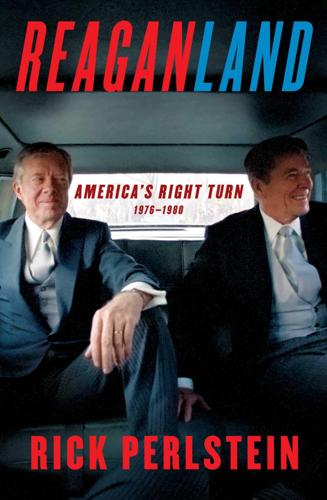
Reaganland: America's Right Turn 1976-1980
by
Rick Perlstein
Published 17 Aug 2020
Kennedy replied that “the person who sold the most books today for Mr. Nader was the Senator from Nebraska.” * * * THE BUMPTIOUS GENTLEMAN FROM NEBRASKA was not, it soon arrived, Ralph Nader’s only harasser. While he was working on Unsafe at Any Speed, Nader had complained to friends that strange men were following him. That an attractive woman approached him, seeking his company. That, the night before his congressional testimony, at the $80-a-month boardinghouse where he rented a room, he got several harassing phone calls. Ralph Nader had always been an odd duck. Now his friends wondered whether he might actually be insane. Then, a journalist discovered that General Motors had hired a detective agency to spy on him.
…
“The American auto industry” David Halberstam, The Reckoning (New York: William Morrow & Co., 1986), 490. Nader testified Vogel, Fluctuating Fortunes, 44; Pertschuk, Revolt Against Regulation, 21. “nut behind the wheel” Pertschuk, Revolt Against Regulation, 41. “second collision” Ralph Nader, Unsafe at Any Speed (New York: Dunlop & Grossmans, 1965), Chapter Three. “written almost exclusively” “Statement by Ralph Nader Before the Senate Subcommittee on Executive Reorganization,” Traffic Safety: Examination and Review of Efficiency, Economy, and Coordination of Public and Private Agencies’ Activities and the Role of the Federal Government, Hearings before the Subcommittee on Executive Reorganization of the Committee on Government Operations, United States Senate, Eighty-Ninth Congress, First Session, March 22, 25, and 26, 1965, Part I.
…
Carter rang up six Green, Bright, Infinite Future, 76. most comprehensive onslaught Vogel, Fluctuating Fortunes, 162, 204; George Schwartz, “The Successful Fight Against a Federal Consumer Protection Agency,” MSU Business Topics 27 (Summer 1979), 45–57. Ralph Nader’s hubris Ibid.; Walter Guzzardi Jr., “Business Is Learning How to Win in Washington,” Fortune, March 27, 1978, 36; Ralph Nader, “ ‘Mushy Liberals’ Slide Away,” Philadelphia Daily News, October 3, 1977; ever since 1962 Vogel, Fluctuating Fortunes, 28. Publisher Katharine Graham John Judis, The Paradox of American Democracy: Elites, Special Interests, and the Betrayal of Public Trust (New York: Pantheon, 2000), 168.

Tailspin: The People and Forces Behind America's Fifty-Year Fall--And Those Fighting to Reverse It
by
Steven Brill
Published 28 May 2018
In the hands of thousands of Washington lawyers drawn from the new meritocracy, due process came to mean not just that the government couldn’t take away land or freedom at will, but that an Occupational Health and Safety Administration rule protecting workers from a deadly chemical used on the job could be challenged and delayed for more than a decade and end up being hundreds of pages long, filled with clause after clause after clause whose meaning the lawyers could contest. A landmark suit brought by consumer rights activist Ralph Nader gave corporations that owned drugstores a First Amendment right to inform consumers by advertising their prices. However, it morphed into a corporate free speech movement that produced one court decision after another allowing unlimited corporate money to overwhelm democratic elections. Beginning in the 1970s, the First Amendment right to petition the government was deployed to allow businesses to storm Washington with thousands of lobbyists to press their case with members of Congress and their staffs and at regulatory agencies and executive branch departments.
…
In the 1970s, however, demand for lawyers exploded, the result of legislative and other developments beginning in the 1960s—including corporate mergers and takeovers; a growing interest in tax shelters; new regulations related to consumer products, employment discrimination, worker safety, and the environment; and industry’s determination to fight back against the rise of adversaries like Ralph Nader and environmentalist Rachel Carson, the author of Silent Spring. In just the 1970s, as the knowledge economy blossomed, the number of lawyers nearly doubled, and then increased by another 50 percent in the 1980s. In terms of dollars generated, by the mid-1980s the legal industry was bigger than steel or textiles, and about the same size as the auto industry.
…
When Redish’s Harvard professor read the first draft of his senior thesis—arguing, in spite of all Supreme Court doctrine, that corporations should have the same free speech right as people because their arguments, too, contributed to the public dialogue—he told Redish he thought he was crazy. This was 1969, a time when corporations, which were being pilloried by Ralph Nader, Rachel Carson, and others, were not typically grouped with anti-war demonstrators as First Amendment warriors. Still, recalled Redish, the Harvard professor “gave me an A. He thought I had guts.” While working the following year in a prestigious federal appeals court clerkship, Redish turned his Harvard thesis into a law review article.
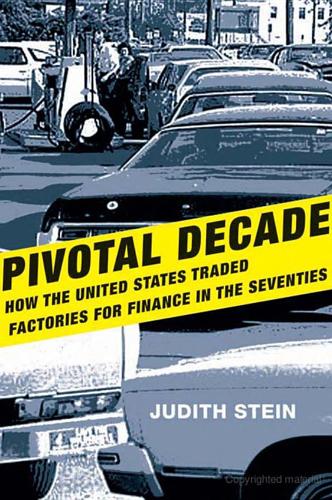
Pivotal Decade: How the United States Traded Factories for Finance in the Seventies
by
Judith Stein
Published 30 Apr 2010
The new organizations were officially nonpartisan and assumed that they each represented a public interest. One study of eighty-three public interest groups found that 30 percent had no members at all, only lobbyists. Of the rest, 57 percent had no structure that elicited public opinion.11 The best example was the Ralph Nader organization Public Citizen, founded in 1971 to represent the consumer, uncontaminated by special interests. Public interest advocates claimed that public policies affected many who were unrepresented—the people, the consumers, the citizens.12 They fostered the belief that government cannot protect the people but only active citizens, generally wielding a lawsuit and not a ballot.
…
That no one suggested Muskie demonstrated the provincialism and fatigue surrounding the deliberation.37 When Eagleton, who was not well known, was finally chosen, the matter did not end. That evening, the charade of openness required six other nominations, representing factions of the McGovern coalition. Not even for their own candidate would they discipline their desire. Once control was broken, delegates nominated Jerry Rubin, Ralph Nader, Archie Bunker, Mao Tse-tung, and many others. Ironically, it was the Wallace delegation from Alabama, not the McGovern group from New York, which shifted its votes to make Eagleton the vice presidential candidate. The price for this lengthy indulgence was that McGovern began his acceptance speech at 2:48 a.m.38 Not a good beginning.
…
Exports began to rise.1 American manufacturers constructed new factories.2 They even gained ground in world markets.3 Closing the book in Vietnam and rekindling economic growth yielded an era of good feelings in 1973. The new president of the Chamber of Commerce, Edward B. Rust, had some nice things to say about that scourge of American capitalism, Ralph Nader. Nader, who first became famous battling mighty General Motors over automobile safety, led numerous investigations documenting corporate misdeeds and government negligence. But now Rust concluded that Nader simply aimed to make “the free-enterprise system work.”4 Irving Kristol, the future scold of 1960S culture, took the various social changes of the decade in stride.
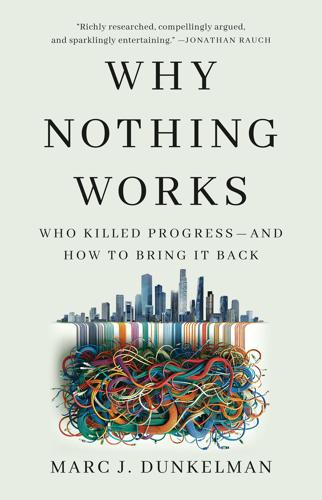
Why Nothing Works: Who Killed Progress--And How to Bring It Back
by
Marc J Dunkelman
Published 17 Feb 2025
Wright Mills, Abbie Hoffman, Eldridge Cleaver, Rachel Carson, and Ralph Nader. Both ends against the middle—both against public power. Today, many may scoff at the notion that progressivism was somehow in sync with Richard Nixon, or vice versa. And, indeed, during this period, progressives remained supportive, in theory, of a whole range of more Hamiltonian proposals embraced by the Democratic mainstream at the time. (To repeat, progressivism has always embraced elements of both its Hamiltonian and Jeffersonian impulses—even if the balance is often in flux.) The congruence between the likes of Richard Nixon and Ralph Nader wasn’t that they shared some broader dream of the same social justice—it was that they both sought ways to hack at nodes of centralized authority.
…
The so-called credibility gap that separated military propaganda from reality became, for many boomers, a frame for understanding not just the Johnson administration but also institutions of power more generally.84 Nearly everything the government proclaimed would eventually become suspect.85 Establishment figures claimed to be accounting for the nation’s long history of racism and prejudice—but were they actually in bed with the bigots? They claimed to be protecting the environment—but, as Rachel Carson exposed in Silent Spring (1962), big agriculture was poisoning the nation’s crops and farmland.86 The gospel of balance had promised that big industry would deliver great prosperity at falling prices—but Ralph Nader’s Unsafe at Any Speed (1965) revealed that regulators were allowing the automobile industry to sell death traps on wheels.87 The pattern was endemic. It wasn’t just that the Establishment no longer deserved the benefit of the doubt; big government began to appear entirely unworthy of the public’s trust.
…
Now, if the movement’s prevailing view suggested that, as Gitlin described things, “for every face of authority, there [needed to be] someone to slap it,” conservatives could more easily claim working-class whites away from the Democratic coalition.103 Realizing just how deeply so many Americans resented the radical likes of Abbie Hoffman, Ralph Nader, and Eldridge Cleaver—the silent majority didn’t want every authority figure slapped—the White House purposely baited progressives into taking positions out of step with the president’s mainstream appeal.104 In what was perhaps the most dastardly element of Nixon’s tenure, his own misbehavior only served to steer progressives further into the swerve.
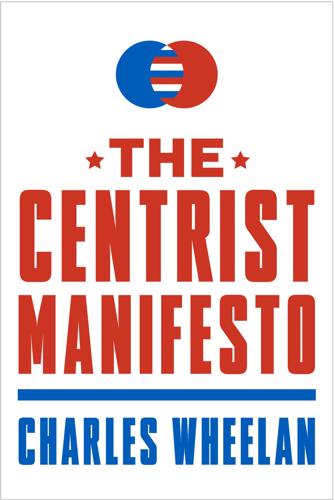
The Centrist Manifesto
by
Charles Wheelan
Published 18 Apr 2013
Yes, the American political system has historically been hostile to third parties. Any serious political observer knows that. We have had many third-party presidential candidates, from Teddy Roosevelt of the Bull Moose Party to Ralph Nader of the Green Party. They don’t win. And to the extent that they change the political landscape, it is often in ways that distort voters’ preferences. Ralph Nader arguably made George W. Bush president in 2000 by taking votes away from Al Gore in Florida. That’s hardly what Nader supporters could have hoped for. Even if a third-party presidential candidate were to catch fire with voters—perhaps even winning a plurality of votes cast—the Electoral College is more hostile still.
…
The answer is the Centrist Party—a third political party that empowers the middle. The sane, pragmatic majority in America must wrestle the steering wheel of the country away from the extremists on either side. This book is a plan for making it happen. The purpose of the Centrist Party is not to make noise, like Ralph Nader and Pat Buchanan did when they ran for president. Nor is it a means for angry people to vent in a semi-organized way, like the Tea Party, which has no major policy accomplishments to speak of and has mostly served to fracture the Republican Party. (New York Times columnist Tom Friedman has called it the “Tea Kettle” movement because it is mostly about letting off steam.)2 The Centrist Party will have a coherent ideology that draws from the best of both traditional political parties.
…
That is wrong. The system is hostile to third parties emerging from the political fringe—the Green Party, for example. These parties do not win elections because they represent relatively small, deeply ideological segments of the population. In fact, they often have a counterproductive effect. Ralph Nader almost certainly cost Al Gore the election in 2000, the pathetic irony being that the Green Party he was supposedly representing ended up worse off as a result of his campaign. When these fringe parties appear, potential supporters must choose between making noise and making a difference. A Centrist Party is the opposite.

Empire of Illusion: The End of Literacy and the Triumph of Spectacle
by
Chris Hedges
Published 12 Jul 2009
It dices disciplines, faculty, students, and finally experts into tiny, specialized fragments. It allows students and faculty to retreat into these self-imposed fiefdoms and neglect the most pressing moral, political, and cultural questions. Those who critique the system itself—people such as Noam Chomsky, Howard Zinn, Dennis Kucinich, or Ralph Nader—are marginalized and shut out of the mainstream debate. These elite universities have banished self-criticism. They refuse to question a self-justifying system. Organization, technology, self-advancement, and information systems are the only things that matter. In 1967, Theodor Adorno wrote an essay titled “Education After Auschwitz.”
…
Will we radically transform our system to one that protects the ordinary citizen and fosters the common good, that defies the corporate state, or will we employ the brutality and technology of our internal security and surveillance apparatus to crush all dissent? There were some who saw it coming. The political philosophers Sheldon S. Wolin, John Ralston Saul, and Andrew Bacevich, writers such as Noam Chomsky, Chalmers Johnson, David Korten, and Naomi Klein, and activists such as Bill McKibben, Wendell Berry, and Ralph Nader warned us about our march of folly. In the immediate years after the Second World War, a previous generation of social critics recognized the destructive potential of the rising corporate state. Books such as David Riesman’s The Lonely Crowd, C. Wright Mills’s The Power Elite, William H. White’s The Organization Man, Seymour Mellman’s The Permanent War Economy: American Capitalism in Decline, Daniel Boorstin’s The Image: A Guide to Pseudo-Events in America, and Reinhold Niebuhr’s The Irony of American History have proved to be prophetic.
…
These corporations, including the Commission on Presidential Debates (a private organization), determine who gets to speak and what issues candidates can or cannot challenge, from universal, not-for-profit, single-payer health care to Wall Street bailouts to NAFTA. If you do not follow the corporate script, you become as marginal and invisible as Dennis Kucinich, Ralph Nader, or Cynthia McKinney. This is why most Democrats opposed Pennsylvania Democratic House Representative John Murtha’s call for immediate withdrawal from Iraq—something that would dry up profits for companies like Halliburton—and supported continued funding for the war. It is why most voted to reauthorize the Patriot Act.
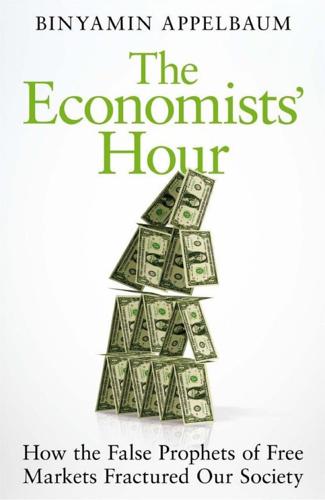
The Economists' Hour: How the False Prophets of Free Markets Fractured Our Society
by
Binyamin Appelbaum
Published 4 Sep 2019
Powell, one of America’s most prominent corporate lawyers, drafted an alarmist memo for the U.S. Chamber of Commerce in August 1971, warning, “No thoughtful person can question that the American economic system is under broad attack.” Powell’s memo was a catalog of woes: Capitalism, he said, was threatened by radicals like Ralph Nader who wanted the federal government to protect consumers. It was threatened by environmentalists, by liberals who favored higher taxes, by college students whose minds were poisoned by radical professors. Students at the University of California, Santa Barbara, had pushed a flaming dumpster into the local Bank of America in February 1970, burning the bank to the ground.
…
Over the next two decades, Anheuser-Busch built a national network of breweries without making a single acquisition. Meanwhile, Blatz and many other smaller brewers went out of business. In 1960, the top four firms had brewed 27 percent of the beer; by 1980, the top four firms brewed 67 percent.47 And economists pointed out the price of beer had steadily declined. Consumer advocates like Ralph Nader increasingly took the existence of large corporations for granted; rather than trying to break companies apart, they sought to strengthen federal regulation. The rise of the Japanese economy also began to shift public debate. Japan treated industrial conglomerates as a source of strength, not a threat to society and the state.
…
At a 1974 conference on the economics of regulation, one despairing economist suggested that everyone should bring the same papers to another conference a decade later, and present them again, because there was little prospect anything would change.28 That was not a good prediction. Some on the political left had come to agree with Stigler that Americans might benefit from less regulation. The most influential figure was Ralph Nader, the slender zealot who had emerged as the icon of the nascent consumer movement. Nader had made his reputation campaigning for more health and safety regulation; by the early 1970s, he was also campaigning for less economic regulation, which in his view protected companies at the expense of consumers.
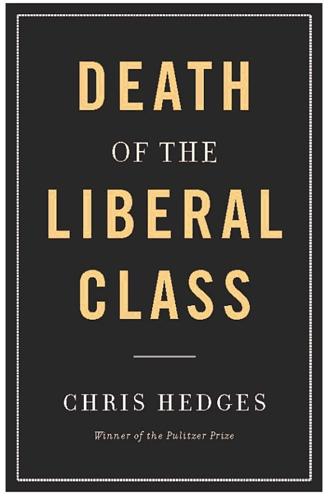
Death of the Liberal Class
by
Chris Hedges
Published 14 May 2010
Stone (New York: Farrar, Straus and Giroux, 2009), x. 16 Ibid. 17 Ibid., 232. 18 Ibid., 475. 19 Ibid., 473. 20 Ibid., 232. 21 Ibid., xiii. 22 Ibid., 408-409. 23 Ibid., 431. 24 Abe Peck, Uncovering the Sixties: The Life and Times of the Underground Press (New York: Citadel Press, 1991), 142. 25 Edward Herman and Noam Chomsky, Manufacturing Consent, 300. 26 Ralph Nader, interview, Washington, DC, March 30, 2010. 27 David Cay Johnston, interview, by phone from Rochester, New York, March 7, 2010. 28 Lewis F. Powell, “Attack on th eAmerican Free Enterprise System,” U.S. Chamber of Commerce, August 23, 1971, http:www.reclaimdemocracy.org/ corporate _acountability/Powell_memo_lewis.html. 29 Ralph Nader, in Henriette Mantel and Steve Skrovan, Directors, An Unreasonable Man, Submarine Entertainment, 2006. 30 Warren P. Strobel, “Dealt a Setback, Bush Now Faces a Difficult Choice,” Philadelphis Inquirer, February 15, 2003, A01. 31 James Cone, interview, Princeton, New Jersey, January, 16, 2010. 32 Malcolm X, Corey Methodist Church, Cleveland, Ohio, April 3, 1964. 33 See King’s address, “Some Things We Must Do,” given December 5, 1957, on the second anniversary of the Montgomery bus boycott. 34 Malcolm X, panel discussion on WNDT-TV, New York, 1963. 35 Martin Luther King, “Guidelines for a Conservative Church,” Sermon given June 5, 1966, at Ebenezer Baptist Church, Atlanta. 36 Dean Henderson, interview, Fairfax, Virginia, February 20, 2010.
…
Zinn knew that if we do not listen to the stories of those without power, those who suffer discrimination and abuse, those who struggle for justice, we are left parroting the manufactured myths that serve the interests of the privileged. Zinn set out to write history, not myth. He found that challenging these myths, even as a historian, turned one into a pariah. The descent of Ralph Nader, from being one of the most respected and powerful public figures in the country to being an outcast, illustrates perhaps better than any other narrative the totality of our corporate coup and the complicity of the liberal class in our disempowerment. Nader’s marginalization was not accidental.
…
Oftentimes, I would be the lead witness. What was interesting was the novelty. The press gravitates to novelty. They achieved great things. There was collaboration. We provided the newsworthy material. They covered it. The legislation passed. Regulations were issued. Lives were saved. Other civic movements began to flower. “Ralph Nader came along and did serious journalism. That is what his early stuff was, such as Unsafe at Any Speed,” the investigative journalist David Cay Johnston told me:The big books they put out were serious, first-rate journalism. Corporate America was terrified by this. They went to school on Nader. They said, “We see how you do this.

Dear Chairman: Boardroom Battles and the Rise of Shareholder Activism
by
Jeff Gramm
Published 23 Feb 2016
But when you read Friedman’s piece today, there is something inevitable about his deconstruction of corporate purpose. In the pages of this book we’ll see how and why shareholders have won control of corporate America. Take it from Ralph Nader himself, who in 2014 released a public statement criticizing Liberty Media for “lowballing Sirius XM’s shareholder value” in a buyout offer.6 In today’s world, where even Ralph Nader’s activism promotes shareholder value, other public company stakeholders have been marginalized. When Bill Shlensky attacked the Chicago Cubs for refusing to light Wrigley Field, Phil Wrigley argued that night baseball would have a negative effect on the surrounding neighborhood.
…
The key issue in an activist campaign often boils down to who will do a better job running the company—a professional management team and board with little accountability, or a financial investor looking out for his or her own interests. WITH THE EMERGENCE of shareholder populism, embodied by the New York Stock Exchange’s promotion of widespread stock ownership as “people’s capitalism” in the 1950s, came socially oriented activism led by crusaders such as the Gilbert brothers, Wilma Soss, and Ralph Nader. I have nothing but respect for men like James Peck, who bought one share of Greyhound Bus to push the company to integrate its southern bus lines, but I’ve largely ignored this brand of shareholder activism. As hard as these activists have pushed public companies to behave responsibly, it’s difficult to pressure a management team without appealing to the profit motive of other shareholders.
…
Corporate governance gurus Robert Monks and Nell Minow write in several of their books that Smith got SWIB to withdraw support for its shareholder resolution by calling Wisconsin’s governor and threatening to cancel planned GM capital spending in the state.60 At GM’s annual meeting, the shareholder motion to rescind the Perot transaction received 20% of the vote. This was considered an embarrassment for GM—Ralph Nader’s Campaign GM was deemed a success in 1970 when it won under 3% of the vote for shareholder initiatives promoting corporate responsibility. But Roger Smith had won: Neither the shareholders nor the directors were going to bring Ross Perot back to General Motors. With Perot gone and GM’s critics temporarily appeased by buybacks and restructuring plans, it seemed like the company was destined to slip into its normal state of submissive directors and shareholders.
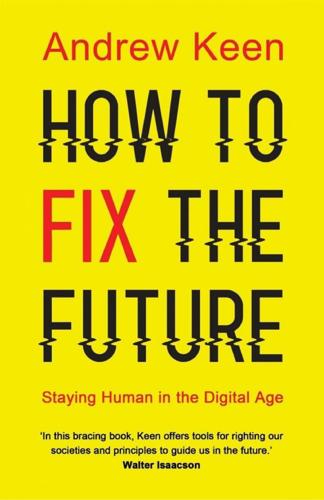
How to Fix the Future: Staying Human in the Digital Age
by
Andrew Keen
Published 1 Mar 2018
Politico included her in its 2016 list of America’s fifty most influential people, and San Francisco magazine described her as “the most reviled woman in Silicon Valley,” who has “achieved a kind of celebrity unseen in the legal world since Ralph Nader sued General Motors.”36 In person, the diminutive Liss-Riordan resembles anything but a sledgehammer. As the labor lawyer leads me into her office—which is peppered with political memorabilia from her fellow gig economy critic and political ally Massachusetts senator Elizabeth Warren37—she acknowledges that the digital revolution has made people work more efficiently. “I love what technology can do for us,” she tells me, sounding a lot like Margrethe Vestager. “But it shouldn’t be abused.” The comparison of Shannon Liss-Riordan with Ralph Nader is also useful. You’ll remember that it was Nader’s bestselling 1965 book exposing the fatal flaws in the Chevrolet Corvair, Unsafe at Any Speed: The Designed-In Dangers of the American Automobile, that ultimately undermined the global domination of the US car industry.
…
It was in 1965, of course, that Gordon Moore invented his eponymous law in an article titled “Cramming More Components onto Integrated Circuits,” first published in a special Electronics magazine issue dedicated to predicting the future.13 But in 1965 there wasn’t much popular interest in technical white papers about integrated circuits. Back then, anyone interested in reading about new technology had bought a book that not only turned out to be the year’s most influential work of nonfiction, but also changed an entire global industry. Written by Ralph Nader, the book was called Unsafe at Any Speed: The Designed-In Dangers of the American Automobile, and just as Rachel Carson’s 1962 bestseller Silent Spring dramatically raised public consciousness about the dangers of pesticides and toxic chemicals in our foods, so Nader’s 1965 book did the same thing for the deadly dangers of American automobiles.
…
“In Utopia, everyone is a legal expert,” he tells us about an imaginary society in which law had been radically democratized, “for the laws are very few . . . and they consider the most obvious interpretation of any law to be the fairest.”34 In the real world, however, especially in the United States, there is no shortage of either professional lawyers or complicated laws for them to interpret. Still, given the country’s increasingly dysfunctional political system, this might not be such a bad thing. Historically, crusading lawyers like Ralph Nader have played an important role in reforming Ameri-can capitalism. As the music attorney Chris Castle told me, citing the example of David Lowery’s class action lawsuits against Spotify and Rhapsody, the law may today be our most effective avenue for making entertainment companies accountable. You’ll also recall the central role of the Silicon Valley attorney Gary Reback in the US government’s antitrust trial against Microsoft in the 1990s—a case that eventually enabled the innovation-rich Web 2.0 revolution of Google and Facebook.
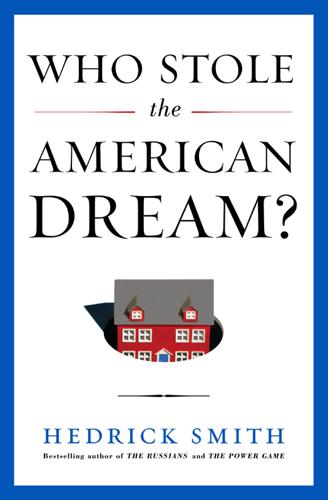
Who Stole the American Dream?
by
Hedrick Smith
Published 10 Sep 2012
Time magazine commented that in 1978 the decisive force blocking much of the Carter and liberal agenda was “the startling increase in the influence of special-interest lobbies…. Partly because of this influence, Congress itself is becoming increasingly balky and unmanageable.” Target #1—Ralph Nader Consumer activist Ralph Nader was the first target to feel the potent new challenge of the corporate mutiny against the political status quo. For several years, Nader’s chief ambition, and the primary goal of the consumer movement, was to have Congress create a consumer protection agency that would give average American consumers an advocate within the federal bureaucracy and that would consolidate pro-consumer rule making in one place.
…
When Speaker O’Neill pushed the Carter consumer agency bill to a vote, most of the newly elected Democrats bolted against party discipline and rejected the bill. The business strategy worked. What the White House and Ralph Nader had expected to be an easy win turned into a disastrous defeat in the House. The idea of a powerful consumer agency was buried for the next three decades. Target #2—Organized Labor Having beaten President Carter and Ralph Nader on their first big showdown, the business forces were ready for a test of strength against a politically more organized and more formidable foe, organized labor. Since the early 1960s, the AFL-CIO labor federation had been itching to roll back the tough anti-union provisions of the Taft-Hartley Act of 1947 and the Landrum-Griffin Act of 1959, with little success, and to win more favorable conditions for union organizing.
…
With slogans calling for “Truth in Lending” and “Truth in Packaging,” consumer advocates demanded more aggressive action by federal watchdog agencies to protect the public from being unfairly exploited by unsafe products and unscrupulous lenders. Quality of life was key. People took U.S. economic growth for granted, and they wanted higher standards, better quality, and greater transparency from industry. More than any other single person, Ralph Nader put middle-class consumer activism on the political map. A public figure of no small ego, Nader knew how to work the press, the public, and politicians. His 1965 book, Unsafe at Any Speed, captured public attention with the charge that America’s Big Three carmakers were responsible for many automobile accidents because they were marketing cars that were mechanically and technically unsafe.

Free to Choose: A Personal Statement
by
Milton Friedman
and
Rose D. Friedman
Published 2 Jan 1980
The question is whether the arrangements that have been recommended or adopted to meet them, to supplement the market, are well devised for that purpose, or whether, as so often happens, the cure may not be worse than the disease. This question is particularly relevant today. A movement launched less than two decades ago by a series of events—the publication of Rachel Carson's Silent Spring, Senator Estes Kefauver's investigation of the drug industry, and Ralph Nader's attack on the General Motors Corvair as "unsafe at any speed"—has led to a major change in both the extent and the character of government involvement in the marketplace—in the name of protecting the consumer. From the Army Corps of Engineers in 1824 to the Interstate Commerce Commission in 1887 to the Federal Railroad Administration in 1966, the agencies established by the federal government to regulate or supervise economic activity varied in scope, importance, and purpose, but almost all dealt with a single industry and had well-defined powers with respect to that industry.
…
Yet the public—or a large part of it—has been persuaded that private enterprises produce shoddy products, that we need ever vigilant government employees to keep business from foisting off unsafe, meretricious products at outrageous prices on ignorant, unsuspecting, vulnerable customers. That public relations campaign has succeeded so well that we are in the process of turning over to the kind of people who bring us our postal service the far more critical task of producing and distributing energy. Ralph Nader's attack on the Corvair, the most dramatic single episode in the campaign to discredit the products of private industry, exemplifies not only the effectiveness of that campaign but also how misleading it has been. Some ten years after Nader castigated the Corvair as unsafe at any speed, one of the agencies that was set up in response to the subsequent public outcry finally got around to testing the Corvair that started the whole thing.
…
How that power will be used and for what purposes depends far more on the people who are in the best position to get control of that power and what their purposes are than on the aims and objectives of the initial sponsors of the intervention. The Interstate Commerce Commission, dating from 1887, was the first agency established largely through a political crusade led by self-proclaimed representatives of the consumer—the Ralph Naders of the day. It has gone through several life cycles and has been exhaustively studied and analyzed. It provides an excellent example to illustrate the natural history of government intervention in the marketplace. The Food and Drug Administration, initially established in 1906 in response to the outcry that followed Upton Sinclair's novel The Jungle, which exposed unsanitary conditions in the Chicago slaughtering and meat-packing houses, has also gone through several life cycles.

So You've Been Publicly Shamed
by
Jon Ronson
Published 9 Mar 2015
What Max meant was that by the early 1990s he had become a campaigner to reform car safety laws, forcing manufacturers to carry out crash tests. ‘And when you think of what they did to Ralph Nader …’ * Ralph Nader. In 1961 a young man called Frederick Condon crashed his car. Back then sharp edges and no seat belts were considered stylish in car interiors. But the sharp edges turned Frederick Condon into a paraplegic. And so his friend - the lawyer Ralph Nader - began to lobby for mandatory seat-belt laws. Which was why General Motors hired prostitutes to follow him into stores - a Safeway supermarket and a pharmacy - to seduce and discredit him.
…
The incident proved to him, and later to Max, that the car industry was not above trying to shame its opponents into silence in its battle against safety do-gooders, and that people in high places were prepared to ingeniously deploy shaming as a means of moneymaking and social control. Maybe we only notice it happening when it’s done too audaciously or poorly, as it had been with Ralph Nader. * One Sunday morning in the spring of 2008 a PR man telephoned Max to ask him if he’d seen the News of the World. ‘He said, “There’s a big story about you.” So I went to the news stand.’ And as Max stared at the grainy photographs that millions of Britons were simultaneously staring at - a naked Max being bent over and spanked by women in German uniform - a line from Othello came into his head: I have lost my reputation.
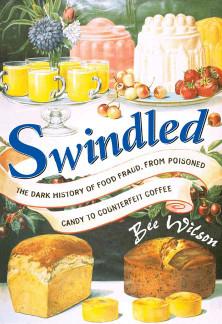
Swindled: the dark history of food fraud, from poisoned candy to counterfeit coffee
by
Bee Wilson
Published 15 Dec 2008
While the flavourists were happily composing their ersatz music, campaigners both in Britain and the United States had begun to rebel against the manipulation. Ralph Nader and the Chemical Feast In 1973, a witty food industry executive coined a new term: “Naderphobia,” named after the attorney and consumer activist Ralph Nader. The symptoms of the illness were a heightened sensitivity and an abandonment of normal behaviour among otherwise happygo-lucky businesspeople; in other words, a terror in the face of the damage that consumer activists could do to the food industry.136 Plenty of manufacturers were suffering from this malaise. Ralph Nader’s main target, famously, was the automobile industry. From 1965 onwards, Nader had attacked General Motors for producing cars that were “unsafe at any speed.”
…
In the process, the simple pleasures of good food may be forgotten. A more consumer-led approach has been to counter adulteration with information in the form of publicity and labelling. The press has always played a role in exposing food fraud, which has been heightened at various times through the work of muckrakers, from Upton Sinclair to Ralph Nader. In addition, we now have whole dictionaries of information about food at our disposal in the form of labelling. The right kind of publicity has been extremely effective in curbing the swindlers. After The Jungle, the meatpackers did clean up their act (though not to the extent that Sinclair wished).
…
Mitchell, John, Treatise on the Falsifications of Food and the Chemical Means Em ployed to Detect Them (London: Hippolyte Baillière, 1848). Monckton, H. A., A History of English Ale and Beer (London: Bodley Head, 1966). Murphy, Kevin C., “Pure Food, the Press and the Poison Squad: Evaluating Coverage of Harvey W. Wiley’s Hygienic Table,” 2001,” http://www.kevincmurphy.com, accessed September 2006. Nader, Ralph, The Ralph Nader Reader (London: Seven Stories Press, 2000). Nelson, Robert, L., “The Price of Bread: Poverty, Purchasing Power and the Victorian Labourer’s Standard of Living,” modified 25 December 2005, http://www .victorianweb.org. Nestle, Marion, Food Politics (Berkeley: University of California Press, 2002). ———, What to Eat (New York: North Point Press, 2006).

After the New Economy: The Binge . . . And the Hangover That Won't Go Away
by
Doug Henwood
Published 9 May 2005
We First Worlders have to be very careful here, since the initial European rise to wealth depended largely on the colonies, and while we can argue about the exact contribution of neocolonialism to the maintenance of First World privilege, it's certainly greater than zero. It's embarrassing to hear Ralph Nader and his associated fair-trade campaigners describe NAFTA and the World Trade Organization as threats to U.S. sovereignty, echoing the rhetoric of Pat Buchanan. Washington has abused the sovereignty of scores of nations over the decades, while refrising to observe decisions of global bodies Hke the World Court.
…
Export-oriented development has offered very Uttle in the way of real economic and social development for the poor countries who've been offered no other outlet. But does that mean trade itself is bad? At a debate at Seattle's Town Hall during WTO week 1999, then—Undersecretary of Commerce for International Affairs David Aaron asked Ralph Nader how a consumer advocate could support restricting trade, since that would restrict choice and drive up prices. Nader had a hard time coming up with a good answer, sputtering and saying at one point that restricting trade would promote national self-sufficiency. Why national self-sufficiency is such a worthy goal he didn't say, but it seems Hke a retentive and unfriendly goal.
…
Esprit took ten years to pay off the back wages the government ordered them to pay (Udesky 1994). The IFG's kickoff conference's opening plenary, held in New York's Riverside Church, assembled a long night's worth of speakers—Maude Barlow (of the Council of Canadians), John Cavanagh (Institute for Pohcy Studies), Barbara Dudley (Greenpeace), David Korten (author), Ralph Nader (who needs no parenthetical ID), Carl Pope (Sierra Club), andVandana Shiva (Third World Network). The MC was adman Jerry Mander, who believes that TV, which he hates, will soon implode of its own contradictions. Mander was on the board of El Bosque and is the globalization program director for Tompkins' Foundation for Deep Ecology (FDE), whose funding was acknowledged, along with that of the Goldsmith Foundation.

Propaganda and the Public Mind
by
Noam Chomsky
and
David Barsamian
Published 31 Mar 2015
So it’s probably more important to vote for a representative to Congress than for president and similarly down the line. Public pressures are usually greater at the lower end, although private pressures are also greater at the lower end, so it’s a mixed story. Ralph Nader has announced his candidacy for the presidency on the Green Party ticket. Would that be something that would attract you? It’s a very tricky issue. You have to try to calculate extremely unpredictable and kind of low-order choices. A vote for Ralph Nader is going to be a protest vote. Everybody knows that. Is it advantageous to do that or to vote for a marginally better candidate who has a chance to win? The New Party had come up with a very sound proposal for running fusion candidates.
…
I can sort of conjure up something that might have been going on in their editorial offices, but your guess is as good as mine. The term anarchist has always had a very weird meaning in elite circles. For example, there was a small article in the Boston Globe the other day about how all these anarchists are organizing these protests.10 Who are the anarchists? Ralph Nader’s Public Citizen, labor organizations, and others. There will be some people around who will call themselves anarchists, whatever that means. But from the elite point of view, you want to focus on something that you can denounce in some fashion as irrational. That’s the analogue to Thomas Friedman calling them flat-earthers.
…
If we’re serious, we know we could be wrong. Anyone who’s too confident about their beliefs on topics like this is in serious trouble. So where there are differences of opinion, there may well be reason for self-questioning, too. You just make your choices. There’s no formula for it. So you wouldn’t subscribe to the criticisms of Ralph Nader for joining with Pat Buchanan in opposing the WTO or the China trade bill? I wouldn’t. If it was being on the same platform, what do you mean joining with him? Rhetorically... That’s irrelevant. That’s a point that Trotsky made years ago when he was accused of being a fascist because he was criticizing Stalinism in the same terms that the fascists were.
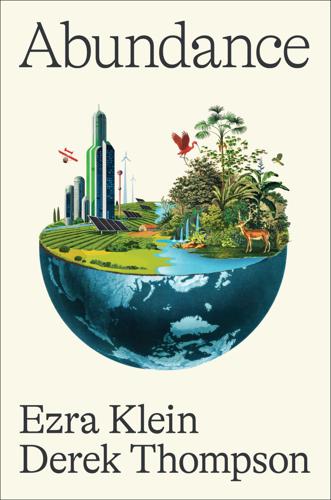
Abundance
by
Ezra Klein
and
Derek Thompson
Published 18 Mar 2025
“Annual Air Quality, Los Angeles County, Air Quality Days by Year, 1980–2023,” Los Angeles Almanac, https://www.laalmanac.com/environment/ev01b.php. 77. The authors also thank the writer Max Nussbaum for his analysis of the rise of Nader’s revolution and its legacy. 78. Jim Lehrer, interview with Ralph Nader, “Newsmaker: Ralph Nader,” PBS News Hour, air date June 30, 2000, https://www.pbs.org/newshour/spc/bb/politics/jan-june00/nader_6-30.html. 79. Sabin, Public Citizens, Kindle, xvii. 80. H.R.5—Regulatory Accountability Act of 2017, 115th Congress (2017–2018), https://www.congress.gov/bill/115th-congress/house-bill/5/all-actions?
…
But it wasn’t just conservatives who came to think the government reckless and dangerous and in need of new rules and strictures. Liberals did, too. After World War II, as highway construction grew, vehicle sales soared. So did road deaths. Motor vehicle fatalities rose from about 30,000 in 1946 to more than 50,000 in the late 1960s. In 1965, a lawyer named Ralph Nader published the book Unsafe at Any Speed, a blistering exposé of car manufacturers resisting safety improvements while blaming individual drivers for rising fatalities. The book was a sensation. In 1966, Lyndon Johnson signed the National Traffic and Motor Vehicle Safety Act and the Highway Safety Act, which mandated a new set of auto safety standards.69 Nader soon became one of the most famous lawyers in America.
…
His disciples, known as Nader’s Raiders, transformed politics, with their blend of expertise and advocacy.70 “So far as anyone can remember, nothing quite like this has happened in Washington before,” a Christian Science Monitor reporter wrote in 1969. “A group of unofficial but informed outsiders… as a sort of civilian posse, has descended on a rather stuffy government commission, poked under sofas, and asked some rough questions.”71 As the historian Paul Sabin writes in his book Public Citizens, reformers like Ralph Nader were right to concentrate their fury on government and its safety record in the 1960s. “The government was allowing strip mines to ravage the Appalachian Mountains and leaving coal miners to suffer from black lung disease with little compensation,” he writes. “Government policies were permitting oil refineries to freely dump toxic emissions into low-income communities of color, and letting oil spills pollute the nation’s waterways and coasts.”72 Nader didn’t just criticize the government.
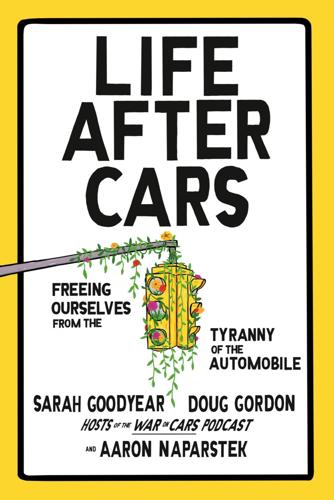
Life After Cars: Freeing Ourselves From the Tyranny of the Automobile
by
Sarah Goodyear
,
Doug Gordon
and
Aaron Naparstek
Published 21 Oct 2025
As we’ll see in the next chapter, when it comes to death and illness caused by cars, we may be more hardened to the fate of millions of our fellow human beings than we think—especially compared with the mourning we witnessed for one well-liked owl on Central Park Drive. 5 Cars Are Killing Us “For over half a century the automobile has brought death, injury, and the most inestimable sorrow and deprivation to millions of people.” So wrote Ralph Nader in his 1965 bombshell book, Unsafe at Any Speed: The Designed-In Dangers of the American Automobile. It would only get worse, he predicted: “A 1959 Department of Commerce report projected that 51,000 persons would be killed by automobiles in 1975. That figure will probably be reached in 1965, a decade ahead of schedule.”
…
We must ignore the soot on the windowsill, or else we would have to admit it is also inside our lungs. The details and the scale of suffering represented by the cold, hard statistics of automobile-induced injury and fatality are difficult to comprehend. So we mostly don’t try. Toward the beginning of Unsafe at Any Speed, Ralph Nader quoted a transportation specialist named Wilfred Owen, who wrote way back in 1946, “There is little question that the public will not tolerate for long an annual traffic toll of forty to fifty thousand fatalities.” “Time,” wrote Nader in his 1965 attack on the negligent auto industry, “has shown Owen to be wrong.”
…
It’s a promising trend that could end up being as important as the introduction of seat belt requirements back in 1968, because it not only acknowledges the problem—it puts the onus on car manufacturers to solve it. These are the types of actions that give us hope. Many people in power know what we need to do to make our societies healthier, just the way those auto executives back in Ralph Nader’s day knew what they had to do—and now we need to force them into action. All the evidence points to reducing car dependence as a vital public health measure. All the evidence tells us that reducing the number of cars, and the number of trips we take in cars, would significantly lengthen our lives and improve the quality of those lives.

Stuck: How the Privileged and the Propertied Broke the Engine of American Opportunity
by
Yoni Appelbaum
Published 17 Feb 2025
GO TO NOTE REFERENCE IN TEXT One of Nader’s Raiders: Art Seidenbaum, “And Wait’ll You Hear What Ralph Nader and His Boys Have to Say About California Land Development,” Los Angeles Times, Oct. 4, 1970, 22. GO TO NOTE REFERENCE IN TEXT “California may keep right on”: “No Overpopulation Here,” Long Beach Press, Aug. 30, 1921. GO TO NOTE REFERENCE IN TEXT The Nader group’s finished report: Robert C. Fellmeth, Politics of Land: Ralph Nader’s Study Group Report on Land Use in California (New York: Grossman, 1973), xi. GO TO NOTE REFERENCE IN TEXT “Land policies play perhaps”: Ibid., 395.
…
But it was three other books that, by mounting versions of the same critique in different spheres, had a particularly profound effect on the years that followed. Jane Jacobs published The Death and Life of Great American Cities in 1961. The following year brought Rachel Carson’s Silent Spring, a warning on the harms of pesticides. And in 1965, Ralph Nader’s Unsafe at Any Speed showed that automobile manufacturers had failed to take even basic measures to save lives. These three books were rooted in skepticism of America’s relentless pursuit of profit and growth, and in horror at its unaccounted costs. They also helped to crystallize a potent critique of governmental failure, as the legal scholar Paul Sabin has argued.
…
But they looked out at the world that Cheney had created—in which density had been largely outlawed, forcing new construction ever farther from urban centers, creating ever more sprawl—and, without any apparent awareness of the irony, decided to double down on Cheney’s prescriptions, which had produced the problem in the first place. In their outrage over developers getting rich by turning land into housing, they failed to consider what would happen to ordinary Californians if housing became scarce. Ralph Nader promised to defend ordinary Americans against the depredations of business, but he seemed unable to grasp that he might need to defend them against the depredations of other Americans. For more than a century, Americans like Frank Duncan had been moving to California seeking opportunity. And for just as long, many of those already in California had been trying to hoard the state’s opportunities and exclude them.

The Rise and Fall of the Neoliberal Order: America and the World in the Free Market Era
by
Gary Gerstle
Published 14 Oct 2022
This New Left revolt against excessive regulation is apparent in Paul Goodman’s cri de coeur, Growing Up Absurd; in the 1962 Port Huron Statement that defined the early goals of the New Left; in the rhetoric that Mario Savio used to frame the ambitions of Berkeley’s 1964 Free Speech movement, an early moment of New Left mass protest; in the early cybernetics movement that inspired the likes of Stewart Brand and Steve Jobs to associate the creation of the personal computer with the quest for individual freedom; and in the determination of Ralph Nader and his political allies to “free” the consumer from repressive corporate and government elites. Freeing the individual and his or her consciousness from the grip of large, stultifying institutions; privileging disruption over order; celebrating cosmopolitanism—and multiculturalism—and the unexpected sorts of mixing and hybridities that emerge under these regimes: All of these beliefs, each of which marinated for years in the political and culture milieux inspired by the New Left, furthered neoliberal aspirations and helped to make it into a hegemonic ideological force.9 Emphasizing the influence of classical liberalism on neoliberalism (and showing how the emancipatory elements of the former resurfaced in the latter) is one way in which this book’s account of neoliberalism is distinctive.
…
Unlike economist Alan Greenspan, who began a long public career as chairman of the Council of Economic Advisers under Gerald Ford, he did not grow up entranced by the novels of Ayn Rand. But Carter did have a muse of his own who filled his ears with thoughts about the need to rethink the relationship between government and the economy. This muse was left-leaning. His name was Ralph Nader. Nader and Carter had first met in the 1960s when Nader gained national visibility with his attack on automobile manufacturers for their indifference to the safety of the cars they were selling. Carter had been attempting unsuccessfully to implement Nader-like policies of consumer protection in the state of Georgia.
…
Part of it dated back to the 1960s, when Great Society and New Left activists alike had tilted against the statism of the New Deal order. Both the attacks by Community Action Programs on big city machines and the New Left’s antipathy to bureaucracy (private and public) had encouraged Democratic Party interest in market-based social policies.40 Ralph Nader and his supporters had embraced the “capture thesis” developed by political scientists, the phrase referring to corporate interests “capturing” the very government agencies meant to regulate their behavior. Rather than battling to free government regulatory bodies from corporate control, many Naderites chose to focus instead on enhancing “consumer sovereignty.”

Ashes to Ashes: America's Hundred-Year Cigarette War, the Public Health, and the Unabashed Triumph of Philip Morris
by
Richard Kluger
Published 1 Jan 1996
Northern liberals partial to government efforts to ameliorate pressing social problems found themselves susceptible to tobacco-state congressmen willing to trade off their votes on measures they would ordinarily oppose but were dear to liberal hearts—like urban renewal funding—in return for keeping government regulators away from the cigarette business. As consumer advocate Ralph Nader commented, “Any group of really cohesive congressmen can have disproportionate power like the tobacco bloc … [and become] a proverbial battering ram, saying in effect to their colleagues, ‘This is our particular bailiwick, and if you ever want us to defer to you someday, you’d better go along with us on this issue.’”
…
As a frequent public speaker and expert witness before Congress, he had a gift for dramatizing the antismoking case and made telling use of props of his own devising, like an ashtray he distributed to congressional offices that was topped by a plastic model of a pair of human lungs, one of which turned black when it had absorbed enough cigarette smoke. But ASH served in large part as a vehicle for Banzhaf, and his unwillingness to share the spotlight and build an organization would ultimately keep him from becoming what he liked to bill himself as in the early days of the antismoking movement—“the Ralph Nader of the cigarette industry.” IV AMERICAN TOBACCO, then ranking second in sales in its industry, and last-place Philip Morris faced different challenges in the late ’Sixties. American, under its new president, ex-salesman Barney Walker, vowed to reverse a seven-year slippage in market share by dramatically altering its product mix, which was 90 percent in unfiltered brands when Walker took over in 1963.
…
In regular contact for several years with staff members at the National Clearinghouse on Smoking and Health and its director, Daniel Horn, Pertschuk was determined that the cigarette makers would not escape serious regulation as they had four years earlier. His hand was notably strengthened by the rising recognition in Congress that legislation backing consumer interests was becoming good politics, as Magnuson’s rejuvenated career and the emergence of Ralph Nader as a serious and widely admired independent consumer advocate were demonstrating. To slow the momentum of the pro-industry bill due from the House Committee, Pertschuk worked behind the scenes to introduce a telling piece of testimony that had fallen into his lap and argued for congressional intervention in television advertising.
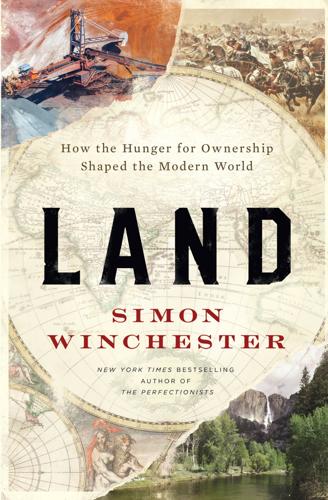
Land: How the Hunger for Ownership Shaped the Modern World
by
Simon Winchester
Published 19 Jan 2021
So I owe my sincerest thanks to Kate Andrews, Fran Aramaki, Patricia Atkinson, Russell Baillie, Gill Baron, Marcy Bidney, Kenny Brown, Patricia Calhoun, Brett Chapman, Stephen Corry, Robert Cottrell, Robin Darwall-Smith, Uri Davis, Philip Deloria, Chris Dillon, Trent Duffy, Judge Caren Fox, David Freese, Donna Fujii, Charles Geisler, Peter Godwin, Jan deGraeve, Jenny Hansell, Robert Horneyold-Strickland, Jamie Howard, Wilson Isaac, Kristen Iversen, Ian Jack, Kirk Johnson, Miranda Johnson, Judy Joseph, Moira Kelly, Mariia Kravchenko, Barbara Lauriat, David Lazan, Robert Lee, Michael Levien, Rebecca Long, J T Moore, Willy van der Most, Ralph Nader, David Neiwert, Henk Pruntel, Hugh Raven, Wendy Reid, Jeanne Ryckmans, Salman Abu Sitta, Steve Small, Jim Smith, Jonathan Steffert, Joanna Storie, Mick Strack, Melanie Sturm, Toni Tack, Iain Thornber, Neal Ulevich, Paul Vercoe, Juliet Walker, Maggie Wells, Michael Wigan, Rick Wilcox, Michael Williams, Angus Winchester (not my son, though by coincidence I have one of that very name), and the indefatigable Rupert Winchester, who kindly helps me with all my books, and most assuredly is my son.
…
The Treaty of Waitangi. Wellington. Bridget Williams Books. 2017. Baker, Alan R. and Gideon Biger (eds.). Ideology and Landscape in Historical Perspective: Essays on the Meanings of Some Places in the Past. Cambridge. Cambridge University Press. 1992. Berkman, Richard L. and W. Kip Viscusi. Damming the West: Ralph Nader’s Study Group Report on the Bureau of Reclamation. New York. Grossman. 1973. Berry, Wendell. The Gift of Good Land: Further Essays Cultural and Agricultural. Berkeley, CA. Counterpoint. 1981. Bowes, John P. Land Too Good for Indians: Northern Indian Removal. Norman. University of Oklahoma Press. 2016.
…
Kairuri: The Measurer of Land. Petone, New Zealand. Highgate. 1988. Egan, Timothy. The Worst Hard Time: The Untold Story of Those Who Survived the Great American Dust Bowl. Boston. Houghton Mifflin. 2006. Fairlie, Simon et al. (eds.). The Land. Bridport, Dorset. March 2006–present. Fellmeth, Robert C. Politics of Land: Ralph Nader’s Study Group Report on Land Use in California. New York. Grossman. 1973. Ferguson, Niall. Empire: How Britain Made the Modern World. London. Allen Lane. 2013. Ferrari, Marco, et al. A Moving Border: Alpine Cartographies of Climate Change. New York. Columbia Books on Architecture. 2018. Foreman, Grant.

Make Your Own Job: How the Entrepreneurial Work Ethic Exhausted America
by
Erik Baker
Published 13 Jan 2025
“Something inside me simply went on strike.”17 Whether they were former NAM executives or not, young professionals in the 1970s exhibited a tremendous appetite for work in the new nonprofit institutions that sprung up in the interstices of the public-private welfare and regulatory states. Applications for nonprofit status tripled between the late 1960s and the late 1970s, when they averaged thirty-six thousand per year. The standard-bearer for the new generation of nonprofit employees was the attorney and consumer advocate Ralph Nader. Much like Cornuelle, Nader viewed government and big business as different manifestations of the same bureaucratic menace, and he insisted that it was better for liberal activists to work to hold government regulatory institutions accountable from the outside than to attempt to reform them from within.
…
By mid-1983 the division took up its own office building on the Apple campus, which featured an expansive atrium decked out with video games, a high-end stereo, and luxury items that Jobs felt exemplified superior craftsmanship. The idea was to create an office environment galvanizing enough that employees would not mind spending most of their waking hours, and more than a few of their sleeping hours, at work. Jobs’s expectations gave even Ralph Nader a run for his money: T-shirts appeared that proclaimed: “90 hours a week and loving it!” For the rest of his life, Jobs would routinely point to the devotion of the Macintosh developers to respond to criticism of his management style. “Ask any member of the Mac team,” he told his official biographer.
…
Alan Kay would later remark, reportedly, that he envisioned the personal computer as the kind of tool that the entrepreneurial knowledge worker as described by Drucker would need to use.39 The most genuinely countercultural aspect of Jobs’s thinking was his conflation of the PC, as a putatively entrepreneurial product, and Apple, as a putatively entrepreneurial company. Jobs shared with Ralph Nader not only a penchant for hundred-hour work weeks and a dislike of furniture, but also a belief that the external mission and internal culture of an organization were inseparably entwined: the organization was either a force for enlightenment and entrepreneurship or it wasn’t. This conflation was on display in the famous Macintosh commercial that Apple aired during the Super Bowl in 1984.
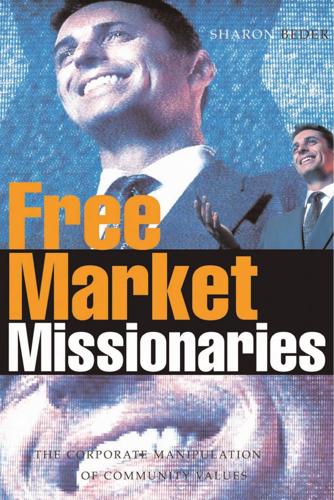
Free Market Missionaries: The Corporate Manipulation of Community Values
by
Sharon Beder
Published 30 Sep 2006
.’; • engaging in specially selected court cases to support business interests; • mobilizing stockholders, perhaps through establishment of a national organization with enough corporate backing – ’muscle’ – to be influential, and utilizing shareholder reports and magazines ‘far more effectively as educational media’ aimed at enlisting their political support; • attacking critics of the system, such as Ralph Nader and Herbert Marcuse, and penalizing those who oppose free enterprise. Powell’s memorandum was circulated to members but the Chamber of Commerce decided it was unwilling to take the lead in such a campaign. Although the memo was confidential, it was leaked to the media and publicized when Powell was appointed by President Richard Nixon to the Supreme Court, as evidence of his inability to be objective.
…
He claims his book is ‘making its way onto both liberal and conservative agendas, as well as the platforms of think tanks, philanthropic foundations, environmental groups, and international banks, among many other organizations’. Gates’ second book, Democracy at Risk: Rescuing Main Street from Wall Street – a Populist Vision for the 21st Century (2000), makes a similar argument, and has been endorsed by people as diverse as Klaus Schwab, president of the World Economic Forum, and consumer rights’ advocate Ralph Nader.67 The European Commission is also keen to encourage shareholder democracy, and to this end is seeking to harmonize corporate government codes in Europe to make it easier for lay people to invest. Frits Bolkestein, European commissioner for the internal market, said in 2002: ‘I want to have a European market in shares, a shareholder democracy, one share one vote.’
…
Board members are then beholden to the CEO for their positions.37 Increasingly, companies have adopted staggered boards, with only one-third of the seats filled each year, so that any organized opposition amongst shareholders cannot control the board after a single vote. 198 FREE MARKET MISSIONARIES When it comes to election of the board of directors, any shareholder wishing to propose alternative candidates has to pay the expense of mailing proxy forms and campaign literature to many thousands of shareholders. In contrast, company management can use company funds to hire firms that specialize in contacting shareholders personally and persuading them to send in their proxies for a particular result. Ralph Nader and Joel Seligman noted in 1983: ‘company insiders have so totally dominated the proxy machinery that corporate elections have come to resemble the Soviet Union’s “communist ballot,” on which only one slate of candidates appears’.38 The people nominated by CEOs for board membership tend to be senior executives of other companies (sometimes retired), many with only nominal shareholdings in the company themselves.39 Lewis Braham writes in Business Week: Americans like to believe we have shareholder democracy.
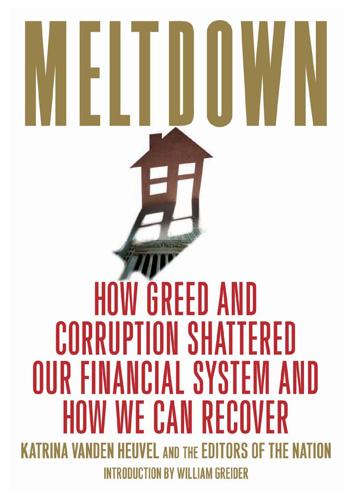
Meltdown: How Greed and Corruption Shattered Our Financial System and How We Can Recover
by
Katrina Vanden Heuvel
and
William Greider
Published 9 Jan 2009
Stiglitiz 191 View from Asia by Walden Bello 196 Born-Again Democracy by William Greider 199 The Suicide Solution by Barbara Ehrenreich 207 The Great Depression II by Nicholas von Hoffman 210 We’re All Minskyites Now by Robert Pollin 213 The Bailout: Bush’s Final Pillage by Naomi Klein 217 Part Four: The Road to Recovery How to Fix Our Broken Economy by Jeffrey Madrick 225 Ending Plutocracy: A 12-Step Program by Sarah Anderson and Sam Pizzigati 234 Trust but Verify by James K. Galbraith and William K. Black 244 King George and Comrade Paulson by Ralph Nader 247 A Big Government Bailout by Howard Zinn 249 Water the Roots by Rev. Jesse L. Jackson 253 America Needs a New New Deal by Katrina vanden Heuvel and Eric Schlosser 255 What Do We Want? An Emergency Town Hall Featuring William Greider, Francis Fox Piven, Doug Henwood, Arun Gupta and Naomi Klein.
…
Paul Krugman’s essays have the snappy smartness his followers have come to expect, but for me the best interpretations of the marketplace and the so-called New Economy come from Robert Pollin, a University of Massachusetts professor of economics, who for one thing helps strip the populist mask from Bill Clinton; Doug Henwood, whose tart humor keeps one awake even when he discusses Wagnerian topics, as in the chapter on globalization, where he calls Ralph Nader “a special case, a man who seems proud of his (locally produced) hair shirt”; Joseph Stiglitz, a Nobel Prize–winning economist who writes with admirable candor about the sellouts of some of his colleagues in the Clinton years; and Roger Lowenstein, a master (as I first learned from his book When Genius Failed) at making our financial pi-rates as interesting as those who sailed with Long John Silver.
…
He has also been honored by TransAfrica Forum, was a recipient of the prestigious Anisfield Wolf Award, and served as editor for The Best American Short Stories of 2003. Bobbi Murray lives in Los Angeles and writes frequently on economic justice issues. She has written for The Nation, Los Angeles Magazine, the LA Times, LA Weekly, AlterNet and others. Ralph Nader, the longtime consumer advocate, was an independent candidate for president in 2008. He has been named by Time magazine as one of the 100 Most Influential Americans in the Twentieth Century. Garrett Ordower is an investigative journalist based in New York. His work has appeared in The Nation, Chicago’s Daily Herald and the Beacon News.
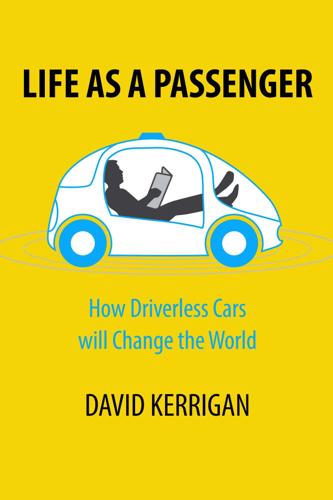
Life as a Passenger: How Driverless Cars Will Change the World
by
David Kerrigan
Published 18 Jun 2017
In 1896 there were only four cars registered in all the United States. Two of them collided with each other in St. Louis. Although the high death toll from widespread car ownership had been the norm decades, it was really the 1960s that saw the first concerted efforts towards improving safety. Ralph Nader’s seminal book, “Unsafe at Any Speed”, exposed the lack of interest in safety matters among major automobile manufacturers. Bridget Driscoll (1851–17 August 1896) has the unenviable position in history of being the first pedestrian victim of an automobile collision in Great Britain. Driscoll was struck by an automobile belonging to the Anglo-French Motor Carriage Company that was giving demonstration rides.
…
However, the Royal Society for the Prevention of Accidents estimate over half a million people had since been killed on UK roads by 2010. “For over half a century, the automobile has brought death, injury and the most inestimable sorrow and deprivation to millions of people.” Page 1, Unsafe at Any Speed [149] Published in November 1965, the first sentence of this landmark book from attorney Ralph Nader did not mince words. The rest of the book continued in the same vein decrying the gap between existing design and attainable safety and the auto industry’s ignoring of the moral imperative to keep people safer. Some 50 years after the widespread emergence of cars, the spotlight was now placed for the first time on the role of Government in defining safety standards in the automotive industry. 1966 saw the US congress pass the National Traffic and Motor Vehicle Act and created the National Highway Traffic Safety Authority (NHTSA) under the auspices of the Department of Transport (DoT).
…
D=NHTSA-2016-0090-1115 [124] https://www.mckinsey.de/files/automotive_revolution_perspective_towards_2030.pdf [125] http://fingfx.thomsonreuters.com/gfx/rngs/SELFDRIVING-SUPPLIERS/010040KW194/index.html [126] https://www.bloomberg.com/graphics/2016-merging-tech-and-cars/ [127] http://www.cnbc.com/2017/01/09/ford-aims-for-self-driving-car-with-no-gas-pedal-no-steering-wheel-in-5-years-ceo-says.html [128] https://www.bloomberg.com/news/articles/2017-02-10/ford-investing-1-billion-in-ex-google-uber-engineers-startup [129] https://medium.com/@ford/building-fords-next-generation-autonomous-development-vehicle-82a6160a7965#.uojw6ib99 [130] http://fortune.com/self-driving-cars-silicon-valley-detroit/ [131] http://mashable.com/2015/10/22/cadillac-autonomous-driving/#WKolOgN4hgqS [132] http://www.cnbc.com/2016/06/16/rolls-royce-ditches-the-chauffeur-in-this-futuristic-concept-car.html [133] https://www.slideshare.net/Altimeter/the-race-to-2021-the-state-of-autonomous-vehicles-and-a-whos-who-of-industry-drivers [134] https://www.forbes.com/sites/oliverwyman/2017/05/17/google-racks-up-more-patents-than-most-automakers-on-connected-and-self-driving-cars/#15cf3e8041ef [135] http://www.theicct.org/blogs/staff/second-million-electric-vehicles [136] http://asirt.org/initiatives/informing-road-users/road-safety-facts/road-crash-statistics [137] https://crashstats.nhtsa.dot.gov/Api/Public/ViewPublication/812013 [138] https://crashstats.nhtsa.dot.gov/Api/Public/ViewPublication/812348 [139] https://www.nytimes.com/2017/03/07/opinion/a-public-health-crisis-that-we-can-fix.html [140] http://www.nsc.org/NewsDocuments/2017/12-month-estimates.pdf [141] https://www.cdc.gov/nchs/fastats/injury.htm [142] http://newsroom.aaa.com/2016/07/nearly-80-percent-of-drivers-express-significant-anger-aggression-or-road-rage/ [143] https://en.m.wikipedia.org/wiki/List_of_countries_by_traffic-related_death_rate [144] http://www.forbes.com/sites/moneybuilder/2011/07/27/how-many-times-will-you-crash-your-car/ [145] https://www.nhtsa.gov/press-releases/traffic-fatalities-sharply-2015 [146] http://www.forbes.com/sites/jensen/2016/10/05/going-from-35092-to-zero-a-plan-to-end-roadway-fatalities-auto-makers-are-invited-to-join/#64ed5a294cb8 [147] https://crashstats.nhtsa.dot.gov/Api/Public/ViewPublication/812319 [148] http://safety.fhwa.dot.gov/intersection/ [149] Ralph Nader, Unsafe at Any Speed, November 1965 [150] https://www.nhtsa.gov/press-releases/new-nhtsa-study-shows-motor-vehicle-crashes-have-871-billion-economic-and-societal [151] http://newsroom.aaa.com/wp-content/uploads/2011/11/2011_AAA_CrashvCongUpd.pdf [152] Door to Door: The Magnificent, Maddening, Mysterious World of Transportation, Edward Humes, 2016 [153] https://theforum.sph.harvard.edu/events/asleep-at-the-wheel/ [154] http://bit.ly/1PQM6Gu [155] http://www.nytimes.com/2016/05/23/science/its-no-accident-advocates-want-to-speak-of-car-crashes-instead.html?

Road to Nowhere: What Silicon Valley Gets Wrong About the Future of Transportation
by
Paris Marx
Published 4 Jul 2022
As Zukin put it, planners are “a relatively powerless group compared to developers who build, and banks and insurance companies who finance the building that rips out a city’s heart.”29 Jacobs supported efforts to “unslum” urban communities and the very aesthetic she prized of “small blocks, cobblestone streets, mixed-uses, local character” has been adopted as “the gentrifiers’ ideal.”30 Greenwich Village may have been maintained for people like Jacobs, but the failure of campaigns against urban highways to contend with larger economic forces did not stop the suburban trend, and eventually caused the working class to be forced out of downtown neighborhoods by rising prices, robbing them of the very cultural diversity Jacobs sought to preserve. While Jacobs’s campaign in New York City was successful, most of the highways proposed elsewhere in the United States were built as planned. Around the same time as people were trying to stifle highway projects, Ralph Nader was also gaining attention as a consumer advocate with a focus on the automobile. In his 1965 book Unsafe at Any Speed, Nader exposed the automotive industry’s disregard for safety, which included ignoring clear safety hazards, investing more in vehicle styling than safety features, and efforts to blame drivers for harms that could have been avoided through better practices on the part of the automakers.
…
There have been a growing number of incidents involving Autopilot—some of which, tragically, have even taken lives—and instead of addressing the concerns with the system or taking additional safety precautions, Musk has pushed forward, even allowing Tesla drivers to use beta software versions on public roads, placing other drivers and pedestrians at risk. In a sensible world, regulators would have acted to put the brakes on Tesla’s deployment of a driving system that is not ready to be used by the public. But only now, after years of crashes and vocal demands for action by a growing chorus of people, including safety advocate Ralph Nader, does it appear that the technology will finally undergo regulatory scrutiny. As of April 2021, the National Highway Traffic Safety Administration (NHTSA) had opened twenty-eight investigations into Tesla vehicle crashes—twenty-four of which were still active—and the NTSB had opened nine investigations of its own.24 In those crashes, Autopilot-enabled Tesla vehicles slammed into transport trucks, fire engines, police cars, trees, medians, and more, killing and injuring their passengers in the process.
…
In challenging this reality, we cannot simply focus on the technology—though we must have solid critiques of how it works and who it serves as we try to halt its deployment. We must also consider how the need for capital accumulation is driving the change, and how even if we regulate some technologies and stop others, the direction of travel will continue toward tech’s vision of the city. Think back to Jane Jacobs and Ralph Nader. Jacobs and those inspired by her work stopped some freeways from being built, while Nader and his allies undoubtedly made cars safer, saving many lives in the process. But the expansion of suburbs and the growth of automobile dependence continued with harmful consequences. We need cities that are built for their residents, that improve their quality of life, and that consider their needs instead of opening the floodgates to technologies and gimmicks thought up by billionaires who have a very different experience of the city than most people.

The Economics Anti-Textbook: A Critical Thinker's Guide to Microeconomics
by
Rod Hill
and
Anthony Myatt
Published 15 Mar 2010
Think, for example, of the investments some companies make in a reputation for quality, or those that offer real guarantees and warranties to distinguish their higher-quality products from those of competitors. None of these commonplace features of the business world has a place in the textbook world of perfect information. In the United States, Ralph Nader has spent a lifetime improving the odds for consumers through organizing citizen and consumer groups and pressing Questions for your professor: Isn’t incomplete and asymmetric information an important problem for consumers? Does the default assumption in the textbook of complete and perfect information divert attention away from these problems?
…
‘Think tanks’ funded by corporations and foundations established by the very wealthy churn out policy papers guaranteed to reach the desired conclusions; they provide talking heads for television and op-eds for the newspapers.10 Capital cities swarm with business lobbyists. In Washington, a city Ralph Nader refers to as ‘corporate occupied territory’, registered lobbyists outnumber members of Congress by sixty-five to one and spend $200 million a month to advance their clients’ interests (Moyers 2006). The recent battle over healthcare reform in the United States saw the industry (largely health insurance and pharmaceutical corporations) employ six lobbyists for every member of Congress, spending hundreds of millions of dollars to block competition from public health insurance and other reforms.
…
Some spending 158 Questions for your professor: Do consumption externalities exist? If so, why doesn’t the textbook mention them? Air pollution ‘Unfortunately, the will of our elected officials to curb air pollution and the in difference of corporate polluters to the silent cumulative violence they inflict on our people through air pollution persists.’ Ralph Nader (2004b: 168) The burning of fossil fuels creates carbon monoxide, sulphur dioxide, nitrogen oxides, hydrocarbons and fine particulate matter. Breathing these invisible pollutants and other pollutants that form from them (such as ozone) damages the interior of the lungs and directly influences respiratory and cardiovascular illnesses and lung cancers (Davis 2002: 70).
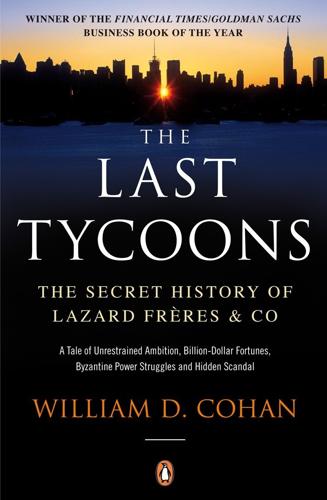
The Last Tycoons: The Secret History of Lazard Frères & Co.
by
William D. Cohan
Published 25 Dec 2015
Felix was proud to be solely an adviser whose wisdom was sought out internationally for cogent, insightful advice on mergers and acquisitions: nothing more, nothing less--and not a trace of apology for not being the top underwriter of junk bonds (a product he railed against) or equity offerings. No frustration with not being a private-equity investor. The Big Boys, a 1986 book by Ralph Nader and William Taylor, referred to Felix as "the interstitial man," someone who gets in the middle of things. Raymond Troubh, a former Lazard partner, was one of many people quoted by Nader and Taylor about Felix. "Felix is enveloping the world," Troubh confided. "He is sort of the Henry Kissinger of the financial arena.
…
While those watching the developments closely had no idea that Nixon had personally intervened, questions began to be raised almost immediately about what had really transpired to get McLaren and Kleindienst to change course so radically and to agree to a settlement that allowed ITT to keep the Hartford. Then, on August 23, Justice filed the antitrust settlement documents in court, beginning a mandatory thirty-day public review period. Reuben Robertson, a brilliant young lawyer who had been working with Ralph Nader from the start to block the ITT-Hartford merger, wrote McLaren on September 21 objecting to the antitrust settlement: "We wish to object most strongly to the veil of secrecy that has been drawn over the Antitrust Division since announcement of the decree, which has made full evaluation of the settlement...a virtual impossibility."
…
If by late 1974 Felix had begun the process of public rehabilitation, it was equally true that there was hardly a government entity that had not investigated, or itself been the subject of an investigation into, Felix's and Lazard's role in ITT's acquisition of the Hartford. The insurance commissioner of Connecticut had ruled twice. The federal courts in Connecticut had ruled repeatedly on the matter of ITT and antitrust. The state courts in Connecticut had ruled on Ralph Nader's lawsuits. The House of Representatives had conducted hearings into boxes of purloined ITT documents. The Senate Judiciary Committee had dredged up the whole sordid affair as part of the Kleindienst confirmation hearings. The Justice Department had settled antitrust claims against ITT after intervention from Nixon, Kleindienst, and Felix.

Foolproof: Why Safety Can Be Dangerous and How Danger Makes Us Safe
by
Greg Ip
Published 12 Oct 2015
The federal government had begun to assert its oversight over the economy and the environment during the Progressive Era, and in the 1960s, that oversight expanded significantly, most noticeably onto the highways. The catalyst was the publication in 1965 of Unsafe at Any Speed: The Designed-In Dangers of the American Automobile by Ralph Nader. Nader had worked for Daniel Patrick Moynihan at the Department of Labor, and his book exposed how the auto manufacturing industry had knowingly built dangerous features into their cars, such as chrome on the dashboard that reflected sun into drivers’ eyes and hood ornaments that were unnecessarily dangerous to pedestrians.
…
When the FAA studied the proposal, it concluded that the measure would prevent five aviation deaths over a decade. But raising the cost of a flight would prompt many families to drive rather than fly, causing an additional eighty-two road deaths. One congressman took the FAA to task for its “ghoulish cost/benefit ratio.” So did Ralph Nader. The FAA’s decision, he and a coauthor wrote, “protects theoretical children driving in cars at the expense of real flesh-and-blood infants whose safety is unquestionably compromised when flown as a lap-baby.” To date, the FAA has remained steadfast in its refusal to require child seats, even while recommending that parents use them.
…
Grossman, “Effects and Costs of Requiring Child-restraint Systems for Young Children Traveling on Commercial Airplanes,” Archives of Pediatric Adolescent Medicine 157 (2003): 969–974. 40 in an editorial: http://rds.epi-ucsf.org/ticr/syllabus/courses/4/2012/11/29/Lecture/readings/airplane%20seats%20editorial%20101303.pdf. David Bishai, “Hearts and Minds and Child Restraints on Airplanes,” Archives of Pediatric Adoleschent Medicine 157 (2003): 953–954. 41 The FAA’s decision: Ralph Nader and Wesley Smith, Collision Course: The Truth about Airline Safety (Blue Ridge Summit, Pa.: TAB, 1994). 42 added travel time: Steven A. Morrison and Clifford Winston, “Delayed! U.S. Aviation Infrastructure Policy at a Crossroads,” in Aviation Infrastructure Performance: A Study in Comparative Political Economy, Clifford Winston and Gines de Rus, eds.
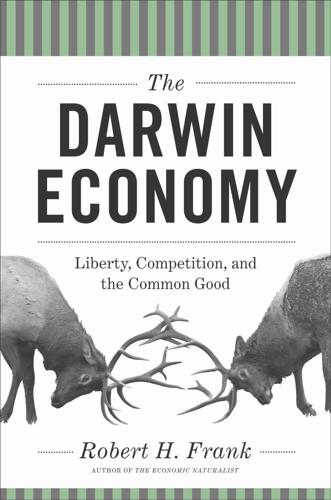
The Darwin Economy: Liberty, Competition, and the Common Good
by
Robert H. Frank
Published 3 Sep 2011
When a federal agency proposes a regulation of this sort, the public and other affected parties have an interval of time, usually sixty days, to comment on it. Shortly after the CAB announced its proposal, a passionate brief was filed by the Aviation Consumer Action Project (ACAP), a group founded by Ralph Nader in Washington, D.C. ACAP’s ostensible mission is to protect airline passengers from being exploited by air carriers. In its filing, it objected that if the CAB adopted its proposal, the burden of waiting for the next available flight would fall disproportionately on the poor. As in other arenas, ACAP feared, the rich would be empowered to buy their way out of the hassles of life, while the poor were forced to endure them.
…
With careful attention to design details, virtually every public policy decision that does not reflect what people are willing to pay for the alternatives at issue can be transformed to produce a better outcome for everyone involved. Those who resist such changes would do well to imagine themselves in the role of Ralph Nader waving a court injunction that would block a low-income passenger from volunteering to accept compensation for agreeing to take a later flight. Why Efficient Policies Are Often Impossible without Income Transfers Conservatives, through their opposition to income transfers, have been an even bigger obstacle to the adoption of efficient public policies.
…
On the contrary, they understand that when valuable resources, such as the air we breathe, are free, people tend to use them inefficiently. This tax actually makes it possible for you to purchase more of the things you value. If libertarian antitax rhetoric had blocked implementation of this tax, it would have been like Ralph Nader’s Aviation Consumer Action Project having succeeded in its effort to block airlines from offering compensation to volunteers who relinquished their seats on overbooked flights. As discussed in chapter 7, using the price system to allocate scarce resources makes the economic pie larger, whether the resources in question are seats on an overbooked flight or air currents with limited capacity to disperse SO2.

Days of Destruction, Days of Revolt
by
Chris Hedges
and
Joe Sacco
Published 7 Apr 2014
And though many a conservative think-tanker could try to punch holes in its arguments no one can remain unmoved or unsettled by its brilliantly documented reportage from the precipice of a society that prefers to turn a blind eye to its nightmarish underside.” —The Times (Saturday Review) “[B]rilliant combination of prose and graphic comics.” —Ralph Nader “Days of Destruction, Days of Revolt is as moving a portrait of poverty and as compelling a call to action as Michael Harrington’s ‘The Other America,’ published in 1962.” —Boston Globe “Days of Destruction, Days of Revolt is a gripping and thoroughly researched polemic.” —Grantland “[A] growling indictment of corporate America.”
…
They got a four-day permit in the fall of 2011 and used the time to create an infrastructure—a medic tent, a kitchen, a legal station, and a media center—that would be there if the permit was not extended. The National Park Service did grant them an extended permit, but finally ordered the encampment shut down at the end of January 2012. “We do have a grand strategy,” says Zeese, who was the spokesman for Ralph Nader’s 2004 presidential campaign. “Nonviolent movements shift power by attacking the columns that hold the power structure in place. Those columns are the military, police, media, business, workers, youth, faith groups, NGOs, and civil servants. Every time we deal with the police, we have that in mind.
…
Anton also transcribed many hours of transcriptions, as did Chris Hohmuth and my son Thomas. Robert Scheer, who sets the gold standard for journalism and commentary, and Zuade Kaufmann, who publishes the Web magazine Truthdig, where I write a weekly column, along with the talented editor Tom Caswell, give me a weekly outlet and unqualified support. I would like to thank Ralph Nader, who knows more about corporate power and has been fighting corporations longer and more effectively than any other American, for his wisdom and friendship, along with Kevin Zeese, Margaret Flowers, Steve Kinzer, Peter Scheer, Kasia Anderson, Ann and Walter Pincus, Maria-Christina Keller, Lauren B.

Power and Progress: Our Thousand-Year Struggle Over Technology and Prosperity
by
Daron Acemoglu
and
Simon Johnson
Published 15 May 2023
In consequence, the political and economic landscape of the United States looked very different by the 1970s than in the early decades of the twentieth century. Gone was the overwhelming political and economic clout of mega-businesses, such as the Carnegie Steel Company and John D. Rockefeller’s Standard Oil. Emblematic of these changes was the consumer protection activism led by Ralph Nader, whose book Unsafe at Any Speed, published in 1965, was a manifesto for keeping corporations accountable. In this instance, activism focused on automobile manufacturers, although Nader’s target was all misbehaviors by business, especially big business. Several iconic government regulations resulted from consumer activism.
…
Take it one step further, and you get “trickle-down economics,” a term identified today with President Ronald Reagan’s economic policies in the 1980s, including the idea of cutting taxes on the very rich: when the rich face lower taxes, they will invest more, increasing productivity and benefiting everybody in society. Applying this perspective to regulation leads to conclusions that are diametrically opposed to the ideas that energized Ralph Nader and other consumer activists. According to this free-market view, if the market economy is working well, regulation is at best unnecessary. If incumbent firms are marketing unsafe or low-quality products, consumers will be upset, and this creates an opportunity for other companies or new entrants to offer better alternatives, to which consumers will enthusiastically switch.
…
The previous decades had witnessed stinging criticisms of government regulations and more voices in favor of the market mechanism. Nevertheless, the impact of the Friedman doctrine is hard to exaggerate. At one fell swoop, it crystallized a new vision in which big businesses that made money were heroes, not the villains that Ralph Nader and his allies painted them as. It also gave business executives a clear mandate: raise profits. The doctrine also received support from a different angle. Another economist, Michael Jensen, argued that managers of publicly listed corporations were not sufficiently committed to their shareholders and were instead pursuing projects that glorified themselves or built wasteful empires.
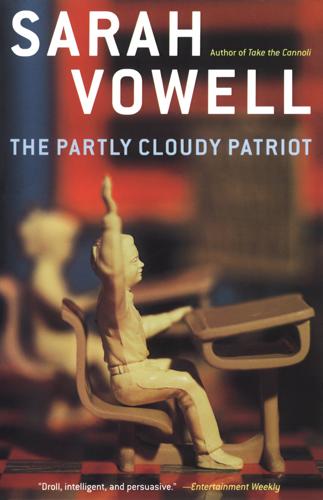
The Partly Cloudy Patriot
by
Sarah Vowell
Published 26 Aug 2002
The litany closed like an old-fashioned oration. Thus saith the talk show host, “I believe I have voted for both Democrats and Republicans. Am I either one? Absolutely not. Ladies and gentlemen, I am an American.” At which point, I, in my living room, clapped. One of the items on the Green Party candidate Ralph Nader’s platform is election day voter registration. Theoretically, I support anything that increases voter turnout. On the other hand, what’s easier than filling out a card with your address on it four weeks before the election? Christ, this thing’s been going on for over a year now. Who are these lazy idiots who can’t pay attention more than five minutes before they cast their votes?
…
The bus boycotters not only introduced a twenty-six-year-old pastor by the name of Martin Luther King, Jr., into national public life but, after many months of car pools, walking, and court fights against bus segregation, got the separate but equal doctrine declared illegal once and for all. It’s not just people on the right like Katherine Harris and Ted Nugent who seem especially silly being likened to Parks. I first cringed at this analogy trend at the lefty Ralph Nader’s October 2000 campaign rally in Madison Square Garden. Ever sit in a coliseum full of people who think they’re heroes? I was surrounded by thousands of well-meaning, well-fed white kids who loved it when the filmmaker Michael Moore told them they should, like Rosa Parks, stand up to power, by which I think he meant vote for Nader so he could qualify for federal matching funds.

To Serve God and Wal-Mart: The Making of Christian Free Enterprise
by
Bethany Moreton
Published 15 May 2009
In 1973, Oklahoma Christian College (now University) had commissioned a Gallup poll on the political orientation of college students. The results con�firmed their worst fears. 151 TO SERVE GOD AND WAL - �M ART Asked to rank professional fields by their ethical standards, students placed businessmen near the bottom. Consumer activist Ralph Nader won the honors in individual esteem, and the United Nations in the institutional category; the Republican Party and the CIA were last. Almost half favored nationalizing the oil industry. Moreover, while one-�third of€ freshmen in the survey iden�ti�fied themselves as leftists, more than half of seniors did so.
…
Increased scrutiny and new regulatory agencies—the Environmental Protection Agency, the 181 TO SERVE GOD AND WAL - Â�M ART Occupational Safety and Health Administration, the Consumer Product Safety Commission—meant that in the span of a few short years, the nation now speciÂ�fied standards for evÂ�ery stage of the life cycle of consumer goods, from the effluÂ�ents released in their production to their packaging to the highways they moved over and the credit available for purchasing them.33 Ralph Nader troubled the sleep of many executives with proposals like the 1976 manifesto Taming the Giant Corporation, which advocated an employee bill of rights and community involvement in corporate decision-Â�making. Though Nader’s initiatives lacked the activist muscle to present a real threat, they kept the legislative alternatives to laissez-Â�faire in sight.34 The free-Â�market economist Milton Friedman visited Harding College in the winter of 1973 to ask urgently “Can we halt Leviathan?”
…
And though Wal-Â�Mart and its fellow serÂ�vice providers quickly realized SIFE’s potential for recruiting, screening, and training new employees, the orÂ�gaÂ�niÂ�zaÂ�tion first entered corporate funding streams through PR departments concerned with speÂ�cific image issues. Accordingly, SIFE addressed not Karl Marx or Rosa Luxemburg but Rachel Carson and Ralph Nader, and it did so in the idiom of Christian free enterprise. With Shewmaker chairing the SIFE board and the energetic Rohrs at€the helm, the orÂ�gaÂ�niÂ�zaÂ�tion kept SIFE’s potential in front of its friends. Missouri governor John Ashcroft, a member of Leaders of the Ozarks, proclaimed a statewide “Free Enterprise Week,” as did his Arkansas counterpart, Bill Clinton.41 In 1985, the Leaders hosted an “Ozarks 201 TO SERVE GOD AND WAL - Â�M ART Against Government Waste” fundraiser for SIFE featuring chemical magnate J.
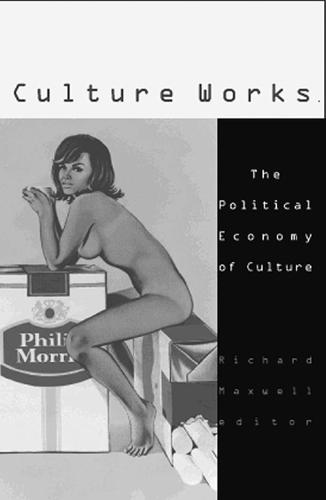
Culture works: the political economy of culture
by
Richard Maxwell
Published 15 Jan 2001
See, for example, Susan Faludi, Backlash: The Undeclared War against American 105 Inger 60. 61. 62. 63. 64. 65. 66. 67. 106 L. Sto l e Women (New York: Doubleday, 1994), first published by Crown Publishers in 1991; Naomi Wolf, The Beauty Myth: How Images of Beauty Are Used against Women (New York: Doubleday, 1994), first published by William Morrow in 1991. See, for example, Ralph Nader, Unsafe at Any Speed (New York: Grossman Publishers, 1965); Ralph Nader, ed., The Consumer and Corporate Accountability (New York, Chicago, San Francisco, and Atlanta: Harcourt Brace Jovanovich, 1973). For an excellent discussion of the rise of commercial mass media, see Gerald J. Baldasty, The Commercialization of News in the Nineteenth Century (Madison: University of Wisconsin Press, 1992).
…
By focusing on advertising’s excesses rather than its lacking consumer information, this form of criticism posed, and still poses, a threat to Madison Avenue that is very limited by comparison with the challenges mounted during the 1930s. Nevertheless, the 1960s witnessed a partial rebirth of the consumer movement. Unlike their 1930s counterparts, however, the new consumer advocates did not make advertising their primary focus. Led by Ralph Nader, the new movement was mostly concerned with faulty production practices, including manufacturers’ negligent attitudes toward consumers’ safety.60 When Nader finally attempted to establish an Institute for the Study of Commercialism in the 1990s, he was frequently hampered by a lack of funding. The advertising industry, on the other hand, experienced no such setbacks.
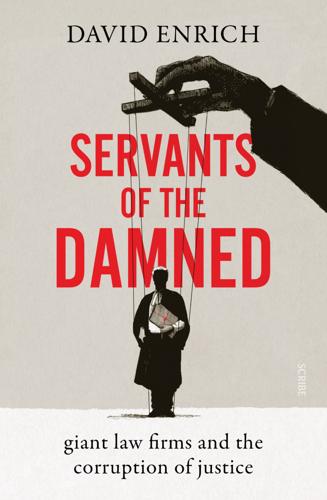
Servants of the Damned: Giant Law Firms and the Corruption of Justice
by
David Enrich
Published 5 Oct 2022
(It didn’t hurt that Pogue’s son, Dick, was a partner there.) The 1967 merger of the two firms more than doubled the size of Jones Day’s team in the capital. For the time being, the D.C. office would operate as a semiautonomous unit of Jones Day. The timing was ideal. President Lyndon Johnson and Ralph Nader were ushering in an era of government regulation. Corporations needed a law firm that could help them navigate these tricky waters. The D.C. office, its walls lined with modern art, took flight, propelled by Pan Am, its biggest customer. Specialists in government contracts were brought in, toting enormous corporate clients.
…
Virginia’s minimum prices were crafted to address the fact that “lawyers have slowly but surely been committing economic suicide as a profession,” as a bar association committee put it when it proposed the fee schedule. The minimum fees were good for lawyers, but not for consumers. They were also, in the most literal sense, anticompetitive. That was the argument made by the Goldfarbs’ lawyer, a Ralph Nader acolyte named Alan Morrison. The bar association insisted that it was exempt from antitrust laws because theirs was a “learned profession,” not a traditional industry. In June 1975, in a unanimous decision written by Chief Justice Warren Burger, the Supreme Court sided with the Goldfarbs. Lawyers and law firms might be “learned,” but they were also in business.
…
TO FILL A VACANCY on the Consumer Product Safety Commission, Trump nominated another Jones Day partner, Dana Baiocco. The CPSC has a vital role: It oversees more than fifteen thousand types of products, from baby toys to garage openers, and it can issue public warnings about faulty products or sue companies to force them to recall those products. Since its creation in 1972—a response to Ralph Nader’s movement for corporate responsibility and consumer rights—the CPSC has served as a last line of defense for people who unwittingly buy things that turn out to be deadly. Baiocco, who got a journalism degree in college but opted for a career in the law, was not a natural choice for an agency whose duty was to protect people against powerful companies.

Fortunes of Change: The Rise of the Liberal Rich and the Remaking of America
by
David Callahan
Published 9 Aug 2010
45 they had begun to distance themselves from big business. In 2000, Al Gore ran one of the most populist campaigns in memory—“the people against the powerful”—in which he vowed to institute tougher regulations on business and to preserve the Clinton administration’s tax hikes on the rich, despite a large budget surplus. Ralph Nader dismissed the differences between Bush and Gore as negligible—“Tweedle Dee versus Tweedle Dum”—when in fact the two candidates could hardly have been more stark in how their policies would affect the bank accounts of the super-wealthy. Bush proposed record tax cuts for the rich, while Gore opposed these cuts as an upward redistribution of wealth.
…
Mott never forgot his roots, though, and took pride in driving a Volkswagen, not a G.M.-made car. Mott also once gave $1,000 to a neighborhood group in Detroit that was battling G.M. to stop the construction of a new auto plant. Mott was about as good a rich friend as liberal activists could hope for, and when he died in 2008, Ralph Nader—the former G.M. nemesis and a frequent beneficiary of Mott’s largesse—commented that Mott “was about the most versatile, imaginative philanthropist of his time.” What Nader admired most about Mott was that he was a “pioneer,” willing to take on issues that the big foundations c12.indd 263 5/11/10 6:28:18 AM 264 fortunes of change weren’t yet ready to touch, in this way pushing the envelope of liberal philanthropy.3 George Pillsbury was another key figure in the wealthy liberal circles of this era.
…
Schervish, “Why the $41 Trillion Wealth Transfer Estimate Is Still Valid: A Review of Challenges and Questions,” Journal of Gift Planning 7, no. 1 (January 2003): 11–15, 47–50. 2. Adam Bernstein, “Flamboyant Philanthropist and GM Heir Stewart Mott,” Washington Post, June 14, 2008, B6. bnotes.indd 305 5/11/10 6:29:37 AM 306 notes to pages 264–288 3. “Ralph Nader’s Statement on Stewart Mott and Tim Russert,” PR Newswire, June 13, 2008. 4. Susan Ostrander, Money for Change: Social Movement Philanthropy at Haymarket (Philadelphia: Temple University Press, 1995), 9. Conclusion: A Benign Plutocracy? 1. Victoria McGrane, “Durbin Goes after Bankers . . . Again,” Politico, May 13, 2009. 2.
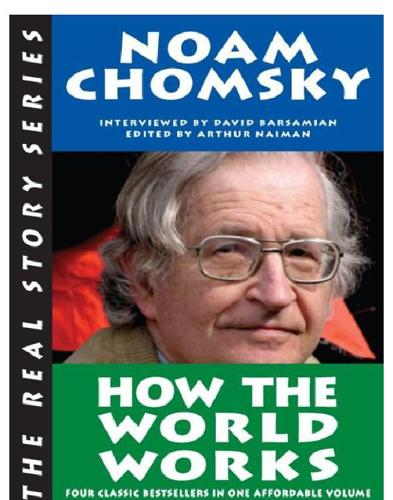
How the World Works
by
Noam Chomsky
,
Arthur Naiman
and
David Barsamian
Published 13 Sep 2011
The main effect has been to decrease unionized labor. Put a lot of unskilled labor into the workplace, make conditions so awful that people will take virtually any job, maybe throw in some public subsidy to keep them working, and you can drive down wages. It’s a good way to make everybody suffer. Ralph Nader calls the Republicans and the Democrats “Tweedledum and Tweedledee.” There’s never been much of a difference between the two business parties, but over the years, what differences there were have been disappearing. In my view, the last liberal president was Richard Nixon. Since him, there’ve been nothing but conservatives (or what are called “conservatives”).
…
I’m not a great tactician, and maybe this is a good way to stir people up, but I think it would be better for them to think through the issues and figure out the truth. Then they’ll stir themselves up. Crime: in the suites vs. in the streets The media pays a lot of attention to crime in the streets, which the FBI estimates costs about $4 billion a year. The Multinational Monitor estimates that white-collar crime—what Ralph Nader calls “crime in the suites”—costs about $200 billion a year. That generally gets ignored. Although crime in the US is high by the standards of comparable societies, there’s only one major domain in which it’s really off the map—murders with guns. But that’s because of the gun culture. The overall crime rate hasn’t changed much for a long time.
…
A large part of that is advertising, which is tax-deductible, so we all pay for the privilege of being manipulated and controlled. And of course that’s only one aspect of the campaign to “regiment the public mind.” Legal barriers against class-based solidarity actions by working people are another device to fragment the general population that are not found in other industrial democracies. In 1996, Ralph Nader ran for president on the Green Party ticket, and both the Labor Party and the Alliance held founding conventions. The New Party has been running candidates and winning elections. What do you think of all this? Allowing new options to enter the political system is—in general—a good idea. I think the right way to do it might be the New Party strategy of targeting winnable local elections, backing fusion candidates and—crucially—relating such electoral efforts to ongoing organizing and activism.

American Foundations: An Investigative History
by
Mark Dowie
Published 3 Oct 2009
The problem with this thinking-and it is central to any evaluation of organized philanthropy-is that foundations consider it good grantmaking to fund research projects that document social pathologies and to recommend ways to study them further, perhaps even ameliorate them , all the while protecting corporate capitalism. Social Movements Foundations should do things that make contemporaries uncomfortable. That's the only way change can occur. -Peter Goldmark, former president, Rockefeller Foundation Never has so much money led to so few changes. -Ralph Nader Conservatives are eager to invoke Tocqueville and to call for the return of a society of dedicated volunteers with an infinite variety of "religious, moral, serious and futile," interests and tastes. Yet they are less tolerant of associations whose goals and tendencies are inimical, even repugnant to their own political or moral sensibilities.
…
They are "reshaping politics and economics at both the domestic and global levels," according to Lester Salamon, director of the Center for Civil Society Studies at Johns Hopkins University. "I believe it is as important a development to the latter part of the twentieth century as the rise of the nation state was at the end of the nineteenth century."" Citizen initiatives are generally conceived by visionaries like Mahatma Gandhi, Florence Nightingale, Muhammad Yunus, and Ralph Nader, whose ideas are then expressed in organizations seeded by philanthropists, singular or organized. Once established, the organizations they fashion tend to become self-sufficient, supported by the very citizens they are created to serve. The process is one of experimentation, leading first to activism and then to the engineering of nonviolent social change.
…
In 1970 sixty-five foundations made 311 grants totaling $11 million to social activists. It was a small investment but over thirty times the amount given in the same category a decade earlier. Since 1960 a handful of large foundations had entered the game, notably Ford, Carnegie, Rockefeller, Sloan, and Lilly. In 1970 Carnegie granted Ralph Nader $55,000 to open the Center for the Study of Responsive Law; by the end of the decade, over fifty national organizations, with budgets totaling in the millions, were associated with the center. John Gardner received $20,000 to launch Common Cause; the Ford Foundation made generous grants to the NAACP; and the Field Foundation funded the Center for Defense Information and the Center for National Security Studies-from which Admiral Gene LaRocque and former intelligence agent Morton Halperin fed vital nonclassified military data to the antiwar movement.23 The 1970s were the heyday of progressive movement philanthropy.
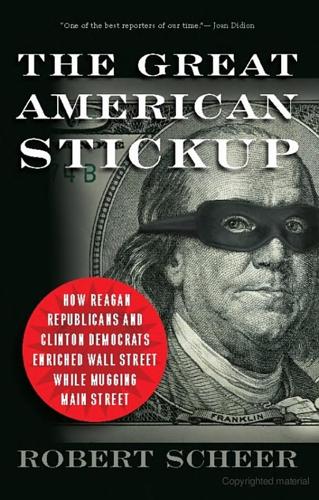
The Great American Stickup: How Reagan Republicans and Clinton Democrats Enriched Wall Street While Mugging Main Street
by
Robert Scheer
Published 14 Apr 2010
Aside from William Safire’s columns and a small number in a similar vein, including mine in the Los Angeles Times, a review of the contemporary media finds little in the way of serious discussion of possible objections to the legislation. Safire, the Times’ conservative columnist who had worked for Richard Nixon and was not normally considered a Ralph Nader type, nevertheless understood the threat of corporate power run amok. Among the few to sound the alarm, he raised his voice alongside that of Nader, pointing out that a major positive consequence of the New Deal regulations was that commercial banks had been prevented from gambling with depositors’ savings, which were insured by the Federal Deposit Insurance Corporation, created by Glass-Steagall.
…
Jackson continued to receive lucrative contributions from Weill for his enterprises, and Weill achieved the moral beard as an “enlightened” capitalist. But Weill also got something more important to the bottom line: Jackson as a shill for the radical deregulation of the financial industry. Of course, Jackson was not the only progressive to weigh in on banking deregulation. Its biggest critic was legendary citizen activist Ralph Nader, a DC veteran not easily snowed by anyone, including Jackson. Nader continued to sound the alarm, as did a host of community-based groups working against discrimination in housing. But what Jackson’s endorsement of the bill accomplished was to provide the Clinton administration with cover, especially from members of the Congressional Black Caucus.

The Driving Machine: A Design History of the Car
by
Witold Rybczynski
Published 8 Oct 2024
A particularly popular model was the two-door Monza coupe, which had bucket seats, automatic transmission, deluxe trim, and special upholstery, and accounted for more than half of Corvair sales. The Monza taught an important lesson: buyers of compact cars were attracted to smaller cars, but they valued the same features as buyers of larger models. By 1965, General Motors had sold 1.6 million Corvairs. That same year, Ralph Nader, a consumer activist, published Unsafe at Any Speed, a critique of the safety record of the American car industry. The best-selling book became a cause célèbre, and led to congressional hearings and the resulting National Traffic and Motor Vehicle Safety Act. Nader’s chapter on the Corvair accused GM of jeopardizing safety to increase profits, and denounced the car as inherently dangerous.v The Corvair did have a tendency to oversteer—that is, to turn more than the amount commanded by the driver.
…
Russell Hayes, The Big Book of Tiny Cars: A Century of Diminutive Automotive Oddities (Beverly, MA: Motorbooks International, 2021). Thomas Hine, Populuxe (New York: Knopf, 1996). John Lukacs, Outgrowing Democracy: A History of the United States in the Twentieth Century (Garden City, NY: Doubleday, 1984). Ralph Nader, Unsafe at Any Speed: The Designed-In Dangers of the American Automobile (New York: Grossman, 1965). L. J. K. Setright, Drive On! A Social History of the Motor Car (London: Granta, 2002). Penny Sparke, A Century of Car Design (Hauppauge, NY: Barron’s, 2002). Gary Witzenburg, “The 10 Most Beautiful Cars according to Leading Automotive Designers,” Car and Driver, updated November 21, 2022.

Democracy Incorporated
by
Sheldon S. Wolin
Published 7 Apr 2008
Instead, electoral democracy was subverted in the 2000 election by Republican elites assisted by toadying conservative appointees on the Supreme Court; by a code of near silence on the part of the mass media; and by a supine opposition party. The opposition failed to alert the citizenry to the threat posed by the display of managed democracy in Florida and its less publicized equivalents elsewhere in the nation; instead Democrats blamed Ralph Nader. The events heartened the apologists for Superpower who have set about to discredit democratic elections, reducing their status from a first principle to a strategy and, in effect, justifying machinations (sic) that engineered a coronation rather than an election. vi Liberal education is the necessary endeavor to found an aristocracy within democratic mass society.
…
The historical role of third parties has been to force the major parties to cherry-pick third party proposals, typically those of a democratic or social democratic tendency. The 2004 presidential election marked the tragicomic playing out of the ineffectualness of third parties: the Democrats employed every dirty trick possible to discourage Ralph Nader from merely gaining a place on the presidential ballot for November 2004. At the same time the Republicans were deploying resources to enable Nader, their severest critic, to secure a place on the ballot. The episode, in its absurdity, shed a sharp light on how the two major parties connive to create as many obstacles as possible—in the form of requirements—for discouraging genuine alternatives to the established parties and their policies.
…
When they did not caricature, they virtually erased the attempts of third parties to present the electorate with alternative policies and candidates; even Howard Dean, a conventional candidate though an unwelcome one to the party establishment, was pilloried as an extremist and ridiculed as “out of control.”3 The perfect illustration of a rigidly controlled system at which both parties connive was the so-called presidential debates of 2004. In a fog of vacuous answers to insipid questions the public was treated as props, passive guests rather than citizen-participants. One might reasonably wonder what educational character those debates might have had if, say, Ralph Nader had been allowed to press Bush on issues of corporate power, or Dennis Kucinich had confronted Bush on the likely consequences of his proposals for reforming the Social Security system, or Howard Dean had been present to pursue the issue of a calamitous war and the justification for killing thousands of Iraqis while reducing large parts of their society to rubble.
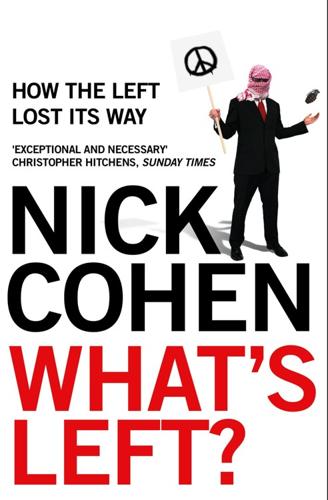
What's Left?: How Liberals Lost Their Way
by
Nick Cohen
Published 15 Jul 2015
If America seems a greedy and overweening power, that is partly because its people have willed it. They preferred George Bush to both Al Gore and Ralph Nader. These are harsh judgments but we live in harsh times. A harsh judge of my former editor would have noted that al-Qaeda declared war on the United States when Bill Clinton was its President and Al Gore its Vice-President, and that Islamism was the sworn enemy of the human rights that robust campaigner for the underdog, Ralph Nader, had spent his life defending. Michael Moore deserved credit for realizing that the dead of New York included people who did vote for Al Gore and Ralph Nader, but then he went and spoilt it all by bellowing: ‘If someone did this to get back at Bush, they did so by killing thousands of people who DID NOT vote for him!

Media Control: The Spectacular Achievements of Propaganda
by
Noam Chomsky
Published 1 Jan 1974
ABOUT SEVEN STORIES PRESS SEVEN STORIES PRESS is an independent book publisher based in New York City, with distribution throughout the United States, Canada, England, and Australia. We publish works of the imagination by such writers as Nelson Algren, Octavia E. Butler, Assia Djebar, Ariel Dorfman, Lee Stringer, and Kurt Vonnegut, to name a few, together with political titles by voices of conscience, including the Boston Women's Health Book Collective, Noam Chomsky, Ralph Nader, Gary Null, Project Censored, Barbara Seaman, Gary Webb, and Howard Zinn, among many others. Our books appear in hardcover, paperback, pamphlet, and e-book formats, in English and in Spanish. We believe publishers have a special responsibility to defend free speech and human rights wherever we can.
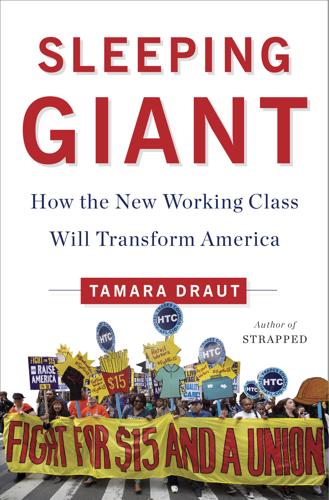
Sleeping Giant: How the New Working Class Will Transform America
by
Tamara Draut
Published 4 Apr 2016
The strike wave from 1967 to 1976 was the biggest since the immediate postwar years. In 1970 alone there were thirty-four major work stoppages, each involving more than 10,000 workers.26 But labor wasn’t the only thorn in business’s side. The consumer movement had achieved new regulations around health and safety, with Ralph Nader’s Raiders focused on breaking corporations of their nasty habit of making profits at the expense of public safety and well-being. The environmental movement blamed the problems of pollution directly on negligent and careless factories, effectively advancing a major new federal law to control that pollution, the Clean Air Act of 1963, followed with expanded authority in 1970.
…
The major planks of the Working Families Party are investments in public goods such as debt-free college tuition and child care, racial equity, and climate change with the understanding that providing a decent standard of living for working people must go beyond wages. At this point it will be helpful to outline how the WFP functions as a third party that doesn’t siphon votes away from the Democrats, like Ralph Nader did in the 2000 election. The WFP strategy concentrates on Democratic primaries at both the state and city level. Federal races remain prohibitively expensive for the WFP to engage in, though its leaders are trying to figure out how to break through the money barriers. Their candidates run as Democrats with endorsements from the WFP.
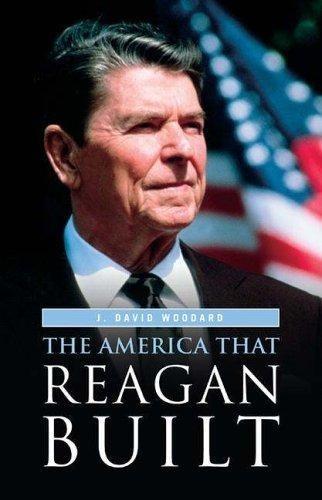
The America That Reagan Built
by
J. David Woodard
Published 15 Mar 2006
George Bush picked Dick Cheney, who had served as White House chief of staff, congressman, secretary of defense, and president of a Texas-based oil company, as his running mate. Al Gore chose Senator Joe Lieberman of Connecticut, a person of almost unmatched personal integrity and independence. The third-party candidates were Ralph Nader and Pat Buchanan, who together were heirs to the Ross Perot legacy of reforms since 1992. Many political observers believed, in advance of the race, that Gore and Nader were competing for the same voters, and that Buchanan voters would hurt Bush. The general election campaign officially began after the party conventions, and could be divided into three phases, in retrospect.15 The first division was from August 18 to September 27, when Al Gore enjoyed a popular lead, capitalizing on the strong economy and a host of favorable domestic issues.
…
The general election campaign officially began after the party conventions, and could be divided into three phases, in retrospect.15 The first division was from August 18 to September 27, when Al Gore enjoyed a popular lead, capitalizing on the strong economy and a host of favorable domestic issues. For example, Gore was able to win over environmental groups, who flirted for a time with Ralph Nader but gave the Democrats their support in the end. His average support in the polls for this period was 52 percent, but in late September the two candidates were running neck and neck. The second period was from September 28 to October 17, when George Bush capitalized on the national debates to showcase his ‘‘compassionate conservative’’ themes and personal appeal.
…
Bright weather oversaw a turnout of over 100 million voters. For the first time in more than a century, the winner of the presidential election remained unknown a full day after the polls closed, and then another day, and then another. Gore won the popular vote by a narrow margin of 48.4 percent to 47.9 percent for Bush. Ralph Nader finished in third place, with 2.7 percent, while Pat Buchanan trailed with 0.4 percent. The Democrats won 9/11 209 nineteen of the top thirty media markets, while Republicans took ten, and the two shared one market. Both candidates claimed triumph without really declaring victory. The problem was the electoral vote.
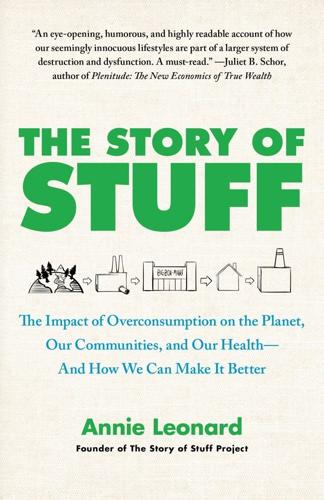
The Story of Stuff: The Impact of Overconsumption on the Planet, Our Communities, and Our Health-And How We Can Make It Better
by
Annie Leonard
Published 22 Feb 2011
It doesn’t matter if the technology involved in making the product is horribly polluting or unsafe to workers. Any country—driven by its corporate interests—can challenge a law in another country by claiming it’s a “trade barrier.” Such disputes are decided by three-person arbitration panels that meet in secret and are not screened for conflicts of interest.114 In the late 1990s, I worked in Ralph Nader’s office in Washington, D.C. One of my colleagues there, Rob Weissman, a Harvard-trained lawyer and leading critic of the WTO, used to chide me for my obsession with factories and dumps, urging me to join those fighting the WTO instead of, or more accurately in addition to, working on garbage. He pointed out that every law that I worked tirelessly to strengthen, and every victory against a dirty production process could get wiped out, or rendered illegal, by the WTO.
…
First and foremost, Patrick Bond at the University of KwaZulu Natal in Durban, South Africa, who read through this manuscript and provided invaluable critiques and comments throughout. Additionally, Maude Barlow, John Cavanagh, Gopal Dayaneni, Ellen Dorsey, Anwar Fazal, Tom Goldtooth, Paul Hawken, Van Jones, Rita Lustgarten, Jerry Mander, Donella Meadows, Peter Montague, Ralph Nader, Bobby Peek, Meena Raman, Mark Randazzo, Katie Redford, John Richard, Satinath Sarangi, and Robert Weissman. I am forever grateful that my first real job was with an organization whose default response was “let’s do it” rather than “but that might not work.” Jim Vallette, Heather Spalding, Kenny Bruno, Connie Murtagh, Jim Puckett, Marcelo Furtado, Von Hernandez, Veronica Odriozola, Kevin Stairs, Dave Rapaport, Peter Bahouth, and others in Greenpeace’s Toxic Trade Team taught me how a handful of people, whose sense of possibility far outweighed a sense of limitations could tackle a problem as sinister and widespread as international waste trafficking.
…
When as a college student in New York City she saw her beloved trees turned to wastepaper and packaging, she followed them to the world’s largest dump, and found her calling. After a stint doing graduate work at Cornell University in upstate New York, she spent nearly two decades tracking international waste trafficking and fighting incineration around the world, first as an employee of Greenpeace International from 1988–1996. She later worked in Ralph Nader’s Washington office for Essential Action, and then for the Global Alliance for Incineration Alternatives (GAIA), Health Care Without Harm and The Sustainability Funders. In 2007 she created The Story of Stuff, a video that summarized her learnings from two decades on the international trail of waste.
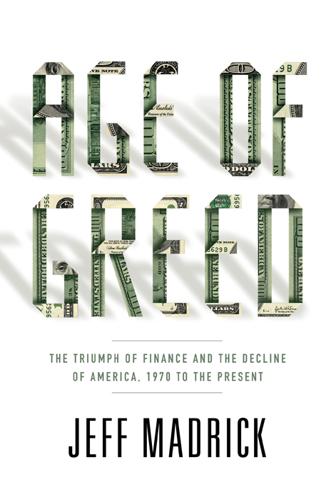
Age of Greed: The Triumph of Finance and the Decline of America, 1970 to the Present
by
Jeff Madrick
Published 11 Jun 2012
.: American Enterprise Institute, 1994), pp. 141–42; author interview with Paul McCracken, June 2004. 24 IF CONSUMERS EXPECTED PRICES TO RISE: Frank Levy and Peter Temin, “Inequality and Institutions in the 20th Century,” MIT Working Paper 07–17, May 1, 2007. 25 MANUFACTURING AND SERVICE GIANTS: Stein, Presidential Economics, pp. 159–60. 26 “AS CHIPS FLOATING”: Ibid., p. 141. 27 “NOW I AM A KEYNESIAN”: Stein, Fiscal Revolution in America, p. 548. 28 YET NIXON ATTACKED MANY OF JOHNSON’S PROGRAMS: Arthur J. Blaustein, Letter to the Editor, New York Times, February 22, 2008, p. A22. 29 AS RALPH NADER SAID: Ralph Nader, Meet the Press, NBC News, February 24, 2008. 30 WHEN THEY WERE LIFTED AFTER THE KOREAN WAR: Hugh Rockoff, A History of Wages and Price Controls in the United States (Cambridge: Cambridge University Press, 1984), p. 114. 31 NIXON WANTED TO RESPOND STRONGLY: Stein, Presidential Economics, p. 162. 32 “I REALLY LOVED THE GUY”: Author interview, Arthur Laffer, March 2004. 33 HE REPORTED TO VOLCKER: Author interview, Murray Weidenbaum, July 19, 2004. 34 “WE PUSHED CONTROLS STRONGLY”: Ibid. 35 BOTH STEIN AND SHULTZ: Stein, Presidential Economics, p. 163. 36 INVESTORS ON WALL STREET: The new agreement also allowed a wider range of fluctuation around the fixed value of the currency than under the Bretton Woods agreement.
…
Yet Nixon attacked many of Johnson’s programs for the poor, among them Head Start and the Job Corps, fanning the racial fires with the accusation of “welfare dependency.” But Nixon felt he had to maintain good graces with a nation that was still on balance in favor of progressive social programs. As Ralph Nader said years later, he was the last president to be afraid of liberals. In 1970, Nixon supported and signed legislation that created the two powerful new regulatory agencies—the Environmental Protection Agency and the Occupational Safety and Health Administration. The next year, he signed legislation to establish the Consumer Product Safety Commission, another of the Washington agencies least liked in the business community, and soon after he signed a bill to index Social Security benefits to rapidly rising consumer prices.
…
Investment bankers did not fail to notice that Wriston’s commercial bank was effectively underwriting its own loans. Wriston now had a foot in the door once slammed shut by the Glass-Steagall legislation of the New Deal that separated underwriting from commercial banking. Burns continually raised red flags about the adequacy of Wriston’s bank capital, and Wriston kept fending him off. Ralph Nader, the consumer critic, complained about the number of bankers in general, including at First National City, who sat on the boards of the companies to which their banks lent money, as well as how few women and African Americans worked for them. Wright Patman, the Democratic head of the House Banking Committee, an old-fashioned populist, was particularly concerned about the growing power of banks, especially since they now managed so much pension fund money, again investing in the very companies to which they lent.
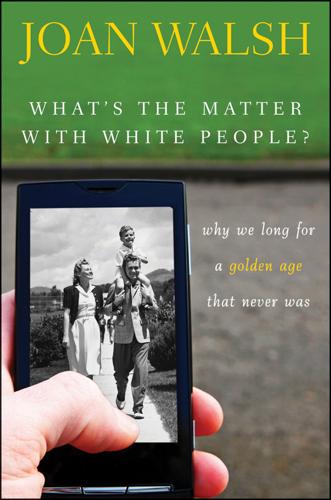
What's the Matter with White People
by
Joan Walsh
Published 19 Jul 2012
A savvy postmovement do-gooder stayed away from that left-over left. At Occidental College, Obama pushed divestment from South Africa (I’d done the same in Madison); at Columbia, he pushed a nuclear freeze (I covered the antinuclear movement). Obama had a brief, frustrating post-Columbia stint at Ralph Nader’s New York Public Interest Group (where I once interned, working to encourage recycling by supporting New York’s Communist “bottle bill”). Obama went into community organizing, I went into community journalism. Trying to be effective in the Reagan years, we mostly had small dreams. Republicans under Reagan had the big dreams, especially the dream of a united country whose citizens could move into the future together.
…
After he left office, President Clinton called it the worst Supreme Court decision since the deeply racist Dred Scott ruling, which the Fourteenth Amendment effectively reversed. Weak Democrats and street-fighting Republicans helped make Bush president, but so did the ideologically rigid left. Proclaiming no difference between Bush and Gore, prominent lefties from Michael Moore to Susan Sarandon, Barbara Ehrenreich to Cornel West campaigned for Ralph Nader in 2000. Even without a hand recount, Gore would have won Florida if he’d gotten one one-hundredth of Nader’s ninety-five thousand votes there. The out-of-touch American left helped elect Richard Nixon in 1968 and George W. Bush in 2000. My father would have been screaming. Yes, DLC Democrats took over the party, but the left barely bothered to fight for it.
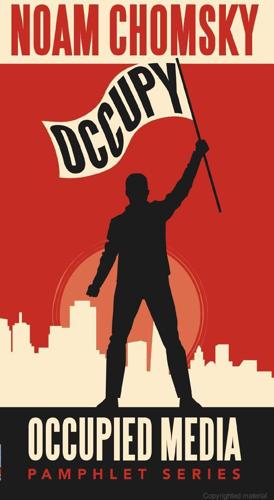
Occupy
by
Noam Chomsky
Published 2 Jan 1994
We also thank the community of people whose solidarity, work, input and ideas helped make this effort a reality: Mumia Abu-Jamal Michael Albert Daniel Alonso Anthony Arnove Dario Azzellini David Barsamian Elizabeth Bell Lori Berenson R. Black Heidi Boghosian Bob Contant Angela Davis Lawrence Ferlinghetti Johanna Fernandez Alex Fradkin Gambrinus Frances Goldin Arun Gupta Michael Hardt & Antonio Negri Stuart Leonard Ramsey Kanaan Eliot Katz Ralph Nader Joe Nevins Adriana Provenzano Karla Quiñonez-Ruggiero John Richard Stanley Rogouski Leonardo Ruggiero Julie Schaper Marina Sitrin Anthony Spirito Beverly Stohl George Ygarza McNally Jackson Books, NY Bluestockings Bookstore, NY St.

Diet for a New America
by
John Robbins
Through their advertising and especially through the “educational” materials that they distribute and that get taught through our public schools, these industries persuade us of dietary requirements that are inaccurate and promote dietary habits that shorten our lives. In his exposé of their corrupt and corrupting practices, John Robbins stands in the fine American tradition of courageous whistle-blowers, like Ralph Nader and Rachel Carson. In this case, it is both ironic and strangely fitting that the message comes from—or through—the scion of America’s largest ice cream company. A major contribution of Diet for a New America is the welcome news it brings that we need far less protein than we thought we did. Many of us who turned from meat protein in an effort to live more lightly on the earth believed we should compensate by eating an equal amount of dairy and vegetable protein and by combining grains and legumes to produce it.
…
Boyle, Malignant Neglect, 59, 62; Plague on Our Children, NOVA; J. Culhane, “PCBs: The Poisons That Won’t Go Away,” Reader’s Digest, December 1980, 113, 115; Council on Environmental Quality, Toxic Chemicals and Public Protection, report to the president by the Toxic Substances Strategy Committee, Washington, DC (1980), 3; Ralph Nader et al., Who’s Poisoning America (San Francisco: Sierra Club Books, 1981), 177; “Pesticides Found in Wild Polar Bears,” Animals’ Agenda (September 1985). 73. Culhane, “PCBs: The Poisons.” 74. Regenstein, America the Poisoned, 293. 75. Plague on Our Children, NOVA. 76. Ibid. 77. B. Richards, “Drop in Sperm Count Is Attributed to Toxic Environment,” Washington Post, September 12, 1979; J.
…
See articles by Grzech and Warbelow in note 60. 100. L. Cavalieri, “Carcinogens and the Value of Life,” New York Times, July 20, 1980; Regenstein, America the Poisoned, 232. 101. Boyle, Malignant Neglect, 196–98. 102. David Pimentel, “Pesticides…,” BioScience 27 (March 1977); James Turner, A Chemical Feast: The Ralph Nader Study Group Report on Food Protection and the Food and Drug Administration (New York: Grossman, 1970); David Pimentel, “Realities of a Pesticide Ban,” Environment (March 1973). 103. Regenstein, America the Poisoned, 275. 104. “Infant Abnormalities Linked to PCB Contaminated Fish,” Vegetarian Times (November 1984): 8. 105.

The Quiet Coup: Neoliberalism and the Looting of America
by
Mehrsa Baradaran
Published 7 May 2024
However, for some shareholders, GM’s efforts to hire employees of color were insufficient, given the scale and type of changes they saw as necessary. Calling themselves Campaign GM, these “activist shareholders” (before the term was coined) were organized by a group of young lawyers affiliated with Ralph Nader. Nader, whose 1965 book Unsafe at Any Speed accused the automakers of recklessly endangering drivers, was already familiar to the GM leadership, which had been spying on him for a few years, attempting to find some controversy with which to smear the rabble-rousing corporate crusader. By 1970, Nader was a trailblazer of public interest law, and his Nader’s Raiders were all graduates of top law schools.
…
Nor did he identify the attackers—with one notable exception. Rather, he wrote that the business executives were being besieged by sources “varied and diffuse” coming from “perfectly respectable elements of society,” including colleges, churches, media, and politicians. The exception to Powell’s generalities was Ralph Nader, who was “the single most effective antagonist of American business,” turned into a “legend” by the media whose aim was to smash corporate power. Not just free enterprise and the forgotten businessman but economics must be protected from Nader’s “economic illiteracy,” which was “confusing the public” with nonsense about tax “loopholes” that would “benefit only the rich” or “big companies.”
…
The dramatic rightward shift seen in today’s Supreme Court opinions can be seen as just the belated detonation of the explosives planted during Powell’s tenure. THE FIRST CASE in Powell’s personal legal revolution emerged from his home state of Virginia and involved the person he had called “the single most effective antagonist of American business”: Ralph Nader.22 In Virginia State Board of Pharmacy v. Virginia Citizens Consumer Council, Inc. (1976), Nader’s consumer group had challenged a Virginia law prohibiting pharmacies from advertising drug prices. The ostensible purpose of the state law was to maintain the professionalism of pharmacies and prevent “aggressive” marketing.

The Entrepreneurial State: Debunking Public vs. Private Sector Myths
by
Mariana Mazzucato
Published 1 Jan 2011
Industrial and Corporate Change 22, no. 4. Forthcoming. Lazonick, W. and O. Tulum. 2011. ‘US Biopharmaceutical Finance and the Sustainability of the Biotech Business Model’. Research Policy 40, no. 9 (November): 1170–87. Lee, A. 2012. ‘Ralph Nader to Apple CEO Using Texas’ Tax Dollars: “Stand on Your Own Two $100 billion Feet”’. AlterNet, 6 April. Available online at http://www.alternet.org/newsandviews/article/877674/ralph_nader_to_apple_ceo_using_texas’_tax_dollars%3A_’stand_on_your_own_two_$100_billion_feet’/ (accessed 22 January 2013). Lent A. and M. Lockwood. 2010. ‘Creative Destruction: Placing Innovation at the Heart of Progressive Economics’.

The Second Machine Age: Work, Progress, and Prosperity in a Time of Brilliant Technologies
by
Erik Brynjolfsson
and
Andrew McAfee
Published 20 Jan 2014
Second, Pigovian taxes raise revenue for the government, which could be used to compensate those harmed by the pollution (or for any other purpose). They’re a win-win. Taxes of this type are popular across the political spectrum and among people in many fields; members of the “Pigou Club,” a group of advocates identified by economist Gregory Mankiw, include both Alan Greenspan and Ralph Nader.37 By improving measurement and metering, the technologies of the second machine age make Pigovian taxes more feasible. Consider traffic congestion. Each of us imposes a cost on all other drivers when we join an already overcrowded highway and further slow traffic. At peak hours, traffic on Interstate 405 in Los Angeles crawls at fourteen miles per hour, more than quadrupling what should be an eight-minute drive.
…
Nick Leiber, “Canada Launches a Startup Visa to Lure Entrepreneurs,” Bloomberg Businessweek, April 11, 2013, http://www.businessweek.com/articles/2013-04-11/canada-launches-a-startup-visa-to-lure-entrepreneurs. 37. Greg Mankiw, “Rogoff Joins the Pigou Club,” Greg Mankiw’s Blog, September 16, 2006, http://gregmankiw.blogspot.com/2006/09/rogoff-joins-pigou-club.html; Ralph Nader and Toby Heaps, “We Need a Global Carbon Tax,” Wall Street Journal, December 3, 2008, http://online.wsj.com/article/SB122826696217574539.html. 38. P. A. Diamond and E. Saez, “The Case for a Progressive Tax: From Basic Research to Policy Recommendations,” Journal of Economic Perspectives 25, no. 4 (2011): 165–90. 39.
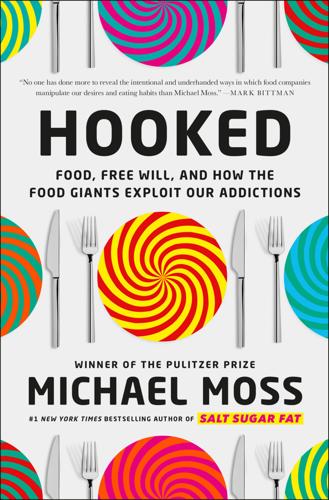
Hooked: Food, Free Will, and How the Food Giants Exploit Our Addictions
by
Michael Moss
Published 2 Mar 2021
But starting that decade, we began to have other feelings about processed food when critics began questioning other aspects of its nature. We started to worry about the way the industry was engineering its products for taste, texture, and color at the expense of purity and wholesomeness. Our worrier in chief at that time, Ralph Nader, made the cover of Time magazine with a string of hot dogs in 1969 when he turned his consumer activism toward food, focusing initially on processed meat. In an earlier essay, he had evoked the work of the slaughterhouse muckraker Upton Sinclair and the environmentalist Rachel Carson in raising new alarms about processed food.
…
Victor Schwartz, a food industry attorney, was called on to paint a grim picture of the legal landscape that restaurants now faced. He said the fact that Judge Sweet used more than one hundred pages to write his opinions on Bradley’s case was indicative of an activist judiciary in which “some other judge, some other place, at some other time can let cases through. Ralph Nader has called the double cheeseburger a weapon of mass destruction. This is the prelude to try to get courts to change laws.” For its voice at the hearing, the National Restaurant Association chose to be represented by the owner of seven quick-service restaurants in Alabama, rather than a big fast-food chain.
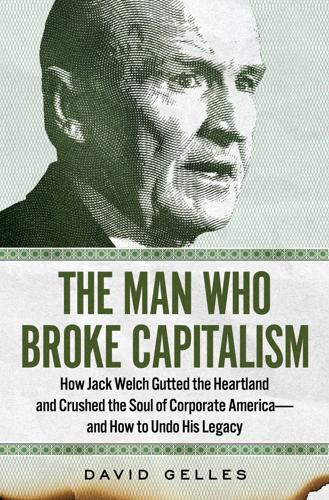
The Man Who Broke Capitalism: How Jack Welch Gutted the Heartland and Crushed the Soul of Corporate America—and How to Undo His Legacy
by
David Gelles
Published 30 May 2022
The next year, Powell turned the speech into a memo that made its way to the U.S. Chamber of Commerce, the influential lobbying group that represents the interests of corporate America. Again, Powell warned of the looming threats to American business, including the environmental movement, support for new social welfare programs, and the consumer advocate Ralph Nader. “Business and the enterprise system are in deep trouble, and the hour is late,” Powell wrote. It was a rallying cry for the rich, an exhortation for those with power to preserve it at all costs. And rather than just sounding the alarm, the Powell memo proposed a plan of action. Business should rapidly seek to bolster its influence in politics, academia, the media, and the legal world.
…
He was pugnacious and unrepentant, exhibiting the Type A bombast he had learned from Welch decades before. The parallels were impossible to ignore, even to the families of the victims. One of the passengers on Ethiopian Airlines Flight 302 was Samya Stumo, a bright, idealistic twenty-four-year-old from Massachusetts. Samya’s parents were Michael Stumo and Nadia Milleron, and Nadia’s uncle was Ralph Nader, the longtime consumer rights advocate who for years had railed against the airline industry and the FAA. After the second crash, Nadia and Michael emerged as de facto organizers for the victims’ families and dedicated themselves to holding Boeing accountable. Both grew well versed in the technical details of the Max and MCAS.
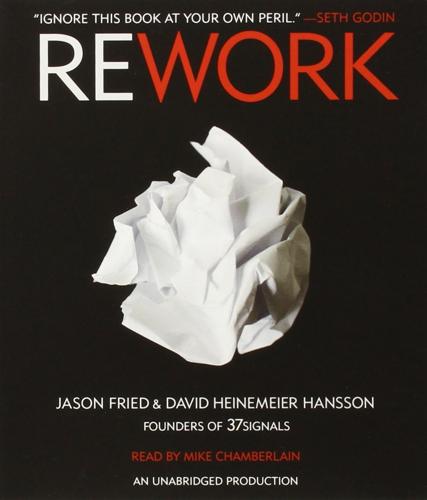
Rework
by
Jason Fried
and
David Heinemeier Hansson
Published 9 Mar 2010
He made it look easy, but it wasn’t easy work. Thank you, Matt. We also want to thank our families, our customers, and everyone at 37signals. And here’s a list of some of the people we know, and don’t know, who have inspired us in one way or another: Frank Lloyd Wright Seth Godin Warren Buffett Jamie Larson Clayton Christensen Ralph Nader Jim Coudal Benjamin Franklin Ernest Kim Jeff Bezos Scott Heiferman Antoni Gaudi Carlos Segura Larry David Steve Jobs Dean Kamen Bill Maher Thomas Jefferson Mies van der Rohe Ricardo Semler Christopher Alexander James Dyson Kent Beck Thomas Paine Gerald Weinberg Kathy Sierra Julia Child Marc Hedlund Nicholas Karavites Michael Jordan Richard Bird Jeffrey Zeldman Dieter Rams Judith Sheindlin Ron Paul Timothy Ferriss Copyright © 2010 by 37signals, LLC.
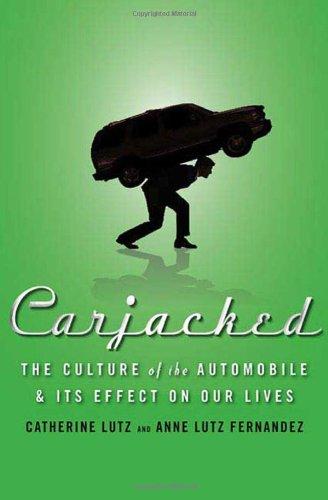
Carjacked: The Culture of the Automobile and Its Effect on Our Lives
by
Catherine Lutz
and
Anne Lutz Fernandez
Published 5 Jan 2010
Cars were originally introduced without seat belts, and even when they became available as options in the 1950s, they were widely suspect: back then, one older woman told us, her mother became very wary of a young man she was dating because he had seat belts installed in his coupe: “‘Why,’ she asked, ‘does he need them? Is he a crazy driver?’” Influential research done in the 1960s by Detroit doctor Clair Straith and engineer Hugh DeHaven shifted the focus by pointing out that vehicle reengineering—softening rigid dashboards, eliminating sharp buttons, and adding restraining belts—would save lives. Ralph Nader’s Unsafe at Any Speed (1965), the consumer rights movement more generally, and what one historian calls “the smoldering dissatisfaction with Detroit’s marketing and design policies,” including rampant dealer fraud, “banded into a ‘perfect storm’ of regulatory reform in the early 1960s.”22 Americans thereafter would come to rely on car engineers to keep them safe; they expected scientists to make it, as crazy as it sounds, “safe to crash.”
…
Wolfgang Sachs, For Love of the Automobile: Looking Back into the History of Our Desires (Berkeley: University of California Press, 1992), p. 138. U.S. automakers for many years successfully argued that the problem of car crashes should be seen as one of driver error or incompetence: educating drivers was the solution. Consumer protection advocate Ralph Nader’s breakthrough was to challenge this corporate thinking, and to call for their reeducation and for progress through improved car design. Lemelson-MIT Program, “The 2009 Lemelson-MIT Invention Index,” http://web.mit.edu/ invent/n-pressreleases/n-press–09index.html “The Problem with Biofuels,” Washington Post, February 27, 2008.

Affluenza: The All-Consuming Epidemic
by
John de Graaf
,
David Wann
,
Thomas H Naylor
and
David Horsey
Published 1 Jan 2001
Provide hourly wage parity and protection of promotions and pro-rated benefits for part-time workers. FALLING BEHIND THE REST OF THE WORLD Asked about the longer-vacations idea, a staff person for presidential candidate George W. Bush, said, “That sounds great. We need that here.” But of the candidates themselves, only Ralph Nader actually endorsed the idea. On July 2, 2004, during an appearance on PBS’s Now with Bill Moyers, Republican pollster and strategist Frank Luntz observed that a majority of “swing” voters were working women with young children. Luntz said his focus groups revealed that “lack of free time” is the number-one issue with these voters.
…
By 2001, the Dutch plants were taking 90 percent of all end-of-life vehicles and recyling 86 percent of the materials from them. The plants, which are cheap and low-tech, employ many workers and take any cars. The disassembly tax is part of the Dutch National Environmental Policy Plan (or “Green Plan") and is being extended to include many other consumer goods.5 STOPPING CHILD ABUSE Consumer advocate Ralph Nader has called the recent upsurge in marketing targeting children a form of “corporate child abuse.” It’s as if marketers have set out knowingly to infect our children with affluenza by spreading the virus everywhere kids congregate. It’s time to protect our kids. At a minimum, we can keep commercialism out of our schools, starting with Channel One.

Four Arguments for the Elimination of Television
by
Jerry Mander
Published 1 Jan 1977
However, because it owed its whole life to the media, exist- ing nowhere else, the SLA was subject to cancellation at any time, and it was cancelled most thoroughly, like a series with slipping ratings getting the ax. Less radical elements did not suffer the SLA's dramatic demise, but the cycle of fast rise/ fast fall was similar for many. Ralph Nader bloomed in the media and then became tiresome. The ecology movement, fitting the holocaust model of TV news, burst upon the scene and then declined. Water- gate excited expectations of government reform, but then it was old news. Once the U.S. was out of Vietnam, the once hot antiwar 32 WAR TO CONTROL THE UNITY MACHINE movement was off the tube.
…
Also naturally, the American population develops more of a feeling for products and a life-style suitable to business than it does for a sensitive, subtle and beautiful way of mind that theoretically offers an alternative. The more people sit inside their television experi- ence, the more fixed they become in the hard-edged reality that the medium can convey. + "'+ In 1973 I helped organize an all-day press conference in Washington, D.C., hosted by Ralph Nader on behalf of In- digena, an organization devoted to creating a pan-Indian movement in the Western Hemisphere. Indigena gives par- ticular attention to the struggle of South American Indians, who are presently suffering a fate previously visited upon the tribes of our own Great Plains and elsewhere.

Hate Inc.: Why Today’s Media Makes Us Despise One Another
by
Matt Taibbi
Published 7 Oct 2019
Comments like these triggered an avalanche of anti-press complaints, this time not from flyover country (where hatred of the “elite” press was already considered a given) but from urban, left-leaning intellectuals, aka the media’s home crowd. An example was Ralph Nader, who focused on the entire system of commercial media. Nader said that campaign coverage had devolved into a profit bonanza in which media firms “cash in and give candidates a free ride.” The former third-party candidate also noted that the constant attention paid to people like Trump excluded other voices, including “leading citizens who could criticize the process.” (Like, presumably, Ralph Nader, although he had a point). I remember watching Nader’s comments with interest, having just returned from covering Trump’s nomination-sealing win in the Indiana primary.

Doing Time Like a Spy
by
John Kiriakou
Published 11 May 2017
Thank you to Rob Shetterly for lobbying Maine’s members of Congress. Thank you to the Santa Fe, New Mexico chapter of Amnesty International for appealing directly to Attorney General Holder for my release. Thank you to Jesselyn Radack and the Government Accountability Project, who worked with Ralph Nader on a letter to Director Samuels asking for nine months’ halfway house. Thank you to Jane Hamsher and the gang at firedoglake.com, who have had my back from the beginning of this nightmare. Thank you to my attorneys Mark MacDougall and Karen Williams at Akin Gump, whom I trust more than I trust myself.
…
Charles Murphy, Nancy Murphy, Eric and Jennifer Pesanelli, Michael Ruby, Gary Senko, Tom Tolstoy, Ray Vazquez, Phil Yamalis, and His Eminence Metropolitan Savas Zembillas. Matthew 25:36 Thank you to those who provided much-needed political support, including Rep. Jim Moran (D-VA), Rep. Lloyd Doggett (D-TX), Governor Gary Johnson (R-NM), Bishop John McCarthy of the Catholic Diocese of Austin, Quaker House, Ralph Nader, Jill Claybrook, Bruce Fein, Ambassador Jonathan Weiner, Dennis Meheil, and Alexi Giannoulias. Thank you to the 650 people from around the country and the world who wrote to me, especially my regular correspondents: Vone Bowly, Jeffrey Bradshaw, Russ Cletta, Peggy Corbin, Mike and Chiriyan Dominick, Chuck Fager, Lynn Faulkner, Michael and Angela Ferraro, Jane Fitzpatrick, Martin Gugino, Chuck and Marybeth James, Lynn and Steve Newsom, John Papathanassiou, Scott Seligman, John Spezzano, Jim Stoucker, Sarah Barrentine, Karina Aguilar, Deirdre Balaam, Peggy Bull, Catherine Bodin, Vivienne “Benson,” Carol Ballou, Eloise Bates, Pat Connolly, Les Davis, Lynn Chong, Juan Fernandez, Desiree Fairooz, Jason Gulledge, Freda Giamenos, Jeanie Glass, Barbara Grothus, Andy Irwin, Julie Kempken, Alanna Lazarowich, Jackie Martin, Tresa Roth, Kirk Snavely, Will Shapira, Annie Shaw, Brad Thacker, Sandy Winters, Beatrice Williams-Rude, Marion Ward, Anne Zielinski, Chris Bartels, Jim Becket, Larry Baschkin, Robert Cooper, Alex Cox, Alina Dollat, Pamela Drew, Catherine Frompovich, Amber Garlan, Dr.
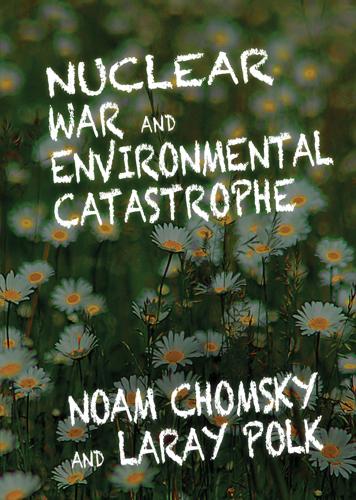
Nuclear War and Environmental Catastrophe
by
Noam Chomsky
and
Laray Polk
Published 29 Apr 2013
Butler, Ani DiFranco, Assia Djebar, Ariel Dorfman, Coco Fusco, Barry Gifford, Martha Long, Luis Negrón, Hwang Sok-yong, Lee Stringer, and Kurt Vonnegut, to name a few, together with political titles by voices of conscience, including Subhankar Banerjee, the Boston Women’s Health Collective, Noam Chomsky, Angela Y. Davis, Human Rights Watch, Derrick Jensen, Ralph Nader, Loretta Napoleoni, Gary Null, Greg Palast, Project Censored, Barbara Seaman, Alice Walker, Gary Webb, and Howard Zinn, among many others. Seven Stories Press believes publishers have a special responsibility to defend free speech and human rights, and to celebrate the gifts of the human imagination, wherever we can.
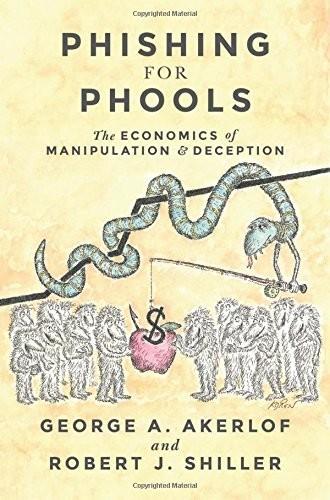
Phishing for Phools: The Economics of Manipulation and Deception
by
George A. Akerlof
,
Robert J. Shiller
and
Stanley B Resor Professor Of Economics Robert J Shiller
Published 21 Sep 2015
Relative to all previous history, people in developed countries are doing remarkably well. Women in more than fifty countries, and men in eleven, have life expectancies of eighty years or more.1 Modern cars may have their problems and their recalls, but they now always have seatbelts; with rare exception cars are no longer—as Ralph Nader opined 50 years ago—“unsafe at any speed.”2 Remarkably, as of February 2013, there had not been a single commercial airline fatality in the United States for four years.3 Not only did the planes themselves have a perfect record; so too did the pilots and the mechanics who keep them in the air. With such records for safety and product quality, the questions arise: Is it purely the market system that brought us this success?
…
Chapter Eleven: The Resistance and Its Heroes 1. For 2013. World Bank, “Life Expectancy at Birth, Male (Years)” and “Life Expectancy at Birth, Female (Years),” accessed March 29, 2015, http://data.worldbank.org/indicator/SP.DYN.LE00.MA.IN/countries and http://data.worldbank.org/indicator/SP.DYN.LE00.FE.IN/countries. 2. Ralph Nader, Unsafe at Any Speed: The Designed-In Dangers of the American Automobile (New York: Grossman, 1965). 3. Jad Mouawad and Christopher Drew, “Airline Industry at Its Safest since the Dawn of the Jet Age,” New York Times, February 11, 2013, http://www.nytimes.com/2013/02/12/business/2012-was-the-safest-year-for-airlines-globally-since-1945.html?
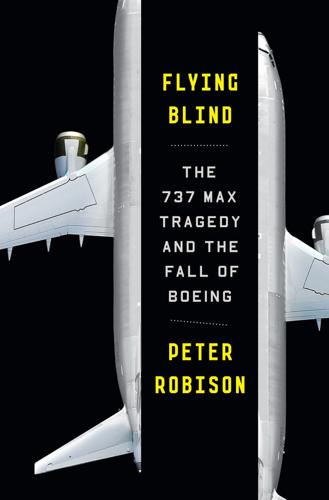
Flying Blind: The 737 MAX Tragedy and the Fall of Boeing
by
Peter Robison
Published 29 Nov 2021
The following Saturday, ever fit, he climbed onto his bicycle for the Boeing Century Challenge, a 105-mile race through spectacular orchards and vineyards in the mountains surrounding Lake Chelan, carved from glaciers in central Washington. About fifty from Boeing joined him. He finished twenty-sixth out of twelve hundred riders. 12 Blood Money Samya Stumo came from a family that had an unusually good grasp of how power is wielded in Washington. Her mother, Nadia Milleron, is the niece of Ralph Nader, the lawyer, former Green Party presidential candidate, and famed consumer crusader. His bestselling 1965 exposé of the automobile industry, Unsafe at Any Speed, led to seat-belt laws. The book had enraged General Motors and made the Chevrolet Corvair—the car whose steering wheel tended to impale its driver in crashes—infamous.
…
Elwell told Muilenburg: Tangel, Sider, and Pasztor, “ ‘We’ve Been Humbled.’ ” The following Saturday: “In Conversation with Boeing CEO Dennis Muilenburg,” Aspen Ideas Festival, June 27, 2019. Boeing Century Challenge, June 22, 2019, race results here: https://runsignup.com. 12. BLOOD MONEY “You and your team”: Ralph Nader, “Boeing Mismanagers Forfeit Your Pay and Resign: An Open Letter to Boeing CEO Dennis Muilenburg,” April 26, 2019, https://nader.org. In late June, they held: A video of the event at the American Museum of Tort Law is available at “Samya Stumo Memorial June 22nd, 2019,” https://www.youtube.com.
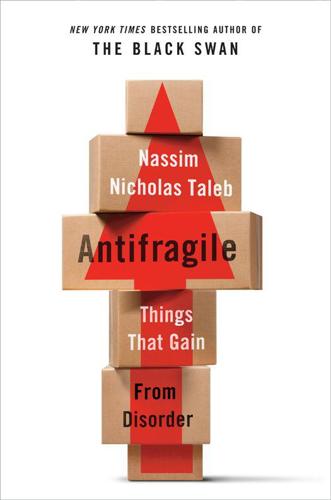
Antifragile: Things That Gain From Disorder
by
Nassim Nicholas Taleb
Published 27 Nov 2012
These asymmetries are particularly severe when it comes to small-probability extreme events, that is, Black Swans—as these are the most misunderstood and their exposure is easiest to hide. Fat Tony has two heuristics. First, never get on a plane if the pilot is not on board. Second, make sure there is also a copilot. The first heuristic addresses the asymmetry in rewards and punishment, or transfer of fragility between individuals. Ralph Nader has a simple rule: people voting for war need to have at least one descendant (child or grandchild) exposed to combat. For the Romans, engineers needed to spend some time under the bridge they built—something that should be required of financial engineers today. The English went further and had the families of the engineers spend time with them under the bridge after it was built.
…
But I thought that the fellow was heroic, for, should the candidate win, his own taxes would increase by a considerable amount. A year later I discovered that the client was being investigated for his involvement in a very large scheme to be shielded from taxes. He wanted to be sure that others paid more taxes. I developed a friendship over the past few years with the activist Ralph Nader and saw contrasting attributes. Aside from an astonishing amount of personal courage and total indifference toward smear campaigns, he exhibits absolutely no divorce between what he preaches and his lifestyle, none. Just like saints who have soul in their game. The man is a secular saint. Soul in the Game There is a class of people who escape bureaucrato-journalistic “tawk”: those who have more than their skin in the game.
…
It is like a voluntary cap (it would prevent people from using public office as a credential-building temporary accommodation, then going to Wall Street to earn several million dollars). This would get priestly people into office. Just as Cleon was reviled, in the modern world, there seems to be an inverse agency problem for those who do the right thing: you pay for your service to the public with smear campaigns and harassment. The activist and advocate Ralph Nader suffered numerous smear campaigns as the auto industry went after him. THE ETHICAL AND THE LEGAL I felt ashamed not having exposed the following scam for a long time. (As I said, if you see fraud …) Let us call it the Alan Blinder problem. The story is as follows. At Davos, during a private coffee conversation that I thought aimed at saving the world from, among other things, moral hazard and agency problems, I was interrupted by Alan Blinder, a former vice chairman of the Federal Reserve Bank of the United States, who tried to sell me a peculiar investment product that aims at legally hoodwinking taxpayers.

9-11
by
Noam Chomsky
Published 29 Aug 2011
Butler, Ani DiFranco, Assia Djebar, Ariel Dorfman, Coco Fusco, Barry Gifford, Lee Stringer, and Kurt Vonnegut, to name a few, together with political titles by voices of conscience, including the Boston Women’s Health Collective, Noam Chomsky, Angela Y. Davis, Human Rights Watch, Derrick Jensen, Ralph Nader, Gary Null, Project Censored, Barbara Seaman, Gary Webb, and Howard Zinn, among many others. Seven Stories Press believes publishers have a special responsibility to defend free speech and human rights, and to celebrate the gifts of the human imagination, wherever we can. For additional information, visit www.sevenstories.com.

The Case Against Sugar
by
Gary Taubes
Published 27 Dec 2016
MaGoo, Huckleberry Hound and Yogi Bear, Sugar Bear and Linus the Lionhearted, the Flintstones, Rocky and Bullwinkle—but give them entire Saturday-morning television shows dedicated to the task of doing so. These companies would spend enormous sums marketing each cereal—six hundred million dollars total in a single year by the late 1960s, when the consumer advocate Ralph Nader took on the industry. Each new cereal that succeeded would spawn a rush of imitators, while the industry, by the 1960s, was now openly advertising the candylike nature of the products: “It tastes like maple sugar candy,” Marky Maypo’s father said of Maypo in 1956, to entice his son to eat it; Cocoa Krispies were advertised as tasting “like a chocolate milk shake, only crunchy.”
…
The FDA administrators had originally hoped to ban cyclamates for use in soft drinks and other foods, but to sustain their use for diabetics and obese individuals who needed to watch their calorie consumption or whose doctors suggested they avoid sugar. The pressure from food activists concerned about chemical carcinogens prevented even that compromise. (Ralph Nader’s Public Citizen’s Health Research Group, for instance, argued that the FDA should regard “one of its primary missions as being a cancer-prevention agency.”) In October 1970, the FDA banned all use of cyclamates. Two years later, when John Hickson left the International Sugar Research Foundation to work for the Cigar Research Council, he was described in a confidential tobacco-industry memo as a “supreme scientific politician who had been successful in condemning cyclamates, on behalf of the Sugar Research [Foundation], on somewhat shaky evidence which he had been able to conjure out of Wisconsin Alumni Research Foundation.”

The Code: Silicon Valley and the Remaking of America
by
Margaret O'Mara
Published 8 Jul 2019
Three weeks after the DOJ lowered the boom, consumer advocate Ralph Nader hosted a Washington conference to address the Microsoft menace. It was hardly a populist uprising—organizers charged $1,000 a head to “help support Nader’s future investigations into the high-tech industry”—but it drew in an eclectic crowd. Gary Reback was on the program, pointing out the flattering entries about Gates in Microsoft’s online encyclopedia, Encarta. Netscape lawyer Roberta Katz warned that Microsoft was boxing competitors out of its new online shopping center. Ralph Nader’s star had been fading, but the fight against Bill Gates gave him a way to reclaim his old mantle as America’s #1 fighter for the little guy.
…
The 1970 annual meeting of the Association for Computing Machinery, the ACM—usually a days-long geek’s paradise of technical papers—devoted the entire program to “how computers can help men solve problems of the cities, health, environment, government, education, the poor, the handicapped and society at large.” Consumer crusader Ralph Nader was a keynote speaker. The Nixon Administration’s short-lived Technology Opportunities Program reflected the prevailing mood, asking industry to submit its suggestions for how computer and communications technologies could solve social problems.29 This played out in popular culture as well.
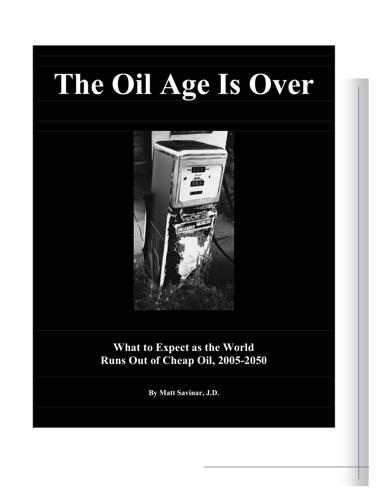
The Oil Age Is Over: What to Expect as the World Runs Out of Cheap Oil, 2005-2050
by
Matt Savinar
Published 2 Jan 2004
Now that oil production is set to permanently decline, the only way to maintain a highly centralized financial system is with a drastically reduced population. 60 Part V: Peak Oil and US Political/Social Issues “The only difference between Bush and Gore is the velocity with which their knees hit the floor when corporations knock at the door.” -Ralph Nader, 2000 election. “George W. Bush is not the problem and John Kerry is not the solution.” -Matt Savinar, 2004 61 The Oil Age is Over 59. Who do you think is more at fault for this situation? Bush or Clinton? Rush Limbaugh and his "ditto heads" or Michael Moore and his French-loving Hollywood buddies?

The Wrecking Crew: How Conservatives Rule
by
Thomas Frank
Published 5 Aug 2008
The answer is clearest in the case of the USAF: Foundations like these allowed the Reagan youth to pursue hefty contributions from the real powers of Republicandom—corporations, which prefer to donate to tax-exempt organizations. It was through his not-for-profit that Abramoff seems to have discovered the profitable side of politics. The occasion for this discovery was the College Republicans’ ongoing war with Ralph Nader’s Public Interest Research Groups (PIRGs), student activist outfits that were funded at most colleges by “activity fees” all students were required to pay (unless they checked a box on a form).23 This was the point on which the CRs challenged them, insisting on campus after campus that it was “sinful and tyrannical” to compel students to fund an obviously political organization.24 Like other Nader groups, the student PIRGs were something of a pain in the neck to business, always agitating for container deposit laws and other environmental causes, and at some point it apparently occurred to Abramoff or Norquist that defunding and thus killing PIRG chapters was a service for which the targeted businesses ought to be paying.
…
In a 1986 interview, one USAF spokesman described how his young charges were to attract investments from business interests. “Listen, [PIRGs are] involved in all these campaigns to increase regulation against business,” the young conservative was to say. He or she was urged to mention Nader: “You say Ralph Nader’s name and any educated businessman will take interest.” Norquist himself was more specific, pointing to the PIRGs’ bottle-bill campaign as an example. “We say: ‘We’re fighting PIRGs and you know that they go after you bottlers all the time, and try to get nickel-a-bottle [deposit] laws passed. And we’re going to go after 20 PIRG fights this year . . . and you have an interest in this, or you ought to.’”25 Thus did the young entrepreneurs of the USAF get out there and sell themselves as political hit men.
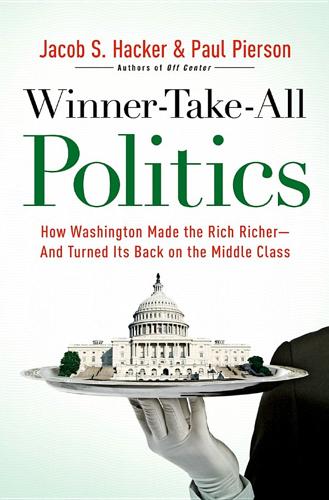
Winner-Take-All Politics: How Washington Made the Rich Richer-And Turned Its Back on the Middle Class
by
Paul Pierson
and
Jacob S. Hacker
Published 14 Sep 2010
Before the policy winds shifted in the ’60s, business had seen little need to mobilize anything more than a network of trade associations. It relied mostly on personal contacts, and the main role of lobbyists in Washington was to troll for government contracts and tax breaks. The explosion of policy activism, and rise of public interest groups like those affiliated with Ralph Nader, created a fundamental challenge. And as the 1970s progressed, the problems seemed to be getting worse. Powell wrote in 1971, but even after Nixon swept to a landslide reelection the following year, the legislative tide continued to come in. With Watergate leading to Nixon’s humiliating resignation and a spectacular Democratic victory in 1974, the situation grew even more dire.
…
When Jimmy Carter’s election gave Democrats unified control of Washington, the first action item was a bill to establish a new Office of Consumer Representation. The agency would have consolidated consumer issues in a single place and given consumers an organized advocate in rule-making activities throughout the federal bureaucracy. For Ralph Nader and his public interest allies, it would represent the culmination of their remarkable success in expanding federal regulatory protections for citizens whose interests had failed to find organized representation in Washington before the late 1960s. There was every reason for confidence: Polls showed that voters backed the idea of such an agency 2–1.
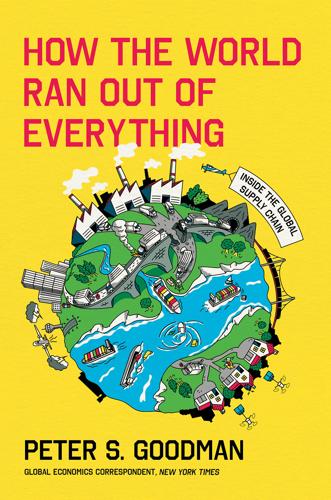
How the World Ran Out of Everything
by
Peter S. Goodman
Published 11 Jun 2024
This idea—supported by voluminous academic literature—became the central driving force for deregulation. In Washington, the only groups opposed to deregulation were the Teamsters and the American Trucking Associations, whose members benefited from less competition. In favor of deregulation was the rest of the business world and grassroots advocacy groups such as Ralph Nader’s Consumers Union22. Major manufacturers and retailers23—including Kraft, General Mills, and Sears—lobbied in favor of deregulating trucking, with the clear understanding that it would bring lower prices. On July 1, 1980—just three months before he deregulated the railroads—President Carter affixed his signature to the Motor Carrier Act of 1980, making it far easier for new competitors to enter trucking.
…
Edles, “Motor Carrier Act (1935),” Encyclopedia.com, https://www.encyclopedia.com/history/united-states-and-canada/us-history/motor-carrier-act. 14. number of trucking companies: Viscelli, introduction to The Big Rig. 15. set up centralized terminals: Ibid. 16. opportunity for organized labor: Ibid. 17. national contract for truck drivers: Ibid. 18. represented by a union: Rachel Premack, “Truck Driver Salaries Have Fallen by as Much as 50% Since the 1970s—and Experts Say a Little Known Law Explains Why,” Insider, September 26, 2018. 19. half again as much: Viscelli, introduction to The Big Rig. 20. Congress to think tanks: Ibid. 21. forces of monopolization: Ibid. 22. Ralph Nader’s Consumers Union: Ibid. 23. Major manufacturers and retailers: Ibid. 24. “inflationary government restrictions”: President Jimmy Carter, “Motor Carrier Act of 1980 Statement on Signing S. 2245 Into Law,” July 1, 1980, UC Santa Barbara, The American Presidency Project, https://www.presidency.ucsb.edu/documents/motor-carrier-act-1980-statement-signing-s-2245-into-law. 25. had federal approval: Viscelli, introduction to The Big Rig. 26. less than 20 percent: Ibid. 27.
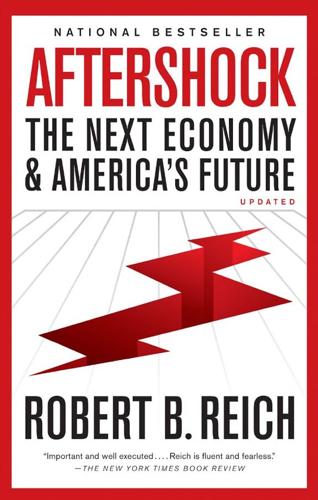
Aftershock: The Next Economy and America's Future
by
Robert B. Reich
Published 21 Sep 2010
He tried again in 1996, charging that members of America’s establishment “hear the shouts of the peasants from over the hill.… All the peasants are coming with pitchforks.” It was a memorable phrase, but it didn’t get Buchanan any farther. By then, a strong economic recovery had becalmed Buchanan’s pitchforked peasants. In 2000, Ralph Nader ran for president as the Green Party candidate, assailing the power of “greedy” and “rapacious” corporations. He lost, of course, but some believe he got enough support to tip Florida, and therefore the electoral college and the presidency, to George W. Bush. To be sure, prolonged economic stress could open the door to demagogues who prey on public anxieties in order to gain power.
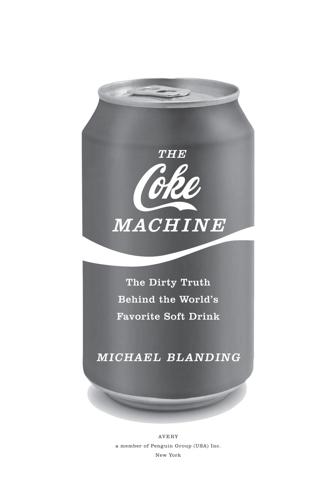
The Coke Machine: The Dirty Truth Behind the World's Favorite Soft Drink
by
Michael Blanding
Published 14 Jun 2010
CSPI was founded in 1971, one of the first of the many “public interest” groups that proliferated in a period that business historian David Vogel calls the last of the “three major political waves of challenge to busi ness that has taken place in the United States in [the twentieth] century” (the first two being the Progressive Era and the strong push by organized labor in the post-Depression 1930s). Groups such as the Sierra Club, Common Cause, and Ralph Nader’s Public Citizen used any means pos sible to curb the power of big business at a time when public support for corporations was at a low ebb. In CSPI’s case, the group has held vocal press conferences, slapped complaints against companies with government agencies, and even threat ened lawsuits in its usually successful attempts to remove what it sees as deceptive advertising and nutrition labeling for food.
…
“The corporation’s legally defined mandate is to pursue, relentlessly and without exception, its own self-interest re gardless of the often harmful consequences it might cause to others,” he writes. That’s not to say that corporations can’t do good, however, so long as their efforts align with their profit motive. The second wave of corporate social responsibility began in the 1970s, when, faced with challenges from consumer advocates like Ralph Nader (and CSPI’s Michael Jacobson), corporations realized that investing in social causes could serve as a kind of insurance against criticism. It was in this era that Coke’s Paul Austin pursued his “halo effect” with hydroponic shrimp farms, desalinization plants, and soybean beverages that he argued could help earn goodwill in the developing world at the same time they helped make Coke’s vision of global harmony a reality.

Culture and Prosperity: The Truth About Markets - Why Some Nations Are Rich but Most Remain Poor
by
John Kay
Published 24 May 2004
Strategic Behavior in Politics ••••••••••••••••••••••••••••••••••••• George Bush took Florida by 537 votes and was therefore declared the winner in the November 2000 presidential election. Some 2.7% of voters preferred Ralph Nader, the Green Party candidate, to AI Gore, but a majority of those who supported Nader also preferred Gore to Bush. If some Nader supporters had cast their votes for Gore, then Ralph Nader would not have become president-but no one could reasonably have expected that he would. What could have been expected, and would have happened, is that AI Gore would have won Florida, and New Hampshire, and been inaugurated in January 2001 as president of the United States.
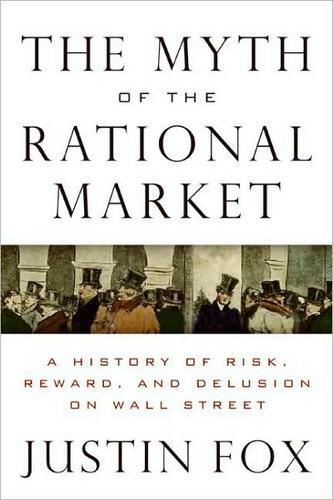
The Myth of the Rational Market: A History of Risk, Reward, and Delusion on Wall Street
by
Justin Fox
Published 29 May 2009
But as he made the transition from scholar to media star in the 1960s, Friedman took on the responsibility of presenting his Chicago colleagues’ ideas to the still largely hostile outside world. In 1970 he explained in the pages of the New York Times Magazine the Chicago view of the role of corporations in American life. The news peg was the rise of “Campaign GM,” a movement led by consumer activist Ralph Nader to place three representatives of “the public interest” on the giant automaker’s board of directors. Nader would push this theme throughout the 1970s, arguing that, because corporations had been created by government action, they ought to be held to high standards of civic responsibility. Friedman had a different take.
…
But the leniency of our laws places management and shareholders at a distinct disadvantage in coming to grips with the enemy.”29 How shareholders could be placed at a disadvantage by people who wanted to pay a premium for their shares was something of a mystery, but the threat to management was real, and corporate managers maintained a strong lobbying presence in Washington. Most critics of corporate America, meanwhile, came from the political left—people such as John Kenneth Galbraith and Ralph Nader—and weren’t keen to embrace Wall Street raiders. That left the field to Henry Manne, a 1952 graduate of the University of Chicago Law School. He had been through the usual conversion experience there, arriving with plans to become a labor union lawyer and emerging three years later a “confirmed free marketer.”
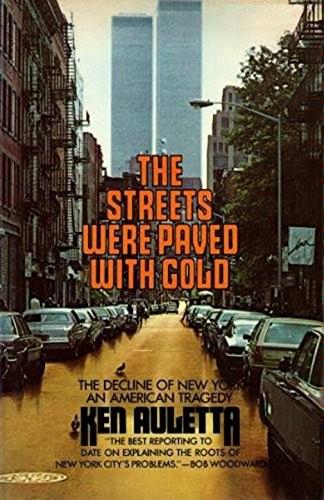
The Streets Were Paved With Gold
by
Ken Auletta
Published 14 Jul 1980
Yet Goldin—after waiting two days to let the dust from the SEC charges settle (and candidate Beame take all the heat)—summoned the press to his office in the Municipal Building to release 448 pages of his SEC testimony and a collection of press releases, newspaper reports and other items. “On more than 50 major occasions,” he declared, “in increasingly grave and urgent language, I warned the public about the city’s worsening fiscal condition and budget practices. To say I did not disclose the city’s fiscal condition is like saying Ralph Nader did not warn consumers about unsafe cars because people continued to get killed in auto crashes, or Gen. Billy Mitchell did not warn the Navy about air power.” And, finally, city officials didn’t understand why the SEC berated them for failing to heed the admonitions of bankers that the credit market would close.
…
“Many of the methods by which governments have contrived to assure merit employment and protect the service against past abuses,” declared these long time advocates of civil service, “have also served to exclude many well-qualified persons, severely limit the flexibility of responsible public officials, and curtail the overall effectiveness of the public service.” Consumer advocate Ralph Nader lent his voice as well. In the introduction to The Spoiled System by Robert Vaughn, Nader wrote of the civil service as if it were a basic consumer issue: “These vested interests include the security of tenure, the security of inevitable promotion, the security of habit, the security of sloth, and the unfettered right to stifle dissent within the ranks and block evaluation of performance from outside, whether by the public or by other governmental bodies.”

Whole Earth: The Many Lives of Stewart Brand
by
John Markoff
Published 22 Mar 2022
Getting to Canada had been relatively easy: head east and then north. Other challenges he was facing were more complicated. He was casting about for what to do with his life. Brand fantasized that perhaps he could reconstitute himself as a “private statesman” or public intellectual like Buckminster Fuller, Ralph Nader, or David Brower. But how? Robert Frank had been Brand’s guide for understanding where photography was heading. Earlier, Frank had told him that he had stopped being a photographer because “I noticed that when I made an exposure my eyes closed.” He confided in Brand that he believed that photography was stopping him from seeing the world.
…
It had been tempered by the 2008 recession, but there had still been forecasts of a doubling of nuclear power by 2035 worldwide.[23] After Fukushima, however, countries in both Asia and Europe backed away, while in the United States the low cost of natural gas undercut any meaningful new investment in nuclear energy. Brand has remained unmoved. He repeated over and over again that the climate situation hadn’t changed and that made nuclear energy necessary. During the summer of 2011, he agreed to debate Winona LaDuke, a well-known environmentalist and Ralph Nader’s Green Party vice presidential candidate in both 1996 and 2000. The debate was to be held in July at the David Brower Center in Berkeley, literally the home court of the “romantic” environmental movement that Brand had condemned in Whole Earth Discipline. Chronicle columnist Jon Carroll teased him, writing in an email: “Oh man, are you in for it now.

Nixonland: The Rise of a President and the Fracturing of America
by
Rick Perlstein
Published 1 Jan 2008
“We had a lot of success with that”: Maureen Dowd, “Hey, What’s That Sound?” NYT, August, 20, 2005. McGovern returned to his hometown: Greene, Running, 39. In between stops he worked: Mailer, St. George and the Godfather, 101. Muskie didn’t merely decline: Miroff, Liberals’ Moment, 97. Even Ralph Nader, the consumer: Ralph Nader, Crashing the Party: How to Tell the Truth and Still Run for President (New York: St. Martin’s Press, 2002), 37. They unveiled him: Greene, Running, 45–46. The day before, on August 7: Thompson, Fear and Loathing, 374. “Come January,” the glad-handing: Greene, Running, 39. In other news, Arthur Bremer’s: “Bremer Guilty in Shooting of Wallace, Gets 63 Years,” NYT, August 5, 1972.
…
He proposed $100 million to cure cancer, a universal health-insurance program, quoted T. S. Eliot—“Clean the air! Clean the sky! Wash the wind!”—in proposing a program “to end the plunder of America’s natural heritage.” That, at least, was the public transcript. He put it a little differently to two Ford executives in the Oval Office: Ralph Nader and the environmentalists, he said, would rather “go back and live like a bunch of damned animals…. What they’re interested in is destroying the system.” In a strategy meeting for the ’72 election, he proposed either sabotaging passage of the welfare plan—or passing it and letting the actual implementation die after passage, getting credit for caring, without doing anything at all.
…
Their boss, Robert Bennett, the article explained, was tied to the Nixon reelection campaign as chairman of some of its seventy-five dummy “committees” (such as “Supporters of the American Dream”) through which organizations such as the Associated Milk Producers had donated $325,000, which, Bernstein reported, “led to a suit filed by Ralph Nader’s Public Citizens, Inc., which charged that the Nixon administration raise[d] government milk support prices as a pay-off for the donations.” That afternoon the president held his twenty-fourth news conference. It had been postponed from Monday so it wouldn’t look as if he was responding to the break-in.
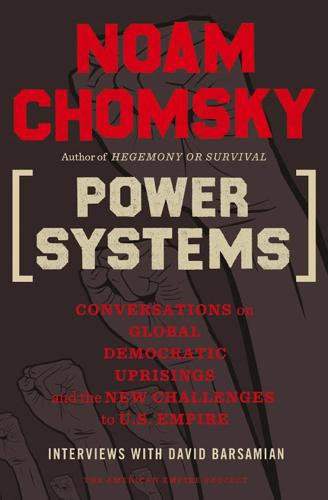
Power Systems: Conversations on Global Democratic Uprisings and the New Challenges to U.S. Empire
by
Noam Chomsky
and
David Barsamian
Published 1 Nov 2012
It’s quite interesting reading, not only for the content but also because of the style, which is pretty typical of business literature and of totalitarian culture in general. It reads a little like NSC-68.10 The whole society is crumbling, everything is being lost. The universities are being taken over by followers of Herbert Marcuse. The media and the government have been taken over by the Left. Ralph Nader is destroying the private economy, and so on. Businessmen are the most persecuted element in the society, but we don’t have to accept it, Powell said. We don’t have to let these crazy people destroy everything. We have the wealth. We’re the trustees of the universities. We’re the people who own the media.
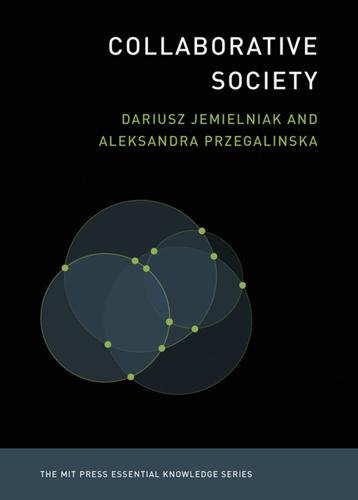
Collaborative Society
by
Dariusz Jemielniak
and
Aleksandra Przegalinska
Published 18 Feb 2020
White goes on to argue, “Clicktivism reinforces the fear of standing out from the crowd and taking a strong position. It discourages calling for drastic action. And as such, clicktivism will never breed social revolution. To think that it will is a fallacy. One that is dawning on us.”41 The activist Ralph Nader has stated that “the Internet doesn’t do a very good job of motivating action,” and he argues that the US Congress, corporations, and the Pentagon do not necessarily “fear the civic use of the Internet.”42 Ethan Zuckerman talks about “slacktivism” by claiming that the internet has devalued certain currencies of activism.43 Citizens may “like” an activist group on Facebook, visit a website, or comment on a blog, but fail to engage in political activism beyond the internet, such as volunteering or canvassing.
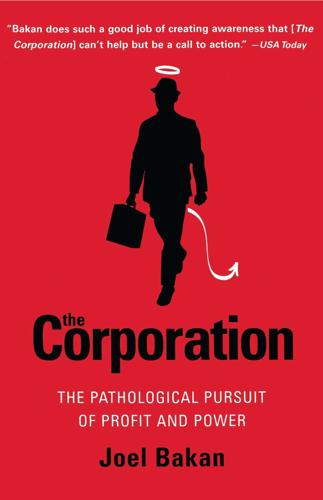
The Corporation: The Pathological Pursuit of Profit and Power
by
Joel Bakan
Published 1 Jan 2003
In a series of brilliantly diabolical schemes, whose sinister character is best captured by Enron insiders' nicknames for them-"Death Star," "Get Shorty," Page 101 THE CORPORATION 101 and "Fat Boy"-the company helped manufacture an artificial energy shortage that drove the price of electricity, and consequently its profits , sky high. Thirty-eight blackouts plagued California over the six months after the Commodity Futures Modernization Act was signed by the president. Up until that point, and from the beginning of the energy crisis in May 2000, only one blackout had occurred. As Ralph Nader's Public Citizen organization concluded, "Phil Gramm's commodities deregulation law allowed Enron to control electricity in California, pocket billions in extra revenues and force millions of California residents to go hundreds of hours without electricity and pay outrageous prices." On June 19, 2001, the crisis was brought to an end when the Federal Energy Regulatory Commission imposed strict price controls on California's electricity markets.

The New Class War: Saving Democracy From the Metropolitan Elite
by
Michael Lind
Published 20 Feb 2020
On the overclass right, such institutions were denounced by libertarian economists as “crony capitalism” and by conservative constitutional lawyers in the United States as infringements on the supposed quasi-royalist “unitary power” of the president. On the overclass left, many of the same structures were demonized by public interest progressives like Ralph Nader whose constituency consisted of affluent and educated reformers.1 The political scientist Theodore Lowi coined the term “interest group liberalism” for New Deal arrangements as an insult.2 By 1986, a bipartisan consensus among American intellectuals and policy makers held that inherited democratic pluralist institutions were both corrupt and inefficient.
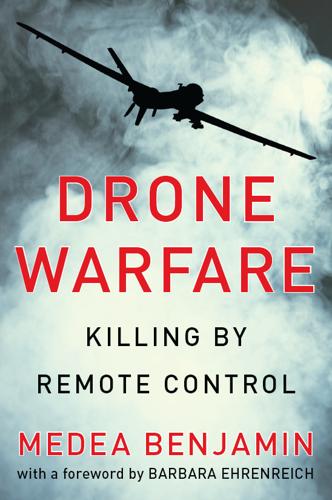
Drone Warfare: Killing by Remote Control
by
Medea Benjamin
Published 8 Apr 2013
“The escalation in surveillance they ensure is substantial, and the effect they have on the culture of personal privacy—having the state employ hovering, high-tech, stealth video cameras that invade homes and other private spaces—is simply creepy.”151 Equally creepy is the possibility that drone technology is not just coming back to the US by way of local law enforcement agencies desperate for new, Department of Homeland Security-funded gadgets. Soon, the technology could be brought back to the homeland whether US policymakers like it or not. As Ralph Nader observed in a column published in the fall of 2011, drone technology is “becoming so dominant and so beyond any restraining framework of law or ethics that its use by the US government around the world may invite a horrific blowback.”152 Two days after the piece was published, a twenty-six-year-old man from Massachusetts, Rezwan Ferdaus, was arrested and accused of plotting to attack the Pentagon and US Capitol with small drone aircraft filled with explosives.153The plan he delivered to undercover agents involved using three remote-controlled planes, similar to military drones, guided by GPS equipment.

Sleepwalk With Me: And Other Painfully True Stories
by
Mike Birbiglia
Published 11 Oct 2010
We don’t even need to interview him. He sounds completely qualified.” So Lisa and I go on the Scrambler. And from the moment I sit down in the Scrambler and they latch on the bar seat belt, I know I’m going to throw up for sure. The bar seat belt is not a reassuring piece of safety equipment. That is not a Ralph Nader–approved device. I don’t think the bar seat belt has ever saved anyone’s life, though it has probably pinned someone’s esophagus to the pavement in a Scrambler accident, ensuring that the Scrambler victim won’t ever talk about the Scrambler accident. So they latch the bar seat belt shut and I think, This is bad.
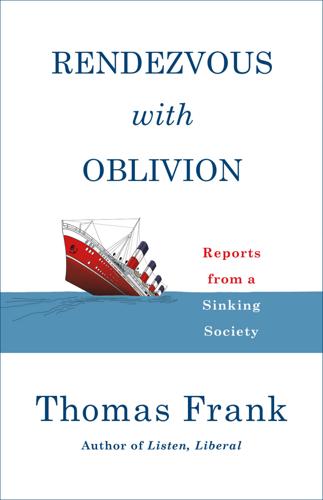
Rendezvous With Oblivion: Reports From a Sinking Society
by
Thomas Frank
Published 18 Jun 2018
The paper’s blogs, for instance, published regular pieces by Sanders sympathizers such as Katrina vanden Heuvel and the cartoonist Tom Toles. (The blogs also featured the efforts of a few really persistent Clinton haters.) The Sunday Outlook section once featured a pro-Sanders essay by none other than Ralph Nader, a demon figure for many of the paper’s commentators. But readers of the Post’s editorial pages had to wait until May 26 to see a really full-throated essay supporting Sanders’s legislative proposals. Penned by Jeffrey Sachs, the eminent economist and professor at Columbia University, it insisted that virtually all the previous debate on the subject had been irrelevant, because standard economic models did not take into account the sort of large-scale reforms that Sanders was advocating.
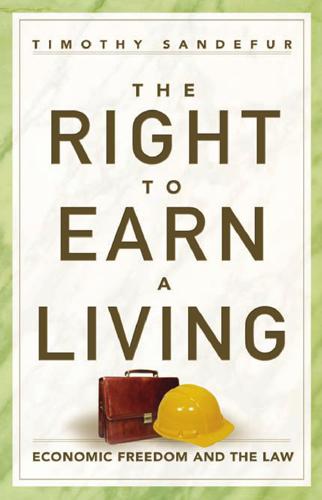
The Right to Earn a Living: Economic Freedom and the Law
by
Timothy Sandefur
Published 16 Aug 2010
The semipublic nature of premodern corporations thus left a legacy that lives to the present day.70 The second way in which the antiquated model of the corporation persists is in the oft-heard description of corporations as “creatures of the state.” This description usually accompanies proposals for government control over corporations; in the 1970s, it even inspired Ralph Nader and colleagues to call for a federal corporations law that would take the regulation of corporate entities out of the hands of the states.71 They argued that corporations were created by government permission and therefore owed a “responsibility” to the general public, which would take the form of government control over corporate decisionmaking.
…
Illinois, 94 U.S. (4 Otto) 113, 148–49 (1876) (Field, J., dissenting). 70. Timothy Sandefur, “A Gleeful Obituary for Poletown Neighborhood Council v. Detroit,” Harvard Journal of Law and Public Policy 28 (2005): 654–60; and Timothy Sandefur, “Mine and Thine Distinct: What Kelo Says about Our Path,” Chapman Law Review 10 (2006): 15–34. 71. Ralph Nader, Mark Green, and Joel Seligman, Taming the Giant Corporation (New York: W. W. Norton, 1976). 72. Hessen, In Defense of the Corporation. See also Robert Hessen, “A New Concept of Corporations: A Contractual and Private Property Model,” Hastings Law Journal 30 (1979): 1327–50. 73. Hessen, In Defense of the Corporation, p. 17. 74.
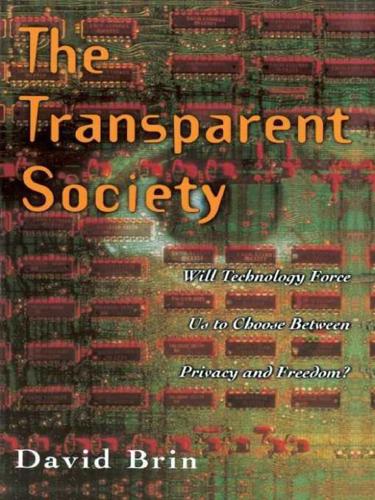
The Transparent Society: Will Technology Force Us to Choose Between Privacy and Freedom?
by
David Brin
Published 1 Jan 1998
In exploring these matters, weʼll see that some vituperative shouting matches are based on simple misunderstandings, whereas other disagreements appear so fundamental that compromise of any sort may be anathema to either side. THE ACCOUNTABILITY MATRIX “No man is so fond of freedom himself that he would not chuse to subject the will of some individuals of society to his own.” OLIVER GOLDSMITH, THE VICAR OF WAKEFIELD In 1996 the famed muckraker and consumer advocate Ralph Nader was the presidential candidate of Californiaʼs Green Party. At one point, after lecturing earnestly about the need to hold corporate officials accountable for every nefarious transaction and scheme, Nader was asked why he refused to publish his own financial records, as all other candidates had done.
…
By demanding that officials be scrutinized every bit as much as they scrutinize us. Two millennia ago Juvenal posed the riddle, “Who shall watch the watchman?” There is just one answer. We all will. Going back to the accountability matrix, one can take almost any contemporary privacy issue and see people choosing different boxes, depending on their point of view. As Ralph Nader vividly illustrated, any effort either to restrict or open up a data spigot is judged good or evil subjectively. When we enhance our own “privacy,” this may be seen by others as a sneaky attempt to keep them in the dark, a conspiratorial veil that might conceal threats to their liberty. Nowhere is this tendency more apparent than on the Internet, where the semi-official dogma is openness and liberty, but where unpopular opinions are often greeted with vicious attacks and masked retribution.

Fighting Traffic: The Dawn of the Motor Age in the American City
by
Peter D. Norton
Published 15 Jan 2008
Carruthers, “Automobile Accidents to Children,” Safety Engineering 49 (May 1925), 189–193 (189); “The Murderous Motor,” New Republic 47 (July 7, 1926), 189–190 (189); “The War after the War” (editorial), Detroit Free Press, August 23, 1927, 6; “The Motor More Deadly Than War,” Literary Digest 94 (August 27, 1927), 12. Notes to Chapter 1 269 14. For a brief review of the historical scholarship on auto safety in America, see introduction. Ralph Nader and Joel W. Eastman have concentrated attention on vehicle design, extending a critique of safety in the 1960s back to the 1920s; see Nader, Unsafe at Any Speed: The Designed-In Dangers of the American Automobile (Grossman, 1965); Eastman, Styling vs. Safety: The American Automobile Industry and the Development of Automotive Safety, 1900–1966 (University Press of America, 1984).
…
Clark), “The White Line Isn’t Enough,” Saturday Evening Post 210 (March 26, 1938), 12–13, 32, 37, 39, 41 (12). 42. Department of Commerce, Bureau of the Census, Historical Statistics of the United States, Colonial Times to 1970 (Government Printing Office, 1975), part 2, 719. 43. In this development, Ralph Nader played the role of a latter-day J. C. Furnas, with greater long-term success. See Nader, Unsafe at Any Speed: The Designed-In Dangers of the American Automobile (Grossman, 1965). 44. For a study of MADD, including a brief history of its origins, see Craig Reinarman, “The Social Construction of an Alcohol Problem: The Case of Mothers Against Drunk Drivers and Social Control in the 1980s,” Theory and Society 17 (Jan. 1988), 91–120.

Global Spin: The Corporate Assault on Environmentalism
by
Sharon Beder
Published 1 Jan 1997
For this reason we find the same revolving door pattern between public relations and lobbying firms and government as we found between think-tanks and government in Chapter Five. When the Republicans lost office in 1992 there was a mass movement of government officials to the lobbying and PR firms. Ralph Nader’s group, Congress Watch, tracked 300 of them: over half moved to Washington DC lobbying and PR firms.64 The door swings both ways, and former lobbyists often become part of government, where they have a unique opportunity to help their former clients. Hill & Knowlton’s lobbying efforts are aided by its employment of former government officials who have good access to government.
…
For example, the car industry is a big advertiser in the New York Times, and “Times publisher and CEO Arthur Sulzberger admitted that he leaned on his editors to present the auto industry’s position because it ‘would affect advertising’.”40 The group Fairness and Accuracy in Reporting (FAIR) has told how Forbes magazine, anxious to attract and maintain insurance company advertising (which in 1990 made up seven per cent of its advertising income), criticized personal injury lawyers for winning money off “outnumbered” insurance companies and attempted to bring Ralph Nader, a thorn in the side of the insurance industry, into disrepute.41 Corporations can also use sponsorship, a more indirect form of advertising, to influence the content of the media. The US Public Broadcasting Service (PBS) and National Public Radio are heavily dependent on corporate sponsors for their broadcasting because their government funding is insufficient.
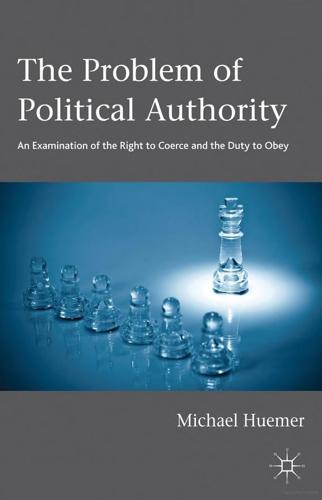
The Problem of Political Authority: An Examination of the Right to Coerce and the Duty to Obey
by
Michael Huemer
Published 29 Oct 2012
‘A Scale for Identifying “Stockholm Syndrome” Reactions in Young Dating Women: Factor Structure, Reliability and Validity’, Violence and Victims 10: 3–22. Graham, Dee, Edna Rawlings, and Roberta Rigsby. 1994. Loving to Survive: Sexual Terror, Men’s Violence, and Women’s Lives. New York: New York University Press. Green, Leslie. 1988. The Authority of the State. Oxford: Clarendon Press. Green, Mark J. (ed.). 1973. The Monopoly Makers: Ralph Nader’s Study Group Report on Regulation and Competition. New York: Grossman. Gross, Samuel R., Kristen Jacoby, Daniel J. Matheson, Nicholas Montgomery, and Sujata Patil. 2005. ‘Exonerations in the United States 1989 through 2003’, Journal of Criminal Law and Criminology 95: 523–60. Grossman, Dave. 1995.
…
Murray, Charles. 1984. Losing Ground: American Social Policy, 1950–1980. New York: Basic Books. Murray, Charles, and Christopher Jencks. 1985. ‘“Losing Ground”: An Exchange’, New York Review of Books 32, 16 (October 24): 55–6. Nader, Ralph. 1973. ‘Introduction’. Pp. ix–xv in The Monopoly Makers: Ralph Nader’s Study Group Report on Regulation and Competition, ed. Mark J. Green. New York: Grossman. Nagel, Thomas. 1991. Equality and Partiality. New York: Oxford University Press. ——. 1995. ‘Nozick: Libertarianism without Foundations’. Pp. 137–49 in Other Minds: Critical Essays 1969–1994. New York: Oxford University Press.

Consumed: How Markets Corrupt Children, Infantilize Adults, and Swallow Citizens Whole
by
Benjamin R. Barber
Published 1 Jan 2007
This can be undermined if they are seen as simply shilling for a different ‘anti-corporate’ brand.”74 Lasn is certainly aware of the dangers of faux resistance. He notes in Culture Jam how “a lot of people who think they’re rebelling aren’t,” and derides those leftist activists who “have been reduced to the level of little kids throwing snowballs at passing cars.” He has unkind things to say about reformers like Ralph Nader and the Public Interest Research Groups network (PIRG) he helped found, as well as about former Harper’s Magazine editor Lewis Lapham.75 Yet throwing a “nice” brand of Blackspot sneakers at world bad-boy brand leader Nike does not seem much different than throwing snowballs at passing cars. Indeed if Blackspot ever won an unlikely victory, it would be a victory of superior marketing that the marketing industry would no doubt ape and steal for its own purposes.
…
Their seven signature proposals for curbing corruption, reigning in the political influence of business, confronting monopolies, and dealing with corporate crime all point to a renewal of popular sovereignty rather than to marketplace solutions based on innovation or creative destruction.30 Consumer advocate Ralph Nader also turns to government for enforcement of the consumer standards he continues to promote. Breaking the vicious cycle from within remains a daunting task. Media and cultural studies programs as well as the arts themselves, while formidable potential adversaries of monopolistic market practices, have largely been subordinated to those same market forces, making real autonomy difficult.

Evil Geniuses: The Unmaking of America: A Recent History
by
Kurt Andersen
Published 14 Sep 2020
Respectable opinion seemed to have turned against big business so quickly and so hard. An exposé of the dangers of synthetic pesticides, Rachel Carson’s Silent Spring, had become a number-one bestseller for months and introduced the idea of “the environment” to millions of Americans, which led directly to the creation of the EPA. There was young Ralph Nader, the tenacious lawyer-investigator-activist out of Harvard Law School, whose own damning exposé of corporate irresponsibility, Unsafe at Any Speed: The Designed-In Dangers of the American Automobile, became a bestseller in 1966 and by the end of the year inspired a new federal regulatory bureaucracy to improve car safety.
…
To make fundamental and permanent change, they also needed to cultivate power in the other, largely unelected branch of government, the judiciary. They needed to colonize the legal community and reframe the law itself to make sure they kept getting their way. Instead of litigation almost entirely being used against them by antitrust enforcers and class-action troublemakers and environmentalists and Ralph Naders, they needed to reshape fundamental American legal understandings—to make it a toolbox they could use to accumulate more power and wealth for big business and the rich over the long run. People these days throw around the phrase fundamental structural change a lot, but what the right did in the legal domain was exactly that, breathtakingly so.
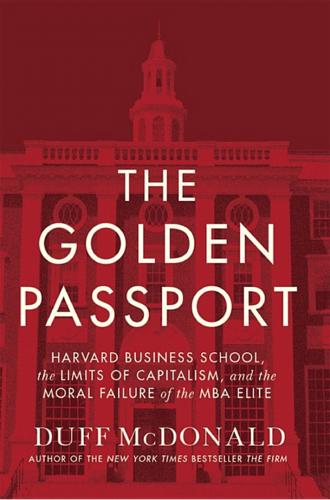
The Golden Passport: Harvard Business School, the Limits of Capitalism, and the Moral Failure of the MBA Elite
by
Duff McDonald
Published 24 Apr 2017
Asked about the growing importance of outside earnings, Boston attorney Francis H. Burr, a member of the Harvard Corporation, was quoted as saying, “a lot of people are concerned and so are we.”1 If that was true, although it seems unlikely, they certainly didn’t do anything about it. In the late 1980s, the Ralph Nader–sponsored Harvard Watch found that academics held 202 board seats in the country’s 200 largest companies, nearly four times their representation in 1969. Professors and universities had become beholden to corporations, the group argued, and had lost their capacity for dispassionate analysis. At the time, full professors made about $100,000 a year at HBS, but they made multiples of that by consulting.
…
Or Larry Summers, who upon being appointed Bill Clinton’s Treasury secretary in 1999 received congratulations from Enron chairman Kenneth Lay, to which Summers responded, “I’ll keep my eye on power deregulation and energy-market infrastructure issues.” When Bush was elected, Summers left to become president of Harvard. When asked for his reaction to the HarvardWatch report, consumer advocate Ralph Nader said it was simply the “latest chapter in the long-running story of the hijacking of Harvard University’s name and reputation by corporate interests.”20 But those are stories for another book. Jeff Skilling holds the record for the most mortifying corner-office behavior by a graduate of HBS, at least that we know of, save for some that George W.
…
Third, and crucially, the long list of people who both shared their thoughts and gave me their time during the researching of the book. Anyone who is quoted herein has my gratitude, but I need to single out a few, including J. C. Spender, Henry Mintzberg, Casey Gerald, Walter Kiechel, Kevin Mellyn, Miriam Datskovsky, and Ralph Nader. As usual, for anyone I spoke to, I hope the results seem worth the time spent. Fourth, the people who kept me sane over the past few years when things could just as easily have gone the other way: Luke Froude, Pablo Galarza, Adam Masry, Gilda Riccardi, Lauren Wells, Tara McIndoo, and Laura Jones.

Interventions
by
Noam Chomsky
In the United States, the Greens are concerned with long-term development of an electoral alternative of a kind that has succeeded in countries with a more functional democracy than here. But the Greens lack the support in the corporate sector that is necessary to compete in U.S. elections, just as someone who manufactures cars at home lacks the resources to compete with General Motors. Ralph Nader has used the (rather artificial) glare of electoral politics to raise important issues not on the corporate agenda of either major party. But he’s seen as a spoiler, fronting for Bush (hardly Nader’s intention), which discredits him and the excellent organizations that he has founded. Beyond the alternative candidates is the immediate real-world issue of Bush versus Kerry.

Amusing Ourselves to Death: Public Discourse in the Age of Show Business
by
Neil Postman
and
Jeff Riggenbach Ph.
Published 1 Apr 2013
So did the star of the Watergate Hearings, Senator Sam Ervin. Former President Gerald Ford joined with former Secretary of State Henry Kissinger for brief roles on “Dynasty.” Massachusetts Governor Mike Dukakis appeared on “St. Elsewhere.” Speaker of the House Tip O‘Neill did a stint on “Cheers.” Consumer advocate Ralph Nader, George McGovern and Mayor Edward Koch hosted “Saturday Night Live.” Koch also played the role of a fight manager in a made-for-television movie starring James Cagney. Mrs. Nancy Reagan appeared on “Diff’rent Strokes.” Would anyone be surprised if Gary Hart turned up on “Hill Street Blues”? Or if Geraldine Ferraro played a small role as a Queens housewife in a Francis Coppola film?
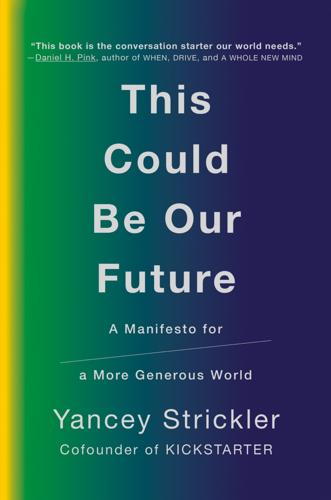
This Could Be Our Future: A Manifesto for a More Generous World
by
Yancey Strickler
Published 29 Oct 2019
Nothing Friedman had shared before caught the attention of the business community quite like his 1970 op-ed in the New York Times that made the case for financial maximization. At the time, the United States was mired in Vietnam. Young men were losing their lives in the war. New movements like Ralph Nader’s consumer safety advocacy were demanding companies be held accountable to the public interest. What more could America’s companies do for the greater good? Milton Friedman wrote in the New York Times that this movement had it all wrong. To say that a company owes anything to society is absurd, he suggested.

The Relentless Revolution: A History of Capitalism
by
Joyce Appleby
Published 22 Dec 2009
Waiting in the wings were hundreds of experts who had been studying just how destructive the twentieth century had been to the planet that we inhabit. Environmentalists mounted one of the most successful political movements in history. In 1962 Michael Harrington in his The Other America: Poverty in the United States reminded the public that not everyone was prospering. Three years later Ralph Nader’s Unsafe at Any Speed took on America’s automakers; its subtitle delivers the message: The Designed-in Dangers of the American Automobile. Their words seemed even more prophetic with the multiple blows of an oil crisis, rising unemployment, and an inflation rate spiraling upward. A younger generation took up the causes of the degrading environment, product safety, and the persisting plight of the poor and made them their own.
…
If one bought a million-dollar house with a down payment of $100,000 and turned around and sold it for $1.1 million in a rising real estate market, he or she could recover the down payment plus another $100,000, doubling the initial investment. Leveraging is possible when you gain title to some object with a partial payment of it. To be successful, there must be an appreciation of value. Real estate prices in the United States enjoyed such a rise, nearly doubling between 2000 and 2006. Aptly called casino capitalism by Ralph Nader, mortgages showed the way toward securitizing any form of credit from automobile payments to credit cards. Wanting to keep the good times going, financial institutions began issuing mortgages to people with risky credit records or insufficient income to make their payments. Banks and savings and loan companies lured customers with low down or no down payment offers.
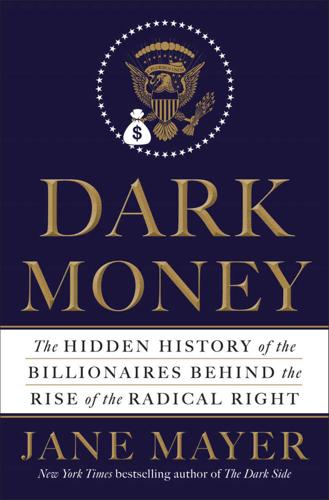
Dark Money: The Hidden History of the Billionaires Behind the Rise of the Radical Right
by
Jane Mayer
Published 19 Jan 2016
So in the spring of 1971, Powell, who was then sixty-three, had watched with growing agitation as student radicals, antiwar demonstrators, black power militants, and much of the liberal intellectual elite turned against what they saw as the depravity of corporate America. Powell believed American capitalism was facing a crisis. All summer long, he clipped magazine and newspaper articles documenting the political threat. He was particularly preoccupied with Ralph Nader, the young Harvard Law School graduate whom Daniel Patrick Moynihan, then assistant secretary of labor, had hired to investigate auto safety hazards. Nader’s 1965 exposé on General Motors, Unsafe at Any Speed, accused the auto industry of putting profits ahead of safety, triggering the American consumer movement and undermining Americans’ faith in business.
…
Less than a decade later, in 1984, he set out to launch a private political sales force. On paper, it was yet another Koch-funded conservative nonprofit group fighting for less government. It called itself Citizens for a Sound Economy (CSE). From the outside, it looked like an authentic political group, created by a groundswell of concerned citizens, much like Ralph Nader’s Public Interest Research Groups, which had sprung up all over the country. According to the nonpartisan Center for Public Integrity, however, it was in fact a new kind of weapon in the arsenal of several of America’s biggest businesses—a fake populist movement secretly manufactured by corporate sponsors—not grass roots, but “Astroturf,” as such synthetic groups came to be known.
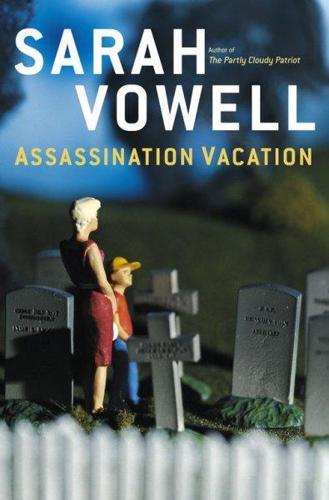
Assassination Vacation
by
Sarah Vowell
Published 28 Mar 2005
As a Democrat who voted for Al Gore in the 2000 presidential election, an election suspiciously tipped to tragic Republican victory because of a handful of contested ballots in the state of Florida, I, for one, would never dream of complaining about the votes siphoned in that state by my fellow liberal Ralph Nader, who convinced citizens whose hopes for the country differ little from my own to vote for him, even though had those votes gone to Gore, perhaps those citizens might have spent their free time in the years to come more pleasurably pursuing leisure activities, such as researching the sacrifice of Family Garfield, instead of attending rallies and protests against wars they find objectionable, not to mention the money saved on aspirin alone considering they’ll have to pop a couple every time they read the newspaper, wondering if the tap water with which they wash down the pills is safe enough to drink considering the corporate polluter lobbyists now employed at the EPA.
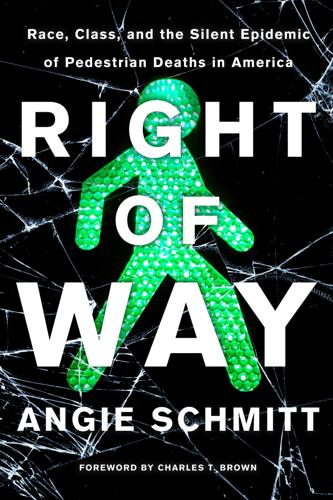
Right of Way: Race, Class, and the Silent Epidemic of Pedestrian Deaths in America
by
Angie Schmitt
Published 26 Aug 2020
Finally, late in 2019, the NHTSA announced that it would be updating its five-star rating system to “consider new technologies tied to the safety of pedestrians and other vulnerable road users such as cyclists.”43 Exactly what is in the new rule will not be known until it is released, but according to the NHTSA news release, it seems that the agency will limit its ratings to whether or not cars include partially automated features like automatic emergency braking or automatic pedestrian detection. The NHTSA will likely stop short of evaluating how different body designs and different vehicle styles affect pedestrian safety. Back in the 1960s and 1970s, after Ralph Nader published Unsafe at Any Speed, these kinds of improvements—passive safety features, features that protect someone from devastating injury even in the event of a crash—were added to the interior of cars. Additions like airbags, seat belts, and padded dashboards all help absorb the impact of the blow when someone seated inside a car is in a crash.

What Money Can't Buy: The Moral Limits of Markets
by
Michael Sandel
Published 26 Apr 2012
Erin White, “In-Your-Face Marketing: Ad Agency Rents Foreheads,” Wall Street Journal, February 11, 2003. 48. Andrew Adam Newman, “The Body as Billboard: Your Ad Here,” New York Times, February 18, 2009. 49. Aaron Falk, “Mom Sells Face Space for Tattoo Advertisement,” Deseret Morning News, June 30, 2005. 50. News release from Ralph Nader’s Commercial Alert: “Nader Starts Group to Oppose the Excesses of Marketing, Advertising and Commercialism,” September 8, 1998, www.commercialalert.org/issues/culture/ad-creep/nader-starts-group-to-oppose-the-excesses-of-marketing-advertising-and-commercialism; Micah M. White, “Toxic Culture: A Unified Theory of Mental Pollution,” Adbusters #96, June 20, 2011, www.adbusters.org/magazine/96/unified-theory-mental-pollution.html; shopper quoted in Cropper, “Fruit to Walls to Floor, Ads Are on the March”; advertising executive quoted in Skip Wollenberg, “Ads Turn Up in Beach Sand, Cash Machines, Bathrooms,” Associated Press, May 25, 1999.
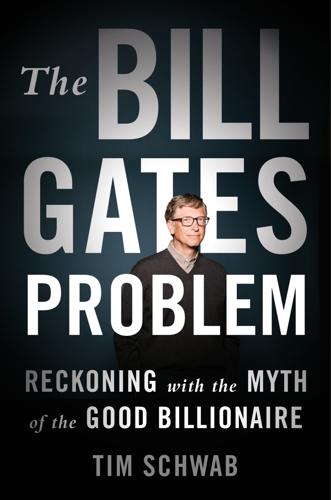
The Bill Gates Problem: Reckoning With the Myth of the Good Billionaire
by
Tim Schwab
Published 13 Nov 2023
While Bill Gates went off to Harvard after high school, Love went to Alaska, working in canneries and commercial fisheries before starting several public interest NGOs. Eventually, he found his own way to Harvard, managing to get into a master’s program at age thirty despite not having an undergraduate degree. He went on to work for famed consumer advocate Ralph Nader, helping lead a campaign to interrogate the greatest monopolist of the day. This included a 1997 conference called Appraising Microsoft, a two-day event that brought together leading critics of the software giant. Nader invited Gates, who declined to participate. As Love and Nader were scrutinizing Microsoft’s monopoly power over the computer revolution, Love’s work was broadening into public health, where patents had become a flash point in the unfolding HIV/AIDS crisis.
…
bilking American consumers: “DeFazio, Doggett Lead Members in Urging HHS to Lower Cost of Prostate Cancer Drug,” Press Release, February 8, 2022, website of United States Congressman Peter DeFazio, https://web.archive.org/web/20220211152659/https://defazio.house.gov/media-center/press-releases/defazio-doggett-lead-members-in-urging-hhs-to-lower-cost-of-prostate. shore of Lake Washington: Madeline Stone and Matt Weinberger, “19 Crazy Facts About Bill Gates’ $127 Million Mansion,” Business Insider, December 7, 2018, https://www.businessinsider.com/crazy-facts-about-bill-gates-house-2016-11. consumer advocate Ralph Nader: “Appraising Microsoft I: Real Audio of the November 13–14 1997 Appraising Microsoft Presentations,” November 13–14, 1997, http://www.appraising-microsoft.org/1st.html; “Nader Responds to Microsoft Letter,” November 13, 1997, http://www.appraising-microsoft.org/rnstatemt.html. manufacturer named Cipla: Brian Till, “How Drug Companies Keep Medicine out of Reach,” Atlantic, May 15, 2013, https://www.theatlantic.com/health/archive/2013/05/how-drug-companies-keep-medicine-out-of-reach/275853/.
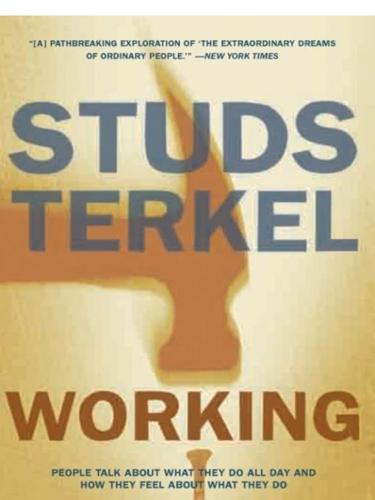
Working: People Talk About What They Do All Day and How They Feel About What They Do
by
Studs Terkel
Published 1 Jan 1974
The only thing that would require a salesman is the price. Ninety-nine out of a hundred people are price-conscious. That’s all they care about. You could sell ‘em a bag of potatoes if the price was right. You could sell ’em a 1948 Chevy if the price was right. How do you feel about Ralph Nader? Pardon me? How do you feel about Ralph Nader? We could do without him. He’s taken the choice away from the people. He doesn’t give them the choice of having head restraints or belts. Or having emission control systems. He took that choice away. Carbon monoxide, all that poisonous stuff, leave that to the manufacturers that know such things and what it would cost to build all that new equipment.
…
The broiler farmer invests somewhere between twenty and thirty thousand dollars in two chicken houses. They hold up to seven thousand baby chicks. The packing company puts the chicks in and supplies the feed and medicine. At the end of eight weeks they’re four and a half pounds. The companies pick ‘em up and pay you for ’em. Ralph Nader’s been after them. It’s almost white slavery. The farmer invests and the company can say, ‘This is a lousy lot, we’re not gonna pay you the full price.’ But you’re still putting in twelve hours a day.” 85 Clyde Ellis, a former congressman from Arkansas, recalls, “I wanted to be at my parents’ house when electricity came.
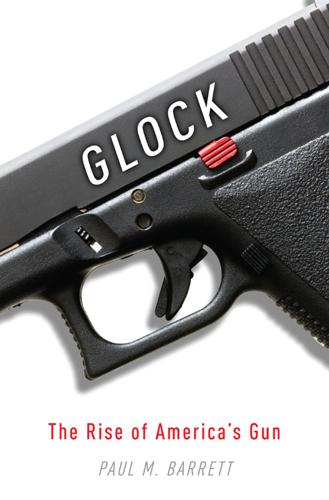
Glock: The Rise of America's Gun
by
Paul M. Barrett
Published 10 Jan 2012
Under traditional American injury law, the intervention of a third party—the curious child who foolishly shoots a friend, the convenience-store robber who attacks a clerk—was thought to break the chain of liability between the victim and the manufacturer. But since the 1960s, some US judges and law professors had been expanding theories of liability to give injury victims a better chance of finding a defendant with deep pockets. The consumer-protection movement led by Ralph Nader reinforced this trend and helped turn up new evidence that manufacturers often knew more than they liked to admit about hazards associated with their products. Rising crime rates in the 1970s and 1980s added a sense of urgency to the gun-control movement and prompted some activists to turn their attention to the courts, as well as the legislature, as a venue where they might rein in companies that make and sell firearms.
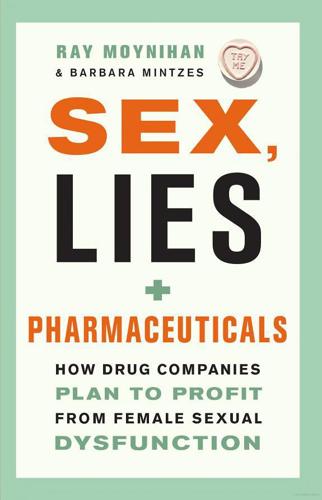
Sex, Lies, and Pharmaceuticals: How Drug Companies Plan to Profit From Female Sexual Dysfunction
by
Ray Moynihan
and
Barbara Mintzes
Published 1 Oct 2010
She argued that any decision about approving the testosterone patch should be postponed until larger, longer studies were done—a theme echoed by others opposing approval. In his three-minute address to the committee, high-profile health advocate Dr Sid Wolfe also focused on safety issues. Wolfe was from Public Citizen, the Washington DC–based consumer watchdog that Ralph Nader helped to set up, specialising in medical matters and drug safety. He referred to scientific evidence suggesting that testosterone use could increase a woman’s risk of both heart disease and breast cancer, and urged the committee not to approve the patch. Dr Wolfe, who had been sitting next to Tiefer throughout the hearings, ended his short presentation by saying that a large proportion of women with decreased desire could respond positively to counselling.

The Five-Year Party: How Colleges Have Given Up on Educating Your Child and What You Can Do About It
by
Craig Brandon
Published 17 Aug 2010
“By the time that great ‘new car smell’ wears off, so does the joy of owning the car.”182 Alan Michael Collinge, founder of the political action committee Student Loan Justice and author of The Student Loan Scam, has shown how predatory lenders teamed with Congress and party school administrators to set up one of the largest loan sharking operations in American history, worth $90 billion as of 2008. 183 Instead of encouraging graduates to pay off their loans as soon as possible, as credit counselors advise, predatory lenders encourage graduates to default so they can load on fees and penalties that can double or even triple the amount to be paid back. Ralph Nader, commenting on the problem in 2006, said, “the corporate lawyers who conceived this self-enriching system ought to get the nation’s top prize for shameless perversity.” 184 Collinge’s website has drawn student loan horror stories from all over the country. Britt Napoli, for example, originally borrowed $30,000 to attend graduate school.
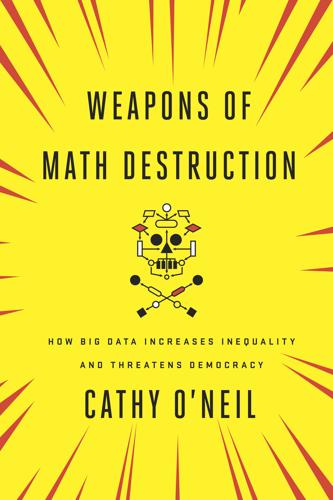
Weapons of Math Destruction: How Big Data Increases Inequality and Threatens Democracy
by
Cathy O'Neil
Published 5 Sep 2016
—Cory Doctorow, author of Little Brother and co-editor of Boing Boing “Many algorithms are slaves to the inequalities of power and prejudice. If you don’t want these algorithms to become your masters, read Weapons of Math Destruction by Cathy O’Neil to deconstruct the latest growing tyranny of an arrogant establishment.” —Ralph Nader, author of Unsafe at Any Speed “Next time you hear someone gushing uncritically about the wonders of Big Data, show them Weapons of Math Destruction. It’ll be salutary.” —Felix Salmon, Fusion “From getting a job to finding a spouse, predictive algorithms are silently shaping and controlling our destinies.
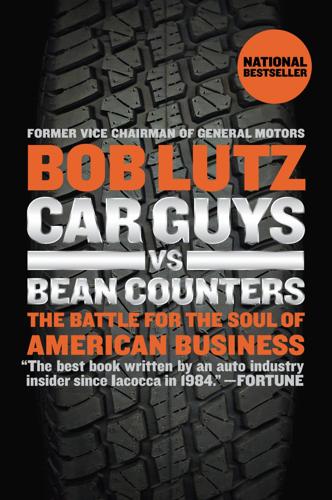
Car Guys vs. Bean Counters: The Battle for the Soul of American Business
by
Bob Lutz
Published 31 May 2011
Sure, some voiced concern and resentment, and best-selling books, like Vance Packard’s The Waste Makers and John Keats’s The Insolent Chariots, reflected a small but growing nucleus of concern over whether all this arrogant opulence and the ever-shorter fashion cycle were really of benefit to society. But these books were written by intellectual elitists . . . so who cared what they said? One incident that caused GM lasting harm was a 1965 book by a young lawyer and consumer advocate by the name of Ralph Nader. Unsafe at Any Speed accused the Corvair, different from other American cars with its rear-engine design, of being inherently unstable and accident-prone. Nader’s work gained huge notoriety and effectively shut down Corvair sales in the mid-1960s. Unaccustomed to being dented by a lone ideologue, GM hired investigators to delve into Nader’s personal life, seeking any salacious information that would silence him.
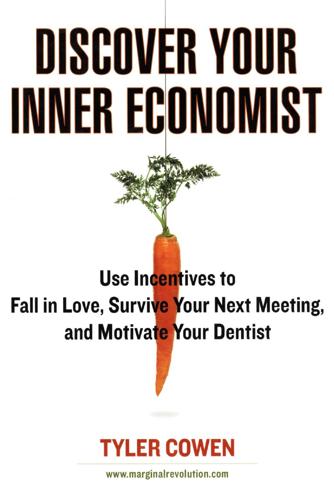
Tyler Cowen-Discover Your Inner Economist Use Incentives to Fall in Love, Survive Your Next Meeting, and Motivate Your Dentist-Plume (2008)
by
Unknown
Published 20 Sep 2008
Don't send a check through the mail at all. Stuff some more cash in your pocket next time you are in Calcutta-or perhaps Cancun-and give it away on the street. Even without the tax break, we can do more good for the world this way. The more devious lesson is that we can subvert the nonprofits we do not like. Are you offended by Ralph Nader, or perhaps you think PETA (People for the Ethical Treatment of Animals) goes too far? Does the Republican or Democratic National Committee make you angry? Run up their costs of operation. Choose one nonprofit you do not like and send them twenty bucks. Once is enough. Mention that you are thinking of putting them in your will, or perhaps let it drop that you play at the local polo club or own a yacht.
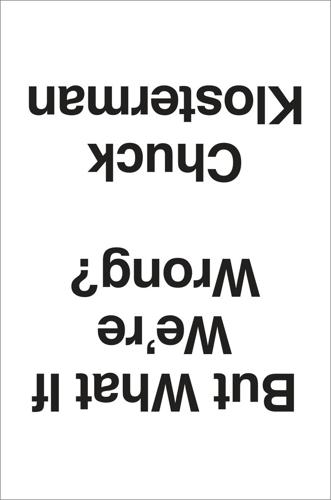
But What if We're Wrong? Thinking About the Present as if It Were the Past
by
Chuck Klosterman
Published 6 Jun 2016
Bush is seen dancing with balloons and Gore is captured in a conga line, and then RATM jams econo in a wood-paneled studio (to a song that is, in retrospect, propulsive and committed, taken from an album I probably underrated). We get a supercut of newsmakers in quick succession—Sonny Bono, Ken Starr, the pope, Bill Clinton—with the ingrained implication that they are all complicit in some big-money boondoggle, and that all politicians and parties are fundamentally interchangeable. It ended with a message from Ralph Nader. Part of the reason I appreciated this video was that I agreed with it. The other part was that the message seemed so self-evidently true that I couldn’t believe a group as politically impractical as Rage Against the Machine was the band making it (“Tom Morello is finally embracing pragmatism,” I pragmatically assumed).
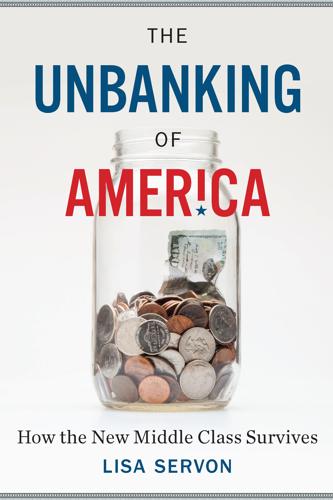
The Unbanking of America: How the New Middle Class Survives
by
Lisa Servon
Published 10 Jan 2017
Dodd-Frank mandated the creation of the Consumer Financial Protection Bureau (CFPB) in 2011 in order to “make markets for consumer financial products and services work for Americans.” Elizabeth Warren had conceived of this idea in 2007, before the crisis. A Harvard Law School professor at the time, she wrote an article titled “Unsafe at Any Rate,” a reference to Ralph Nader’s 1965 book Unsafe at Any Speed. Warren argued for a government consumer-financial-protection agency akin to the Consumer Product Safety Commission created under President Nixon in 1972. To make her point, she likened credit cards and mortgages to toasters and microwaves: It is impossible to buy a toaster that has a one-in-five chance of bursting into flames and burning down your house.

Suburban Nation
by
Andres Duany
,
Elizabeth Plater-Zyberk
and
Jeff Speck
Published 14 Sep 2010
dk In our “highly evolved” regulatory system, this process is most often accomplished through expensive lawsuits, as documented in The Death of Common Sense. In light of this situation, a number of not-for-profit organizations have arisen over the years—the National Resources Defense Council, the Environmental Defense Fund, Ralph Nader’s Public Citizen—capable of throwing legal firepower at otherwise unresolvable problems. As of yet, there is no such advocate for the built environment. But the sophisticated legal strategies that have succeeded in attacking air pollution and corporate negligence are also available to activists concerned similarly about their cities.
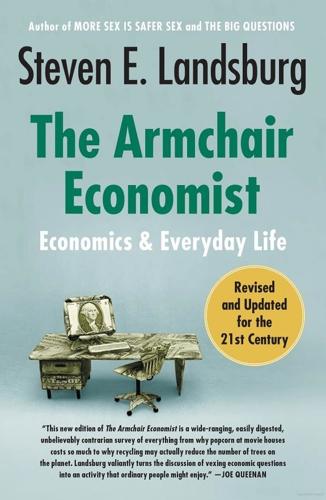
The Armchair Economist: Economics and Everyday Life
by
Steven E. Landsburg
Published 1 May 2012
Virtually all economists agreed that if the price were allowed to rise freely, people would buy less gasoline. Many noneconomists believed otherwise. The economists were right: When price controls were lifted, the lines disappeared. The economist's faith in the power of incentives serves him well, and he trusts it as a guide in unfamiliar territory. In 1965, Ralph Nader published Unsafe at Any Speed, a book calling attention to various design elements that made cars more dangerous than necessary. The federal government soon responded with a wide range of automobile safety legislation, mandating the use of seat belts, padded dashboards, collapsible steering columns, dual braking systems, and penetration-resistant windshields.

How Capitalism Saved America: The Untold History of Our Country, From the Pilgrims to the Present
by
Thomas J. Dilorenzo
Published 9 Aug 2004
Hessen, Robert. In Defense of the Corporation. Stanford, CA: Hoover Institution Press, 1979. Hessen shatters the myth that “big business” is necessarily bad for society, showing how businesses grow by satisfying large numbers of consumers. He also destroys the anticapitalist arguments of such gadflies as Ralph Nader. Heyne, Paul. The Economic Way of Thinking. 9th ed. Upper Saddle River, NJ: Prentice Hall, 2000. One of the very best contemporary introductory economics textbooks. Higgs, Robert. “Regime Uncertainty: Why the Great Depression Lasted So Long and Why Prosperity Resumed after the War.” Independent Review, Spring 1997, 561–90.
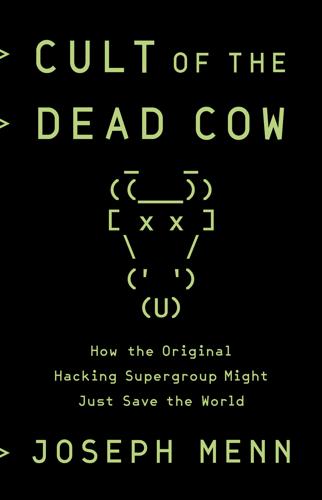
Cult of the Dead Cow: How the Original Hacking Supergroup Might Just Save the World
by
Joseph Menn
Published 3 Jun 2019
Without the disclosures, only the hackers who took the effort to reverse engineer the patches would have been able to launch the attacks, but there would have been less public awareness of the problems. Mudge and Wysopal, who wrote many of the advisories, became the most visible and articulate explainers of the researchers’ side. “I wanted the L0pht to be Consumer Reports and Rachel Carson and Ralph Nader,” Mudge said. “That was my vision.” Despite his youth, the group took Christien along for hangout sessions at New Hack City, home to the cDc servers. Mudge impressed him while playing quarters by rolling the coins off his nose before they bounced into a beer glass. As an MIT junior, Christien took a class on social issues in computing that turned out to be mostly about security.

A Brief History of Motion: From the Wheel, to the Car, to What Comes Next
by
Tom Standage
Published 16 Aug 2021
“It is now possible to drive across the face of the nation without feeling you’ve been anywhere or that you’ve done anything,” he wrote. But his claim that Americans had finally fallen out of love with the automobile turned out to be incorrect. Car sales, and the economy, rebounded later in the year. The anti-car books in the 1960s, most famously Ralph Nader’s Unsafe at Any Speed: The Designed-In Dangers of the American Automobile (1965), focused on safety problems, and the industry’s failure to address them. Rather than calling for the end of the car, though, these books (with titles including Highway Homicide and Licensed to Kill) took for granted the central place of the automobile in modern life and demanded action to make it safer.

A Hacker's Mind: How the Powerful Bend Society's Rules, and How to Bend Them Back
by
Bruce Schneier
Published 7 Feb 2023
Some states enforce very early filing deadlines that penalize candidates who enter the race late, or rules that make it harder to get on the ballot if you’re not a Democrat or Republican. Forty-four states have “sore loser” laws that prevent the loser of a primary election from running in the general election as an independent candidate. This isn’t to say it never happens. After seeing how Ralph Nader affected the 2000 election, Republican operatives around the country tried to take advantage of Green Party candidates to siphon Democratic votes. In Seattle, an eighteen-year-old former Nader volunteer named Young Han contemplated running in the 2002 state legislature race. A “Mr. Shore” helped Han organize a campaign announcement and also donated to the campaign.
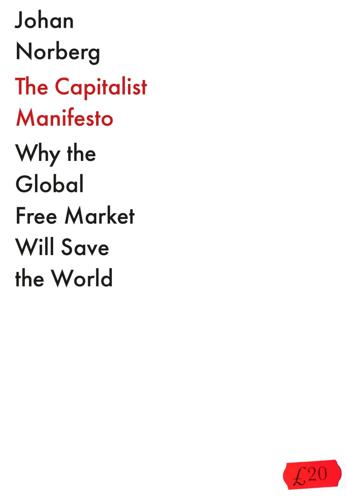
The Capitalist Manifesto
by
Johan Norberg
Published 14 Jun 2023
NAOMI KLEIN1 Twenty years ago, I began In Defence of Global Capitalism with a chapter about how the world was improving faster than ever. I attacked the popular perception that the world was getting worse, more dangerous and unfair, and that the poor were getting poorer. In 1999, the World Bank claimed that ‘world poverty has increased and growth prospects have dimmed for developing countries’. The famous American activist Ralph Nader declared: ‘The essence of globalization is a subordination of human rights, environmental rights, democracy rights to the imperatives of global trade and investment.’ Or as Sweden’s archbishop summarized the state of the world: ‘our journey leads straight to hell’.2 In contrast, I talked about the strangely unheralded progress that I saw in poor countries that had begun to liberalize their economies, which now had better incomes, agricultural production, nutrition, health, vaccination and education.
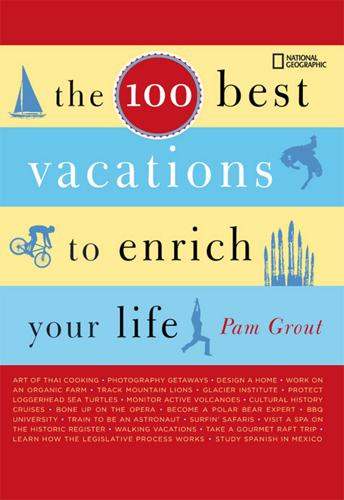
The 100 Best Vacations to Enrich Your Life
by
Pam Grout
Published 14 May 2007
Because IONS’ programs are so diverse and because the visiting organization leading a workshop or retreat determines the price, the cost of instruction varies. HOW TO GET IN TOUCH Institute of Noetic Sciences, 101 San Antonio Road, Petaluma, CA 94952, 707-775-3500, www.noetic.org. CLOSE UP FOUNDATION learn the legislative process WASHINGTON, D.C. There can be no daily democracy without daily citizenship. —Ralph Nader 64 | Most people think of politics as a spectator sport, something to watch from the sidelines. It never occurs to them that developing an informed option about government policy is at least as important as whether their football team wins on Sunday. But the Close Up Foundation is out to change all that.

The Gospel of Food: Everything You Think You Know About Food Is Wrong
by
Barry Glassner
Published 15 Feb 2007
His answer was not what I expected. “I don’t eat meat, so I wouldn’t. If it were an irradiated veggie burger I wouldn’t care,” he said, breaking ranks with his comrades not only in the organic movement, but in the consumer-advocacy movement as well. Public Citizen, the consumer organization founded by Ralph Nader and usually a close ally of the CSPI, has been a vocal opponent of the new technology. Citing decades-old studies while ignoring numerous others that contradict their claim, Public Citizen contends that irradiated foods cause cancer and other health problems. Jacobson disagrees. “I think the health risks are pretty minor,” he told me.

Made to Break: Technology and Obsolescence in America
by
Giles Slade
Published 14 Apr 2006
More and more, ad men began talking of the desirability of creating ‘psychological obsolescence.’”22 With the enormous success of The Hidden Persuaders, Packard found himself launched on a kind of career that was barely recognized in his own time. A strange combination of social critic, pop psychologist, and quasi–public intellectual, Packard hastily constructed books that would prefigu e popular works by Rachel Carson, Betty Friedan, John Kenneth Galbraith, Jules Henry, Christopher Lasch, Marshall McLuhan, and Ralph Nader. Packard was the firs writer to catch this wave. In just three years, he produced three nonfi tion bestsellers in a row, a feat no other American writer has equaled, before or since. The Status Seekers (1959) was a groundbreaking examination of America’s social and organizational dynamics, and The Waste Makers (1960) was a highly critical book-length study of planned obsolescence in contemporary American culture.

The Democracy Project: A History, a Crisis, a Movement
by
David Graeber
Published 13 Aug 2012
g This began to change somewhat when the presidential election campaign began to kick into gear, because of the lack of specific legislative issues and the specter of a Republican victory, but also, I suspect, because so many progressives stopped following electoral politics entirely. h In Illinois, to cite a typical example, 54 percent of voters over thirty turned out in 2010, but only 23 percent of those under thirty. i I heard this trick done endlessly with Ralph Nader: during campaigns, there is almost no discussion or even description of his positions, but merely warnings that a vote for Nader is a vote for the Republican candidate. Afterward, his positions are treated as if they represented the opinions of 2.7 percent of the American public (the percentage of the popular vote he received in 2000).

The Narcissist Next Door
by
Jeffrey Kluger
Published 25 Aug 2014
It doesn’t even require wealth to go on that “Vote for me or at least pay attention to me” ride. Did anybody believe Ron Paul or Dennis Kucinich had any chance at all of ever taking the oath of office—did they even believe it themselves?—or was it just the naked craving to be on the presidential stage? In 2000, Ralph Nader ran quixotically for president on the Green Party ticket, winning 2.8 million votes nationwide—and 97,488 of them in Florida, the large majority of which surely came out of Al Gore’s hide. That Florida haul would have been more than enough to overcome the paper-thin 537 votes by which Gore lost the state to George W.
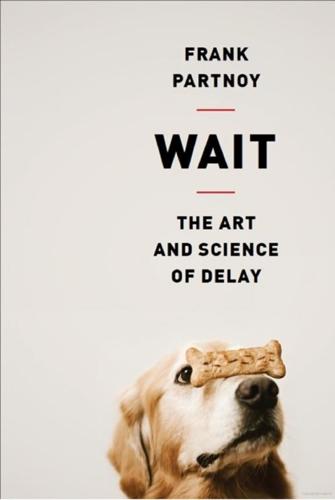
Wait: The Art and Science of Delay
by
Frank Partnoy
Published 15 Jan 2012
I am especially grateful for conversations with Bill Ackman, Julian Alexander, Michael Ashner, Lanny Breuer, Yaron Brook, Jeff Campbell, Dana Carney, Kathy Casey, Walker Clark, Simon Copleston, Jeff Critchfield, Patrick Daniels, Hernando de Soto, Sanford DeVoe, Gurpreet Dhaliwal, Andrew Dittmer, Jesse Eisinger, Anne Erni, Allen Farrell, Jerome Fons, Mary Fricker, Koji Fukumura, Maria Gavrilovic, Gordon Gerson, Jonathan Glater, Francesco Guerrera, Scott Harrison, Margaret Heffernan, Sheena Iyengar, James Jacoby, Rob Jafek, Roy Katzovicz, Adam Kolber, Eric Kolchinsky, Unni Krishnan, Steve Kroft, Stephen Labaton, Irene LaCota, Vice Chancellor Travis Laster, Angel Lau, Donald Lawrence, Joe Lonsdale, Angel Lopez, John Lovi, Jeff Madrick, Peter McLeod, Ralph Nader, Chuck O’Kelley, André Perold, Stephen Porges, Ernesto Reuben, Christine Richard, Darren Robbins, John Rogers, Jennifer Schenker, Todd Simkin, Robert P. Smith, Yves Smith, Mark Snell, Michael Solender, Judge Stanley Sporkin, Joseph Stiglitz, Richard Thaler, David Westbrook, and David Viniar. I was able to test-drive some of the ideas in this book in two speeches during October 2011, at the Seattle University School of Law’s Berle Center Corporate Governance Colloquium and the French-American Foundation’s Young Leaders program.
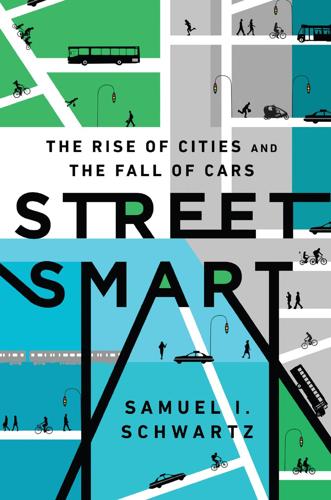
Street Smart: The Rise of Cities and the Fall of Cars
by
Samuel I. Schwartz
Published 17 Aug 2015
I was just as articulate as Benjamin. “Huh?” I replied. (I wasn’t a very smooth talker.) Was that even a field? Brian told me MIT had been studying traffic and maybe that’d suit me. I did have an interest in traffic safety after my friend’s brakes failed on his ’55 Chevy and we crashed into a tollbooth. I had read Ralph Nader’s Unsafe at Any Speed. So I investigated graduate programs in the study of traffic and transportation and discovered them hidden away in the departments of civil engineering. I applied to a few schools and was accepted by MIT and the University of Pennsylvania. The choice wasn’t especially difficult: Penn offered me a full fellowship, plus a stipend of $75 a week.

The Age of Stagnation: Why Perpetual Growth Is Unattainable and the Global Economy Is in Peril
by
Satyajit Das
Published 9 Feb 2016
A young management consultant, Peter Drucker, doubted that a company could forecast its ability to meet such obligations decades into the future.6 In the 1950s and early 1960s, the immense profitability of GM and favorable economics supported the schemes. In the late 1960s, GM's profitability declined. With car ownership having reached very high levels, the market was saturated. In 1965, Ralph Nader's bestselling Unsafe at Any Speed drew unwelcome attention to the auto industry's safety issues, mechanical defects, and quality problems, placing additional pressure on earnings. Then came the oil shocks of the 1970s and an increased demand for compact, fuel-efficient vehicles, which US car makers had shunned in favor of ever larger, more powerful dream machines.
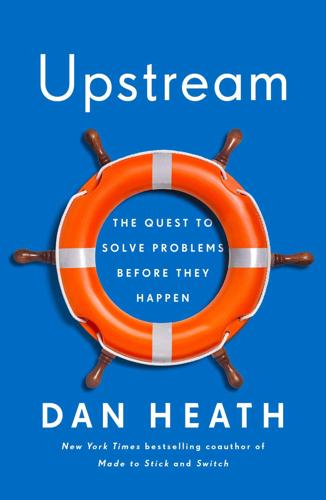
Upstream: The Quest to Solve Problems Before They Happen
by
Dan Heath
Published 3 Mar 2020
They transformed their dining room into a war room, with the table covered with the names of the lawmakers and pediatricians they wanted to reach. On the weekends, Bob Sanders would call them in their home districts to make his case. Opponents of Sanders’s bill argued that it encroached on the freedom of parents. “This is a Ralph Nader kind of bill that would take the parents’ rights away from them,” said State Representative Roscoe Pickering. “I don’t want poor people to have to buy these expensive seats.” Looking back on the time, Pat Sanders remembers reading a letter written by a parent who complained, “I have the right to send my child in a rocket to the Moon.”

Noam Chomsky: A Life of Dissent
by
Robert F. Barsky
Published 2 Feb 1997
Noble, like Chomsky, is, as well, an activist and social file:///D|/export3/www.netlibrary.com/nlreader/nlreader.dll@bookid=9296&filename=page_142.html [4/16/2007 3:20:55 PM] Document Page 143 critic who assists rank-and-file groups in several industries in their struggle with new technologies. He was the cofounder, with Ralph Nader, of the National Coalition for Universities in the Public Interest. In 1984, he was fired by MIT "for his ideas and his actions in support of those ideas." He subsequently "brought a suit against MIT to obtain and make public the documentary record of his political firing and on the basis of this record the American Historical Association subsequently condemned MIT for the firing" (Noble, Progress 165).
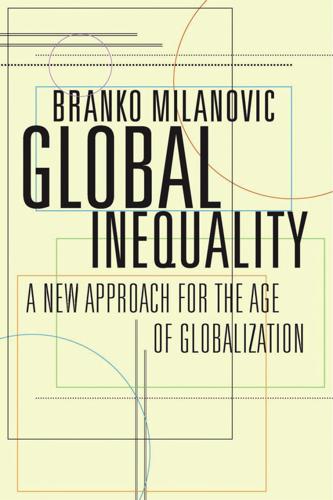
Global Inequality: A New Approach for the Age of Globalization
by
Branko Milanovic
Published 10 Apr 2016
Voting participation increases monotonically with income level. See Demos for the 2008 elections, available at http://www.demos.org/data-byte/voter-turnout-income-2008-us-presidential-election (data from US Census Bureau). 35. See also Kraus, Davidai, and Nussbaum (2015). 36. There are of course exceptions: had Ralph Nader not run as the third party candidate in 2000, it is unlikely that George W. Bush would have been elected. 37. It is remarkable that although Bartels finds that the responsiveness income gradient is steeper for Republican senators than for Democratic senators, the difference between the two is small.

Green Swans: The Coming Boom in Regenerative Capitalism
by
John Elkington
Published 6 Apr 2020
You could argue that China has one of the few national governments where many leaders have relevant higher degrees, but complicating factors are at work there—not least the conspicuous lack of the democratic principles that were hardwired into the OTA. In any event, Sagan was fingering a worrying gap in governance that the agency later worked hard to address. Unease about the dark sides of new technology had been powerfully expressed by critics such as Rachel Carson, who wrote books like Silent Spring, and the consumer activist Ralph Nader. Launched around the time of the 1972 UN environment conference in Stockholm, the OTA eventually would carry out some 750 studies on various aspects of science and technology, ranging across such areas as energy, environment, health, and national security. So where would you turn these days to find such deep insight into emerging science and technology?
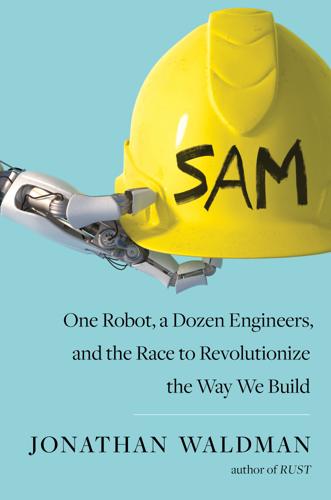
SAM: One Robot, a Dozen Engineers, and the Race to Revolutionize the Way We Build
by
Jonathan Waldman
Published 7 Jan 2020
Then, in 1971, by proclamation, Nixon suspended the prevailing-wage law. A few days later, he announced a wage-stabilizing plan. The Business Roundtable called the move “politically courageous”—without mentioning its self-interest. An official from the U.S. Chamber of Commerce tried to put it in context. “If Ralph Nader and his co-workers … really want to protect consumers from exploitation, they could do no better than train their big guns on the wage monopoly in our nation’s biggest industry.” The irony, of course, was who had those big guns and who had the monopolies. A month later, Nixon established the Construction Industry Stabilization Committee, which limited wage increases to 6 percent.
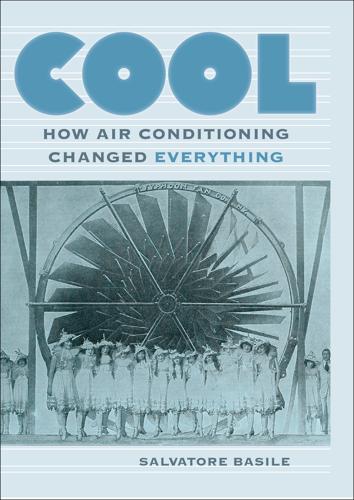
Cool: How Air Conditioning Changed Everything
by
Salvatore Basile
Published 1 Sep 2014
And air conditioning suddenly became a handy bogeyman for the country’s wastefulness; one report pointed out that the nation used only 4 percent of its energy for air conditioning, but American air conditioning represented more than half of all the air conditioning used in the world. Everyone lined up to say something about it. Consumer advocate Ralph Nader railed against home units for their “inefficiency.” So did Consumer Reports. The Federal Energy Office recommended that home thermostats be set to 78 degrees. Authorities ranging from politicians to popular writers lined up for interviews, many suggesting that air conditioning be seriously curtailed or even eliminated.
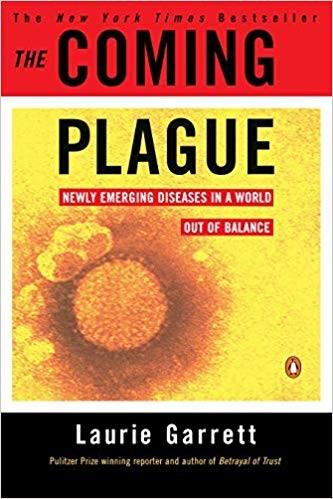
The Coming Plague: Newly Emerging Diseases in a World Out of Balance
by
Laurie Garrett
Published 31 Oct 1994
Only two members of Congress were sharply vocal in their criticism of the program. California Democrat Representative Henry Waxman and his New Jersey colleague Andrew Maguire denounced the program as a “rip-off” that was guaranteed to generate profits for vaccine manufacturers. Consumer advocate Ralph Nader accused the government’s health establishment of crying wolf, wasting taxpayer dollars. Recognizing Ford’s position, some members of Congress decided to exploit the President’s absolute support of the flu campaign by attaching a long list of liberal riders to the immunization bill, adding $1.8 billion worth of social service spending and environmental protection funds to a bill they knew Ford could not possibly veto.
…
By New Year’s Eve the reported number of cases had soared to 526; of these, 257 had received flu shots. Though CDC officials tried to argue that, like the three Pittsburgh cardiac arrest cases, these Guillain-Barré episodes might represent a normal background rate of the syndrome, the American people—and their politicians —were appalled. Ralph Nader and his consumer action group called for Sencer’s immediate resignation. In congressional hearings during December, Senator Edward Kennedy declared the Swine Flu campaign dead. The CDC continued to downplay the association between the vaccine and the syndrome, though agency insiders had already concluded that the Guillain-Barré rate among those vaccinated against Swine Flu was at least four times that in the unvaccinated population.
…
On October 8 the CDC hastily published the results of a small Utah TSS study that seemed to further implicate Rely.20 The study compared the tampon use patterns of 29 Utah women who developed TSS during 1979–80 with the behavior of 91 age-matched females who did not have TSS. Sixty percent of the TSS cases involved use of Rely, compared with a Rely use rate among controls of only 23 percent. Ralph Nader’s Health Research Group in Washington, D.C., was not happy. The public advocacy organization, and its lead physician, Dr. Sidney Wolfe, were convinced that the federal government was dragging its feet with the tampon industry, putting the female public at peril. Wolfe attacked part of the message contained in the FDA/Procter & Gamble ads: namely, the statement that “tampons do not cause TSS.”
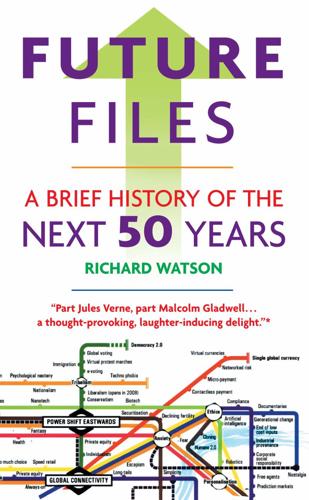
Future Files: A Brief History of the Next 50 Years
by
Richard Watson
Published 1 Jan 2008
You might find this odd — for a futurist — but my vehicles of choice are an old bicycle, an old pair of legs, and a 36-year-old Porsche. Automotive and Transport 14 April 2047 Hi Winks Do you remember when the Terminator got married? He drove off in one of those retro 2030s Tata/Infosys Morris Minors. Well, I’ve just bought the new 2037 Ralph Nader model! Check it out… it’s got a self-diagnosing engine-management system, four-wheel drive (it has a pancake motor inside each wheel), and 10,000-mile ceramic batteries. I bought it off Mississippi.com for a song. It’s obviously got self-drive, collision avoidance, and heads-up display, but the best bit is the color.
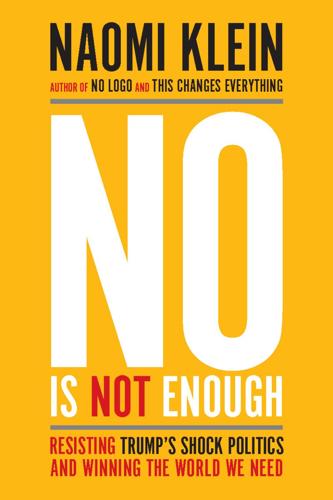
No Is Not Enough: Resisting Trump’s Shock Politics and Winning the World We Need
by
Naomi Klein
Published 12 Jun 2017
National poll on Leap: majority of Liberals, NDPs, Greens; 20 percent of Conservatives EKOS Politics, “Wise Crowds and the Future,” EKOSPolitics.com, April 26, 2016, http://www.ekospolitics.com/index.php/2016/04/wise-crowds-and-the-future/. Utopia—Back by Popular Demand Alicia Garza: “whether it be Occupy Wall Street…” “Inauguration 2017 Special Coverage w/ Angela Davis, Naomi Klein, Ralph Nader & More,” transcript of live video coverage, Democracy Now!, January 20, 2017, https://www.democracynow.org/live/inauguration_2017_live_coverage. Vision for Black Lives: “We reject false solutions…” The Movement for Black Lives, “Platform,” The Movement for Black Lives website, accessed April 19, 2017, https://policy.m4bl.org/platform/.

Servant Economy: Where America's Elite Is Sending the Middle Class
by
Jeff Faux
Published 16 May 2012
From time to time populist, socialist, and, more recently, the Green Party win local elections, and independents, such as Senator Bernie Sanders of Vermont, win election to Congress. Nationwide, some third parties have made a difference in presidential elections. In 1912 Teddy Roosevelt’s Bull Moose Party split the Republican vote and elected Woodrow Wilson. In 1992, Ross Perot drained votes from George H. W. Bush to give the election to Bill Clinton. And in 2000, Ralph Nader took enough votes away from Al Gore to trigger the events that led to the Supreme Court giving the election of George W. Bush. But each of these episodes was unique and built around a charismatic individual. And each soon faded. The first reason for the failure of third parties is that in the states, where election rules are set, the major parties have collaborated in setting up substantial procedural roadblocks to third-party success.

Why We're Polarized
by
Ezra Klein
Published 28 Jan 2020
Those people had to register, they had to remember where their polling place was, they had to take time out of their day to go cast a ballot. America isn’t like Australia, where voting is compulsory. We make it both optional and, in many places, difficult, so a winning campaign needs not just supporters but motivated supporters. In 2000, Bush ran as “a uniter, not a divider.” One reason Ralph Nader’s third-party candidacy attracted so much support was that he convinced many Americans that the choice between Bush and Gore was a choice between “Tweedledum and Tweedledee.” History proved Nader profoundly wrong about that, but the message worked because Bush and Gore were running to win over the persuadable middle, and that meant sanding off their ideological rough edges.
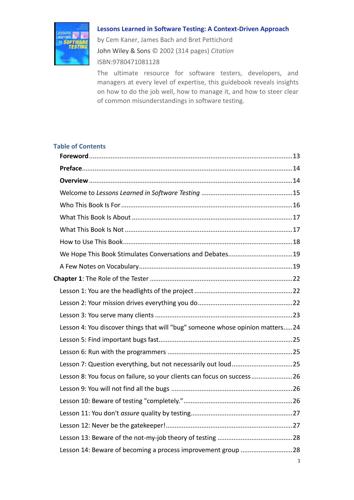
Lessons-Learned-in-Software-Testing-A-Context-Driven-Approach
by
Anson-QA
We strongly favor laws that hold developers, including development companies, accountable for bad work. All three of us have actively opposed the Uniform Computer Information Transactions Act because it protects software developers and vendors from liability for their defective products. Kaner's book on software consumer protection, Bad Software, was reviewed by Ralph Nader as "a how-to-book for consumer protection in the Information Age" (Kaner and Pels 1998, back cover). We don't oppose the licensing of software engineers because we think that malpractice suits are a bad idea in principle. Under the right circumstances, malpractice suits are excellent tools for policing the competence of a profession.

Chaos Kings: How Wall Street Traders Make Billions in the New Age of Crisis
by
Scott Patterson
Published 5 Jun 2023
Taleb, who said Paul was the only candidate he trusted in the race, appeared and gave a brief speech. “Who wouldn’t want to debate monetary policy in the house where J. Lo once slept?” quipped a local columnist about the event. Taleb’s and Spitznagel’s support for Paul—to whom Taleb would dedicate a later book, Skin in the Game, alongside his political polar opposite, Ralph Nader—came largely from their shared disdain for the Fed and other forms of government intervention. Paul, of course, didn’t win the Republican nomination, which went to Mitt Romney. Not only was Spitznagel convinced the Fed was doing irreparable harm to the economy by keeping monetary policy exceedingly loose, he was deeply concerned about government bureaucrats tampering with the system’s complex levers.
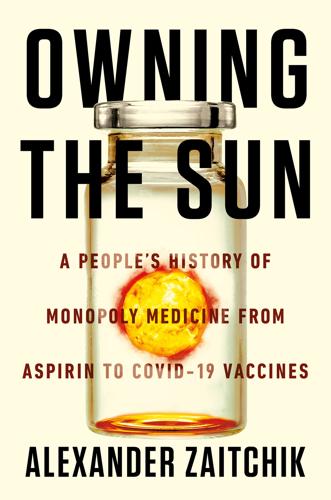
Owning the Sun
by
Alexander Zaitchik
Published 7 Jan 2022
He also revived Kefauver’s mission to reduce the terms and scope of drug monopolies, and proposed a law to require the prescribing of generic drugs over their branded versions. Nelson and the cause of patent reform entered the 1970s with a new ally at their side: the national consumer rights movement. The face of this movement was a young lawyer named Ralph Nader, famous for challenging the automobile industry with the public safety argument described in his 1965 exposé, Unsafe at Any Speed.31 The industry’s recent success in loosening the Kennedy patent policy at HEW, meanwhile, was a limited one. The Nixon administration adopted a relatively hard line on antitrust similar to its Democratic predecessors.

The Alternative: How to Build a Just Economy
by
Nick Romeo
Published 15 Jan 2024
Harvard and Columbia Law Schools were among the many recipients of Olin Foundation funding.35 A founding document for this type of influence campaign was written in 1971, when future Supreme Court justice Lewis Powell sent a confidential memo to the US Chamber of Commerce claiming that widespread public criticism of the free enterprise system posed an existential threat to American businesses and freedom itself. Citing the product safety campaigns waged by Ralph Nader in the 1960s and surveys of undergraduates that showed support for the nationalization of major industries, Powell argued that conciliation of capitalism’s critics was a losing strategy. Businessmen, guided by the Chamber of Commerce, needed to launch an aggressive counterassault. “The time has come—indeed, it is long overdue—for the wisdom, ingenuity and resources of American business to be marshaled against those who would destroy it.”

Basic Economics
by
Thomas Sowell
Published 1 Jan 2000
One of the few leading contemporary economists to bother answering protectionist arguments has been internationally renowned economist Jagdish Bhagwati, who agreed to a public debate against Ralph Nader. Here was his experience: Faced with the critics of free trade, economists have generally reacted with contempt and indifference, refusing to get into the public arena to engage the critics in battle. I was in a public debate with Ralph Nader on the campus of Cornell University a couple of years ago. The debate was in the evening, and in the afternoon I gave a technical talk on free trade to the graduate students of economics.
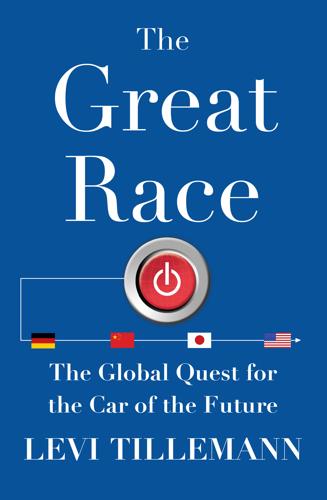
The Great Race: The Global Quest for the Car of the Future
by
Levi Tillemann
Published 20 Jan 2015
In total, the auto industry built some 4,131,000 engines (including 450,000 aircraft engines and 170,000 marine engines), 5.9 million guns, and 27,000 aircraft for the war effort—crushing the Axis against the anvil of U.S. industrial might and establishing the military prerequisites for a new Pax Americana during the latter half of the twentieth century. After World War II, the market for automobiles roared and it fueled the astounding growth of America’s suburbs. But in 1965, Ralph Nader put the brakes on this unfettered expansion when he published the book Unsafe at Any Speed, which caused a sensation in its treatment of the dangers of modern cars. This as much as anything symbolized the beginning of an arms race between auto producers and regulators—in safety, efficiency, emissions, and quality—that continues to this day.
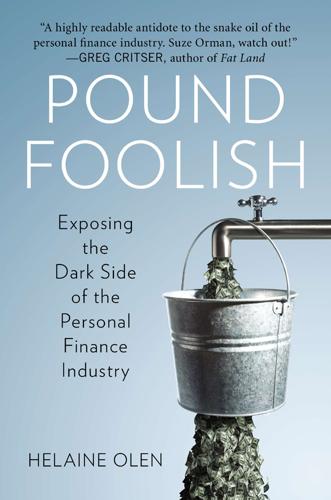
Pound Foolish: Exposing the Dark Side of the Personal Finance Industry
by
Helaine Olen
Published 27 Dec 2012
As for Porter’s written work, the once feisty and fearless creator of the personal finance genre was now putting her name on fuddy-duddy articles about budgeting secrets, and was more than once caught publishing corporate press releases under her own name. Her practical money management tips were no longer unique. Moreover, the nature of what we wanted from a public personal finance guru was changing, too. The consumer movement, which burst into prominence with Ralph Nader’s Unsafe at Any Speed, his 1965 exposé of the automobile industry, began to shove personal finance in a new direction, one that questioned the powers that be more than Porter had done in years. There was an irony here. Porter’s ever-increasing wealth and rapaciousness ultimately left her cut off, unable to connect with the concerns of all too many of us, a pattern we would see repeat with other personal finance gurus over the years.

Trees on Mars: Our Obsession With the Future
by
Hal Niedzviecki
Published 15 Mar 2015
Butler, Ani DiFranco, Assia Djebar, Ariel Dorfman, Coco Fusco, Barry Gifford, Martha Long, Luis Negrón, Hwang Sok-yong, Lee Stringer, and Kurt Vonnegut, to name a few, together with political titles by voices of conscience, including Subhankar Banerjee, the Boston Women’s Health Collective, Noam Chomsky, Angela Y. Davis, Human Rights Watch, Derrick Jensen, Ralph Nader, Loretta Napoleoni, Gary Null, Greg Palast, Project Censored, Barbara Seaman, Alice Walker, Gary Webb, and Howard Zinn, among many others. Seven Stories Press believes publishers have a special responsibility to defend free speech and human rights, and to celebrate the gifts of the human imagination, wherever we can.

Who’s Raising the Kids?: Big Tech, Big Business, and the Lives of Children
by
Susan Linn
Published 12 Sep 2022
Brent and Stephen Lunden, “Much Ado About Very Little: The Benefits and Costs of School-Based Commercial Activities,” Leadership and Policy in Schools 8, no. 3 (July 2009): 307–36, doi.org/10.1080/15700760802488619. 21. Ed Winter quoted in Pat Wechsler, “This Lesson Is Brought to You By …,” Business Week, June 30, 1997, 68. 22. Joel Babbit quoted in Ralph Nader, Children First: A Parent’s Guide to Fighting Corporate Predators (Washington, DC: Children First, 1996), 64. 23. Consumers Union of the United States, Captive Kids: A Report on Commercial Pressures on Kids at School (Yonkers, NY: Consumers Union Education Services, 1995). 24. Helen G. Dixon et al., “The Effects of Television Advertisements for Junk Food Versus Nutritious Food on Children’s Food Attitudes and Preferences,” Social Science and Medicine 65, no. 7 (October 2007): 1311–23. 25.

Rust: The Longest War
by
Jonathan Waldman
Published 10 Mar 2015
I’m indebted to many fine librarians and archivists, among them Alexia MacClain and Jim Roan of the Smithsonian Institution Libraries; Sue Beates of the Drake Well Museum in Titusville, Pennsylvania; Linda Cheresnowski of the Barbara Morgan Harvey Center for the Study of Oil Heritage at the Charles Suhr Library at Clarion University in Oil City, Pennsylvania; Carol Worster of the Gas Technology Institute; Theo Long of the Biscayne Nature Center; Roger Smith of Florida’s Bureau of Archaeological Research; Sarah Martin and Steve Jebson of the UK Met Office; Hilda Kaune of the Institute of Materials, Minerals, and Mining in London, UK; William Davis of the Center for Legislative Archives at the National Archives; and the interlibrary loan staff at University of Colorado. Thanks to Lynda Sather, Katie Pesznecker, Kate Dugan, and Michelle Egan of the Alyeska Pipeline Service Company; to Cheryl Irwin of the DOD; to Alysa Reich of NACE. Immense gratitude to Ed Drummond, Stephen Rutherford, David Moffitt, Howard EnDean, Jr., Ralph Nader, Stuart Eynon, and others for scraping through old memories. Bigger thanks to Alyssha Eve Csük, Bhaskar Neogi, Dan Dunmire, and Ed Laperle for letting me follow you around and ask a lot of dumb questions. For believing in a new guy and sharpening my proposal, utmost thanks to Richard Morris, at Janklow & Nesbit.
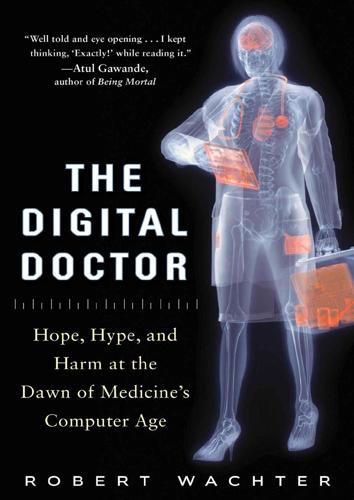
The Digital Doctor: Hope, Hype, and Harm at the Dawn of Medicine’s Computer Age
by
Robert Wachter
Published 7 Apr 2015
And that physicians have been complaining about the ceaseless need to feed the medical record for more than a century? They’d be right. The physician-patient relationship has long been under siege from forces as diverse as the declining obeisance to experts (a phenomenon that can be traced more to Vietnam, Ralph Nader, and Google than to anything in healthcare), the influence of third-party payers, and malpractice lawsuits. In fact, two books chronicling the withering of the relationship—Edward Shorter’s Doctors and Their Patients: A Social History and David Rothman’s Strangers at the Bedside—were both published in 1991, when Sergey and Larry were freshmen in college and electronic health records were futuristic fantasies.
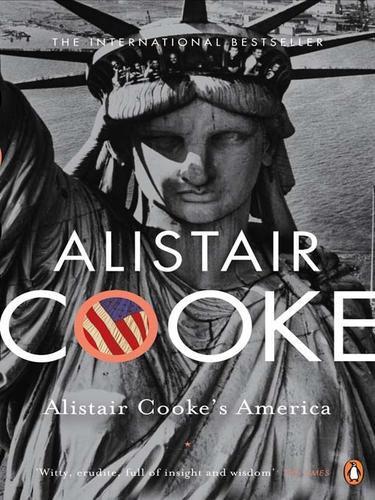
Alistair Cooke's America
by
Alistair Cooke
Published 1 Oct 2008
By the early 1970s moral indifference seemed to have overcome the two ancient political parties, and the people’s trust in them – and in such subsidiary bodies of the Establishment as the armed forces, the bankers, the churches, and even the doctors – was reported in national polls and surveys to be very little. It was left to such knights of the consumer as Ralph Nader and his followers to nag on our behalf or, in many places, to do-it-yourself watchdogs to swab up with their pocket handkerchiefs the ocean of social decay. There is, for instance, in Los Angeles a Mrs Ellen Harris, who posts herself by the telephone in her bedroom in the hope of becoming the terror of the city fathers.

Why We Drive: Toward a Philosophy of the Open Road
by
Matthew B. Crawford
Published 8 Jun 2020
You go fast into a corner (I use the term “fast” in a purely subjective way), lift off the throttle to get a little forward weight transfer while simultaneously jerking the steering wheel, and the rear steps out. Now you’re steering into the slide and feeling like an action hero at twenty miles per hour. The quirky handling that results when you combine a rear-mounted engine with a swing axle is what led Ralph Nader to famously proclaim the Corvair “unsafe at any speed.” What he didn’t mention is that such a car is also “fun at every speed.” My sweetest teenage memories are of driving up to the posh Claremont Resort, whose white tower shines resplendent over Berkeley, and honing my skills in a sloppy slalom through the parking lot amidst the Jaguars and Mercedes.

Dangerous Ideas: A Brief History of Censorship in the West, From the Ancients to Fake News
by
Eric Berkowitz
Published 3 May 2021
“For the first time,” writes law professor Adam Winkler, the Supreme Court held that “corporations have the right to freedom of speech and of the press.”155 A key turning point resulted from, of all things, a push by Public Citizen, a consumer advocacy group founded by the anti-corporate activist Ralph Nader. In Virginia State Board of Pharmacy v. Virginia Citizens’ Consumer Council (1976), it challenged a ban on the advertising of drug prices, which prevented patients from finding bargains without going from pharmacy to pharmacy. Nader’s group argued that the ban impeded the flow of important information to consumers.
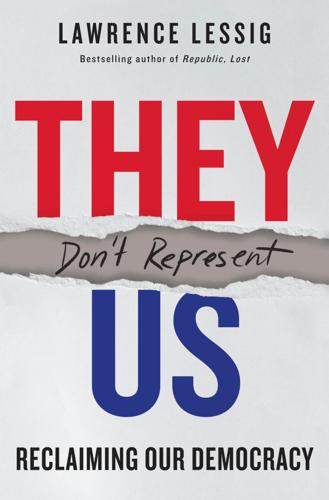
They Don't Represent Us: Reclaiming Our Democracy
by
Lawrence Lessig
Published 5 Nov 2019
The campaign “got everybody in the same room together, all working to solve a problem of democracy.” That multiplied the energy. And it helped everyone see how the solution they were fighting for was a solution that would help everyone. Weirdly, RCV actually solves two problems that might at first seem very different. The first is the problem Ralph Nader came to represent—that the system was forcing people to pick “the lesser of two evils,” and that it was crowding out less mainstream candidates for fear that they might spoil the result for everyone else. But the second problem is the LePage problem—elected officials who don’t actually represent the majority.
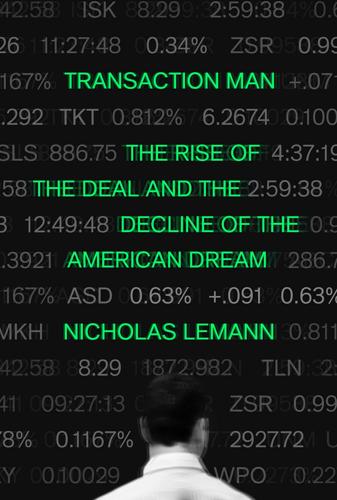
Transaction Man: The Rise of the Deal and the Decline of the American Dream
by
Nicholas Lemann
Published 9 Sep 2019
The kinds of people first-rank liberal politicians and thinkers had previously championed now had to content themselves with lobbying, out of public view, to protect their interests. The national liberal conversation had become primarily concerned with the rights of consumers. National consumers’ organizations date back to the 1930s, but they took off as a liberal force in the 1960s; the best-known consumer advocate was Ralph Nader, who became famous by attacking the most powerful corporation, General Motors, for not attending to the safety of its cars. Consumer-oriented liberalism wanted to offer people not just safety but also choice and low prices. In 1975 the country’s leading liberal politician, Senator Edward Kennedy of Massachusetts, held hearings meant to expose the unfairness of airline regulation.

The Secret Life of Groceries: The Dark Miracle of the American Supermarket
by
Benjamin Lorr
Published 14 Jun 2020
By the 1970s, trucking became the favorite scruffy but loveable blue-collar profession. Hence the slew of corny hit movies—from Smokey and the Bandit, Convoy, and Breaker! Breaker!—that would flop instantly today if released in any format except for horror. This golden era was anticompetitive, inefficient, and opposed across the political spectrum from Ralph Nader to Ronald Reagan, but it provided a stable, respectable income for the individual trucker. Then, literally overnight, with the scrawl of President Carter’s pen, everything shifted. Trucking underwent a radical course correction, deregulating in extremis if you were a driver. Carriers multiplied, authorities fell from the regulatory sky, nonunionized workers flooded the market, and the price of transport dropped by 20 percent in just the first few years.

Empty Vessel: The Story of the Global Economy in One Barge
by
Ian Kumekawa
Published 6 May 2025
Files at the Emden VW plant suggest, instead, that the barge was in the outer harbor. BACK TO NOTE REFERENCE 11 Ibid.; author correspondence with Johann Alberts, February 16, 2021; author’s interviews with workers at VW Emdenwerk. BACK TO NOTE REFERENCE 12 Ibid., 79, 109; Ralph Nader, The Volkswagen: An Assessment of Distinctive Hazards (Washington, D.C.: The Center for Automotive Safety, 1971), quoted in Tolliday, “From ‘Beetle Monoculture’ to the ‘German Model,’ ” 114. BACK TO NOTE REFERENCE 13 The exchange rate in 1969 was 4 Deutschmarks to the dollar; by 1975, it was 2.5 to the dollar.

The Big Roads: The Untold Story of the Engineers, Visionaries, and Trailblazers Who Created the American Superhighways
by
Earl Swift
Published 8 Jun 2011
In "The American Way of Death," published in the New York Review of Books in April 1966, Mumford reprised his attack on "that religion for whose evidences of power and glory the American people, with eyes devoutly closed, are prepared to sacrifice some 59,000 lives every year, and to maim, often irreparably, some three million more." Most of the article, a review of Ralph Nader's Unsafe at Any Speed, was a diatribe against the automobile itself, which "could have made an invaluable contribution in creating a regional distribution of population" but instead accounted for some of the greatest crises facing city and countryside alike—"the nightmare of the air becoming toxic with poisonous exhausts, including the highly lethal carbon monoxide; of the water supply polluted with deadly lead from gasoline exhausts already half way to the danger point even in the Arctic wastes; the nightmare of diurnal mass commutation by car... ."
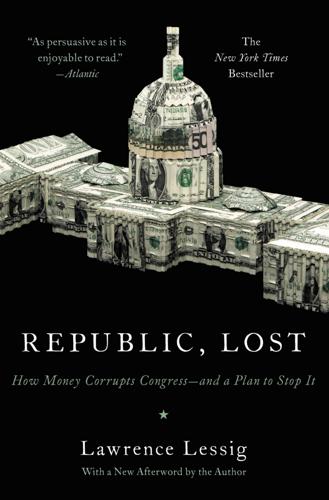
Republic, Lost: How Money Corrupts Congress--And a Plan to Stop It
by
Lawrence Lessig
Published 4 Oct 2011
For the best mapping of the complexities, see the work of Anthony Corrado, especially The New Campaign Finance Sourcebook (Washington, D.C.: Brookings Institution Press, 2005) (with Thomas E. Mann, Daniel R. Ortiz, and Trevor Potter). 13. Brooks, Corruption in American Politics and Life, 99. Chapter 18. Strategy 2 1. This idea was suggested to me by Matt Gonzalez, Ralph Nader’s vice-presidential candidate. Chapter 19. Strategy 3 1. Jake Tapper and Sunlen Miller, “President Obama’s $8 Billion Earmark Rerun: Lesson Not Learned?” ABCNews, Political Punch (Dec. 15, 2010), available at link #227. 2. Speech of Governor Buddy Roemer, Harvard University, March 24, 2011. 3.

Coming Apart: The State of White America, 1960-2010
by
Charles Murray
Published 1 Jan 2012
Other movements that would have sweeping impact on American society were already nascent in 1963. Early in the year, Betty Friedan had published The Feminine Mystique, seen now as the opening salvo of the feminist movement. Rachel Carson’s Silent Spring had appeared in 1962 and become a New York Times best seller, setting off public interest that would lead to the environmental movement. Ralph Nader had written his first attack on the auto industry in the Nation, and two years later would found the consumer advocate movement with Unsafe at Any Speed. The cultural landscape of the Sixties was already taking shape in 1963. Bob Dylan’s “Blowin’ in the Wind,” “A Hard Rain’s a-Gonna Fall,” and “Don’t Think Twice, It’s All Right”—all theme songs for what we think of as the Sixties—had been released six months before Kennedy died.
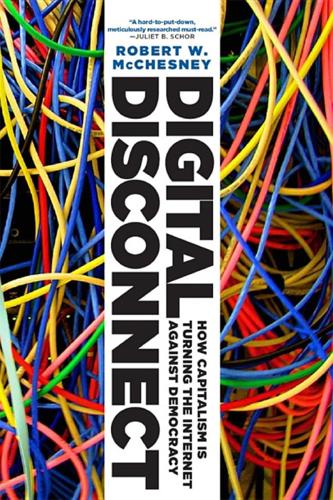
Digital Disconnect: How Capitalism Is Turning the Internet Against Democracy
by
Robert W. McChesney
Published 5 Mar 2013
Transcript, “Special Event: George W. Bush Addresses Rally in Appleton, Wisconsin,” Oct. 28, 2000, http://archives.cnn.com/TRANSCRIPTS/0010/28/se.02.html. 2. Tom Streeter notes that “it seems plausible that the ‘Gore said he invented the Internet’ quip did at least as much damage to Gore’s final vote count as Ralph Nader.” See Thomas Streeter, The Net Effect: Romanticism, Capitalism, and the Internet (New York: New York University Press, 2011), 114–15. 3. Transcript, “Vice President Gore on CNN’s Late Edition,” Mar. 9, 1999, www.cnn.com/ALLPOLITICS/stories/1999/03/09/president.2000/transcript.gore/index.html. 4.

The Firm
by
Duff McDonald
Published 1 Jun 2014
The firm dominated the era of the MBA—the late 1980s and early 1990s—when all any business student wanted to do was get a job in consulting or banking. Nicholas Lemann wrote in the New Yorker in 1999 that McKinsey had effectively encapsulated the zeitgeist of the moment, much as the CIA had done in the 1950s, the Peace Corps in the 1960s, Ralph Nader in the 1970s, and First Boston in the 1980s.2 But that was thirteen years ago. Today, the crème de la crème flock to younger, more vibrant companies, in both entry-level and much higher positions. The brightest students tend to not want to work for large companies anymore, and McKinsey is a large company.
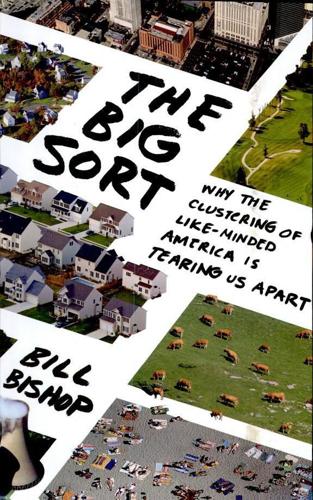
The Big Sort: Why the Clustering of Like-Minded America Is Tearing Us Apart
by
Bill Bishop
and
Robert G. Cushing
Published 6 May 2008
We bought a house on one of those smiley-face streets, a shady neighborhood of dog walkers, Jane Jacobs-approved front porches, bright paint, bowling-ball yard art, and YOU KEEP BELIEVING; WE'LL KEEP EVOLVING bumper stickers. In 2000, George W. Bush, then the governor of Texas, took 60 percent of the state's vote. But in our patch of Austin, Bush came in third, behind both Al Gore and Ralph Nader. Four years later, eight out of ten of our neighbors voted for John Kerry. Our neighborhood is one of the friendliest I've encountered. It is in some ways more like the rural Texas town where we lived for a time, publishing the weekly newspaper, than a community on the edge of the central city.
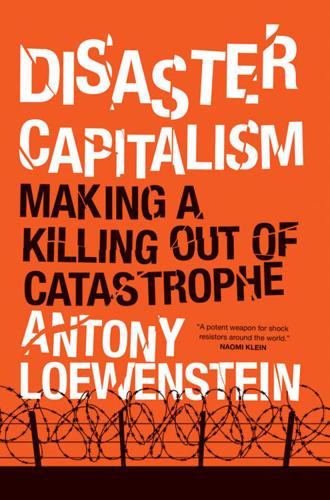
Disaster Capitalism: Making a Killing Out of Catastrophe
by
Antony Loewenstein
Published 1 Sep 2015
In 1995, the corporation—known as the “Big Australian,” due to its former status as a domestic steel producer—helped draft a bill in the PNG parliament that invalidated the right of PNG citizens who were negatively affected by the polluting Ok Tedi mine in PNG’s Western Province to seek legal redress in court. Multinational Monitor magazine—a nonprofit publication founded by US political activist Ralph Nader in 1980 to document the global economy—highlighted what was going on: In August 1995, BHP drafted legislation for the PNG Parliament that subjected anyone who sued BHP to fines of up to $75,000. Even more remarkably, the bill also applied the same fines to anyone who attempted to challenge the constitutional validity of the proposed law in PNG courts.

Capital Ideas: The Improbable Origins of Modern Wall Street
by
Peter L. Bernstein
Published 19 Jun 2005
This heading, in letters an inch high, appeared over a full-page advertisement in the financial section of The New York Times on June 25, 1990. In only slightly smaller type, the ad continued: “The speculators and their political friends ruined the S&L industry. Now they have the power to ruin the stock market.” This ad was not paid for by Ralph Nader or by one of the groups usually associated with attacking the rich and powerful. It was placed by a respected brokerage firm that is a full-fledged member of the Wall Street establishment. Just a few months later, Michael Milken, who had earned $25,000 in 1970 and $500 million in 1989, wrote to Judge Kimba Wood that “I never dreamed I could do anything that would result in being a felon.”

This Machine Kills Secrets: Julian Assange, the Cypherpunks, and Their Fight to Empower Whistleblowers
by
Andy Greenberg
Published 12 Sep 2012
Mudge began to court the media, finding curious reporters first in local trade publications and then later in Wired, The Washington Post, and the BBC. They sold T-shirts, attracted groupies, and proudly called themselves “media whores.” Taking cues from Mudge’s hero Abbie Hoffman and consumer protection icon Ralph Nader, the L0pht provocatively placed the onus for security blowups not on evil hacker bogeymen, but on the IBMs, Oracles, Microsofts, and Sun Microsystems of the world, chiding them for not building safer tools for customers. “Companies were saying their products were secure, with no proof at all. So we ripped them apart,” says Mudge with a tinge of excitement.
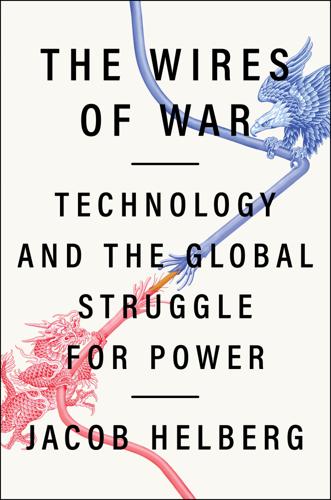
The Wires of War: Technology and the Global Struggle for Power
by
Jacob Helberg
Published 11 Oct 2021
“In its place we are entering a period of consequences.”36 As America enters its own period of consequences, we need to sound the alarm as well. Before Rachel Carson’s Silent Spring in 1962, most Americans had only the faintest inkling that big agricultural companies were poisoning the environment. Before Ralph Nader’s Unsafe at Any Speed in 1965, most consumers were only vaguely aware that Americans were dying at appalling rates in automobile accidents. But once Americans were awakened to the danger, they were able to focus on the problem and craft creative solutions. The time has come to open our eyes fully to the threat we face from autocracies like Russia and China in cyberspace—a danger that some Americans may sense but few truly understand.
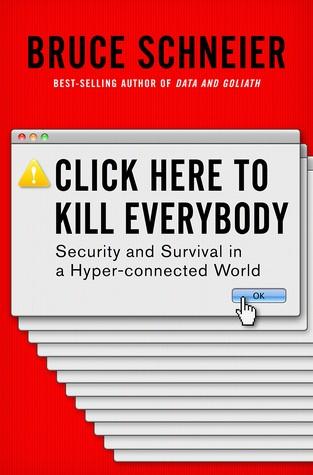
Click Here to Kill Everybody: Security and Survival in a Hyper-Connected World
by
Bruce Schneier
Published 3 Sep 2018
What would such an event look like? That depends on the time frame. Some observers have noted parallels between today’s Internet+ and the pre-1970s automobile industry. Free from regulation, manufacturers were building and selling unsafe cars, and people were dying. It was the 1965 publication of Ralph Nader’s Unsafe at Any Speed that spurred the government into action, resulting in a slew of safety laws covering seat belts, headrests, and so on. A slew of Internet+ related fatalities could cause a similar regulatory flurry. On the other hand, companies have been killing people via the environment for decades.

The Coddling of the American Mind: How Good Intentions and Bad Ideas Are Setting Up a Generation for Failure
by
Greg Lukianoff
and
Jonathan Haidt
Published 14 Jun 2018
The Rise of Safetyism In the twentieth century, the word “safety” generally meant physical safety. A great triumph of the late part of that century was that the United States became physically safer for children. As a result of class action lawsuits, efforts by investigative journalists and consumer advocates (such as Ralph Nader and his exposé of the auto industry, Unsafe at Any Speed), and common sense, dangerous products and practices became less prevalent. Between 1978 and 1985, all fifty states passed laws making the use of car seats mandatory for children. Homes and day care centers were childproofed;choking hazards and sharp objects were removed.

Makers and Takers: The Rise of Finance and the Fall of American Business
by
Rana Foroohar
Published 16 May 2016
Along with big commercial institutions, he cleverly brought together diverse interest groups, such as smaller banks that wanted to grow, mortgage brokers that wanted to expand into other areas of finance, and individuals who wanted to access higher-yielding investments, not to mention ensure that they could get the mortgages they needed. Even the Consumer Federation of America and consumer advocates like Ralph Nader were persuaded that repealing Regulation Q would be a good thing. The Gray Panthers, a group advocating for retirees, filed a suit arguing that Regulation Q discriminated against small-time savers.52 There were of course concerns that without the cap on rates and limits on how much credit could flow around freely, unexpected shifts in the economic climate could ruin livelihoods.
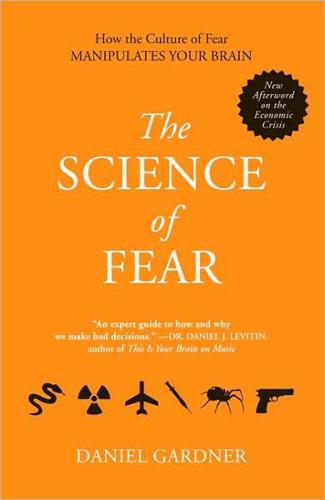
The Science of Fear: How the Culture of Fear Manipulates Your Brain
by
Daniel Gardner
Published 23 Jun 2009
The tone of the widely watched episode was angry and accusatory, with much of the blame focused on the FDA. That broke the dam. Stories linking implants with disease—with headlines like “Toxic Breasts” and “Ticking Time Bombs”—flooded the media. A congressional hearing was held. Advocacy groups—including Ralph Nader’s Public Citizen—made implants a top target. Feminists—who considered breast augmentation to be “sexual mutilation,” in the words of best-selling writer Naomi Wolf—attacked implants as a symbol of all that was wrong with modern society. Under intense pressure, the FDA told manufacturers in early 1992 that they had ninety days to provide evidence that implants were safe.

How Markets Fail: The Logic of Economic Calamities
by
John Cassidy
Published 10 Nov 2009
Similarly, industrial companies such as General Electric and General Motors would not risk sullying their brand names by distributing faulty or unsafe products. “The consumer is protected from being exploited by one seller by the existence of another seller from whom he can buy and who is eager to sell to him. Alternative sources of supply protect the consumer far more effectively than all the Ralph Naders of the world.” If Friedman had been known solely as a defender of big business, and a proponent of monetarism, he wouldn’t have exercised as much influence as he did. But he cleverly wrapped his proposals to emasculate government programs and cut taxes in the language of rugged American individualism.
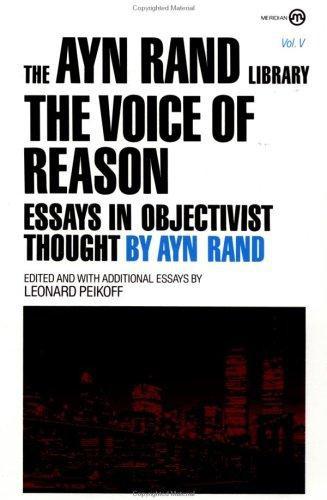
The Voice of Reason: Essays in Objectivist Thought
by
Ayn Rand
,
Leonard Peikoff
and
Peter Schwartz
Published 1 Jan 1989
Its essence is precisely to bypass all the ideas underlying liberty and to jump directly to the assertion that the use of force is wrong. But if there is no why, there can be no what. If Libertarianism announces that it need not offer any reason for its belief in liberty, then it cannot even state what it means by the term “liberty.” Everyone from Karl Marx to Ralph Nader can then say that he is fundamentally in favor of liberty, and there is no objective means of disputing him. Why shouldn’t anarchism be regarded as the implementation of genuine freedom? Why not describe libel and counterfeiting as actions fully consistent with individual rights? Why can’t Moscow be said to be pursuing a foreign policy of worldwide liberation?
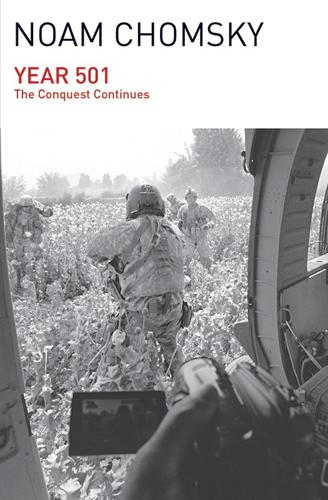
Year 501
by
Noam Chomsky
Published 19 Jan 2016
—become as superfluous as those they serve, and can therefore be limited or dispensed with entirely. Some, it is true, are still needed, notably prisons, a service that must in fact be extended, to deal with useless people. As care for the mentally ill declines, prisons become “surrogate mental hospitals,” a study of the National Alliance for the Mentally Ill and Ralph Nader’s Public Citizen observes. The psychiatrist who led the research observes that “there were far fewer psychotic people in jail 100 years ago than we have today,” as we revert to practices reformed in the 19th century. Almost 30 percent of jails detain mentally ill people without criminal charges.
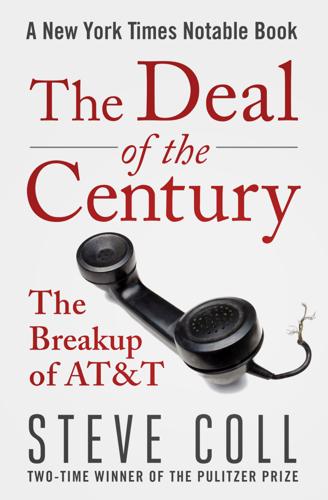
The Deal of the Century: The Breakup of AT&T
by
Steve Coll
Published 12 Jun 2017
But the nostalgia also had a utility in the present: back in his home state of Michigan, Hart found that voters were easily excited in the early 1970s by talk of a “consumer revolution,” and that voters of all kinds were suspicious of the mammoth corporations that dominated the nation’s economic landscape. The country’s liberal middle class could not stomach the methods of students and counterculture radicals who bombed banks and rallied against the “corporate state” during the late 1960s and early 1970s. But when Ralph Nader announced that American cars were unsafe because Detroit’s “Big Three” automakers cared about profits first and people second, voters proved decisively that they shared Nader’s cynicism about big business. The public’s disaffection with large companies reflected the tenor of the times: it was half utopian, half populist, as suggested in the title of the best-selling economic treatise Small Is Beautiful.
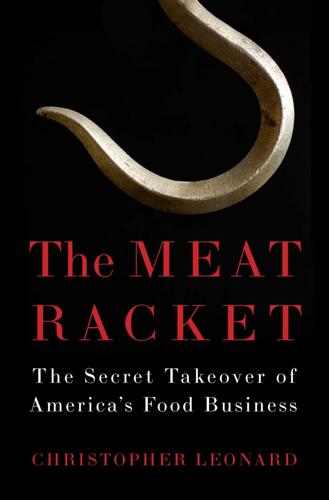
The Meat Racket: The Secret Takeover of America's Food Business
by
Christopher Leonard
Published 18 Feb 2014
Farm-state politicians and activists were berating the Democratic administration of President Bill Clinton to take action. The urgency of the issue was stoked by the upcoming presidential election. The Democratic candidate, Vice President Al Gore, faced a growing challenge from the longtime consumer advocate Ralph Nader. Nader was unequivocal in his opposition to industrial meat production and the rise of factory farms. Clinton’s administration needed to look like it was doing something about it. In this increasingly tense environment, Eric Tabor was given a rare public chance to be the good guy. Iowa had gone further than any other state in combating the rise of corporate agribusiness, and Tabor was invited to the Kansas City forum to outline what Iowa regulators were doing.
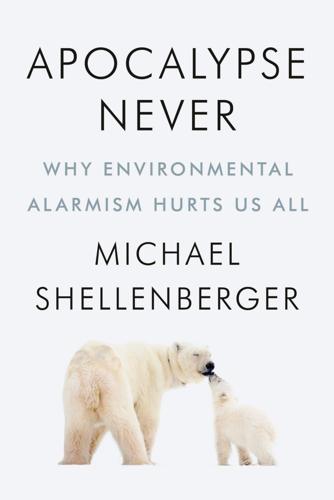
Apocalypse Never: Why Environmental Alarmism Hurts Us All
by
Michael Shellenberger
Published 28 Jun 2020
It hired lobbyists, filed lawsuits, and frightened local parents about the shipment of used fuel rods. 83 Club lawyers were secretive about their work. “We’re going to maintain our lawsuit and certain other plans that cannot be disclosed right now,” one told Ohio’s Evening Review in 1971.84 The Sierra Club was joined by a charismatic and aggressive young attorney named Ralph Nader, who had won the public’s trust in the mid-1960s, and become a household name, after criticizing the safety of American cars. It is hard to overstate his influence in turning the public against nuclear energy. “A nuclear accident could wipe out Cleveland,” Nader told an Ohio newspaper in 1974, “and the survivors would envy the dead.”85 Antinuclear groups publicized a report written by a professor at the University of Pittsburgh, which claimed 400,000 infants had died from radioactive fallout from weapons testing.86 Nader and other antinuclear activists claimed that nuclear was far worse for the environment than fossil fuels.
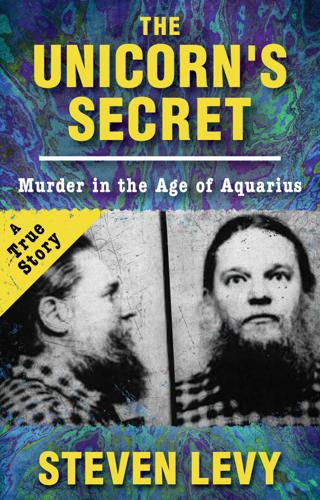
The Unicorn's Secret
by
Steven Levy
Published 6 Oct 2016
In the back of one of those hay wagons was Ira Einhorn, mingling with the fully costumed cast of the Broadway show Hair. By the time the caravan reached the birthplace of the United States, there were thousands of people crowding the Independence Mall north of the Liberty Bell, listening to Alan Watts, Ralph Nader, and Senator Hugh Scott. Ira took the stage with the Hair contingent, and when the singers broke into an impassioned, extended rendition of “Let the Sun Shine,” the Unicorn leaned into the microphone and bleated out the words with them. Earth Day itself, April 22, was cold but clear. The Belmont Plateau area in Fairmount Park, overlooking the Philadelphia skyline two miles away, began filling with people.

People, Power, and Profits: Progressive Capitalism for an Age of Discontent
by
Joseph E. Stiglitz
Published 22 Apr 2019
Bureau of Labor Statistics, All Employees: Government: Federal, Except U.S. Postal Service [CES9091100001], retrieved from FRED, Federal Reserve Bank of St. Louis; https://fred.stlouisfed.org/series/CES9091100001. Accessed Jan. 24, 2019). 10.This was the case before auto safety legislation, as documented by Ralph Nader in his classic book, Unsafe at Any Speed: The Designed-In Dangers of the American Automobile (New York: Pocket Books, 1965). 11.A president who claims an unfettered right to pardon himself and those who serve him is a president who claims unbridled authoritarian power, to be reined in by the single ultimate check provided by the Constitution, impeachment; and with such solid support among his own party (removing a president from office requires a two-thirds vote of the Senate), and with such overbearing confidence that he could claim that he could “shoot somebody” on Fifth Avenue and still not lose his loyal voters, he seems to have little to fear from that quarter. 12.Many important ones have received little notice: a simple change that removes the deference previously given to one’s own physician in disability proceedings may result in large numbers being denied disability payments. 13.According to OECD data, in 2017, US real GDP per capita grew somewhat slower than the average of the OECD, but in 2018 it was somewhat greater. 14.In Rewriting the Rules of the American Economy, my coauthors and I describe globalization and technology as the large underlying global forces that then get translated through the rules that structure our economy into our daily experiences, including those that lead to inequality and exclusion.
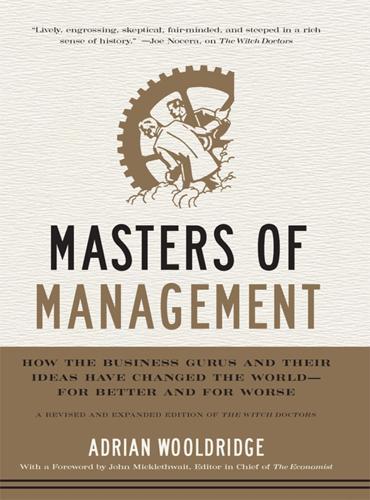
Masters of Management: How the Business Gurus and Their Ideas Have Changed the World—for Better and for Worse
by
Adrian Wooldridge
Published 29 Nov 2011
And nobody subjects them to the sort of hard-headed analysis that they apply to companies (they seem to have as much of a vested interest in producing outrage as Coca-Cola has in producing fizzy drinks). The entire world of NGOs has a Potemkin-like quality: slither-sized organizations are forever issuing reports and referring to other slither-sized organizations. When Ralph Nader decided to swap the Potemkin world of pressure groups for electoral politics in 2000, he won only 3 percent of the vote, enough to put George W. Bush in the White House but not enough to prove that he had any popular legitimacy. And what about the claim that companies can do well by doing good?

Fulfillment: Winning and Losing in One-Click America
by
Alec MacGillis
Published 16 Mar 2021
By the early 1970s, the rise of the Great Society and the proliferation of federal agencies and regulations—which continued under President Nixon with the creation of the Environmental Protection Agency and the Occupational Safety and Health Administration—was causing alarm in the business world. Its fear of being overmatched by the likes of Ralph Nader, made famous by his auto-safety assault on carmakers, was crystallized in a 1971 memo by Lewis Powell, a corporate lawyer in Virginia who would later be appointed to the Supreme Court. “The American economic system is under broad attack,” Powell wrote. “Business must learn the lesson … that political power is necessary; that such power must be assiduously cultivated; and that when necessary, it must be used aggressively and with determination—without embarrassment and without the reluctance which has been so characteristic of American business.”
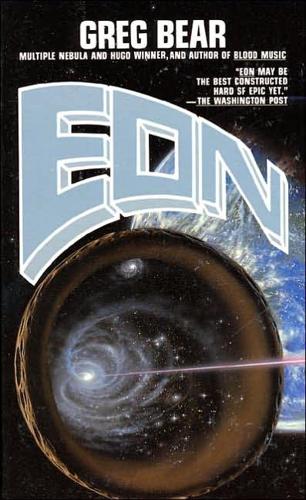
Eon
by
Greg Bear
Published 2 Jan 1985
As she did so, she asked for explanations of several other things any Stoner would have taken for granted. That triggered an elementary, synopsized history of the Stone, and of the time between the Death and the construction of the Thistledown. She was more than a little shocked to discover that the Gentle Nader was, in fact, Ralph Nader, the consumer advocate and independent investigator who had made a big stir in the 1960s and 1970s. He was still alive, back on Earth–her Earth, her time—but in the library records his name was always used reverently. He was always “Gentle Nader’ or “the Good Man.” Those who took his namethe Naderites—were a powerful political force, and had been for centuries.

The Food Revolution: How Your Diet Can Help Save Your Life and Our World
by
John Robbins
Published 14 Sep 2010
Box 2260, Boulder, CO 80306; 800-3572211; www.citizens.org; citizens4health@gmail.com Physicians Committee for Responsible Medicine Promotes preventive medicine, encourages higher standards for ethics and effectiveness in research, advocates broader access to medical services, offers Vegetarian Starter Kit and numerous publications including Goocl Medicine, a quarterly magazine. 5100 Wisconsin Ave., NW Ste. 400, Washington, DC 20016; 202-686-2210; www.pcrm.org; pcrm@pcrm.org Public Citizen Founded by Ralph Nader, fights for safer drugs and medical devices, cleaner energy sources and environment, fair trade, and a more open and democratic government. 1600 20th St., NW1 Washington, D.C. 20009; 202-588-1000; www.citizen.org; member@citizen.org Safe Tables Our Priority (STOP) Supports victims of food-borne illness, provides public education on the dangers in food, and does policy advocacy for safe food and public health. 3149 Dundee Road, #276, Northbrook, IL 60062; 800-350STOP; www.safetables.org Our Fellow Creatures Animal Place Sanctuary Provides homes for animals rescued from slaughter and educates the public about factory farms. 17314 McCourtney Ave., Grass Valley, CA 95949; 530-477-1757; www.animalplace.org; info@animalplace.org Humane Society Veterinary Medical Association Works on a variety of animal protection issues, particularly those that focus on veterinary medical ethics.
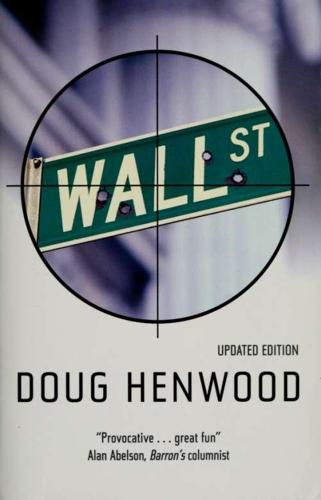
Wall Street: How It Works And for Whom
by
Doug Henwood
Published 30 Aug 1998
Jensen did, however, helpfully list some forces he viewed as obstacles to economic progress: "striking Eastern Air Lines GOVERNANCE pilots, Pittston Coal miners, [and] New York Telephone employees, who seem perfectly content to destroy or damage their employer's organization while attempting to serve their own interests. Ralph Nader's consumer activist organization is another example." (It's a nice irony that public employee pension funds were used to smash some of Jensen's impediments to progress.) The only subclass of Jensen's society to have a claim on corporations, it's clear, are shareholders; workers (managers among them) and consumers serve only at the owners' pleasure.

The Future of the Internet: And How to Stop It
by
Jonathan Zittrain
Published 27 May 2009
Taking the generativity-informed view of what constitutes a network, though, we can conceptualize a variety of methods by which PCs might compensate for this difficulty of mastery, only some of which require centralized control and education. For example, users might be able to choose from an array of proxies—not just Microsoft, but also Ralph Nader, or a public interest organization, or a group of computer scientists, or StopBadware– for guidance on how best to configure their PCs. For the Herdict program described earlier, the ambition is for third parties to contribute their own dashboard gauges—allowing users of Herdict to draw from a market of advisers, each of whom can draw from some combination of the herd’s data and their own expertise to give users advice.

One Less Car: Bicycling and the Politics of Automobility
by
Zack Furness
and
Zachary Mooradian Furness
Published 28 Mar 2010
To concentrate on riddance as the primary purpose, negatively to put taboos and penalties on automobiles as children might say, “Cars, cars, go away,” would be a policy not only doomed to defeat but rightly doomed to defeat.105 it is clear that bike advocates did not always heed the last part of Jacobs’s advice, but there was also a much stronger case to be made for taking a more pronounced stance against urban driving in the 1970s, particularly when one considers the roughly five hundred thousand people killed in traffic (in the United States alone) between the publication of Jacobs’s first book and the beginning of the following decade. and while some bike activists were intent to pursue a more radical agenda or at the very least one sympathetic to illich’s systemic critiques of technology and capitalism, their general approach to politics was more in tune with the civic engagement of people like John Dewey or ralph nader than the dropout paradigm bemoaned by critics of the counterculture and the aT movement. These organizations formed through the collaboration of smaller activist groups and volunteers and solidified themselves through persistent organizing and the involvement of public officials. Charlie McCorkell notes the importance of this synthesis in creating momentum for bicycle advocacy: i always liked the big parades.

Safe Food: The Politics of Food Safety
by
Marion Nestle
Published 1 Jan 2010
It contained provisions to (1) eliminate rules for pathogen testing, (2) postpone seafood inspection, (3) repeal the Delaney clause in the Food, Drug, and Cosmetic Act (which precluded use of carcinogenic food additives), (4) permit use of some carcinogenic pesticides, and (5) privatize approvals of food additives. Such blatantly consumer-unfriendly legislation was ripe for satire, and figure 7 presents one such pointed commentary, in this case, from political cartoonist Garry Trudeau. Consumer advocate Ralph Nader observed that the Dole bill represented nothing less than a “big business takeover of the U.S. government in its health and safety responsibilities.” Nevertheless, after contentious debate, the Senate passed various amendments to the Dole bill as part of the Republicans’ Contract with America. As if to soften the bill’s evident purpose, one such amendment expressed “the sense of the Senate that nothing in the bill is intended to delay the timely promulgation of any regulations that would meet a human health or safety threat.”10 Mr.

Overbooked: The Exploding Business of Travel and Tourism
by
Elizabeth Becker
Published 16 Apr 2013
Hotels, resorts and tour operators are willing to pay companies to certify they are on the side of the angels, that visitors on vacation know they are not destroying the environment, or playing on a golf course that had been home to poor peasants a year earlier. • • • This drive for certification and sustainable tourism grew out of the environmental movement. The leaders of the ecotourism, or sustainable tourism, movement are not the fire-breathing types. There is no one like Ralph Nader, who stubbornly forced the government to demand safety features in the automobile industry. The tourism reformers are professors, writers and tour operators who wield ideas, gently. They write, lead groups, give awards and, when asked, will help a country, a community or a hotel figure out responsible tourism.

Wealth and Poverty: A New Edition for the Twenty-First Century
by
George Gilder
Published 30 Apr 1981
Connally even proposed a federal come-and-get-it fund for all large and failing companies. Even such a staunch conservative as columnist Patrick Buchanan, a former Nixon speechwriter, demanded government action on behalf of the afflicted automotive firm. “This is a time for Republicans to rise above principle,” he wrote, and “leave Ralph Nader to mouth the moth-eaten clichés from Republican conventions of generations ago.” Buchanan went so far as to quote the dubious findings of the Congressional Budget Office, which predicted “the permanent loss of a quarter of a million jobs” if Chrysler melted down.1 The country was moving toward a system like Great Britain’s in the seventies.

I'm Feeling Lucky: The Confessions of Google Employee Number 59
by
Douglas Edwards
Published 11 Jul 2011
I found GoTo's auction-based results almost unusable. A significant number of their advertisers bid high for popular, but irrelevant, search terms just to lock in the top position on as many searches as possible. Even when the top result was not pure spam, the whole approach seemed misleading. Ralph Nader agreed. Nader's group Commercial Alert filed a deceptive-advertising complaint with the Federal Trade Commission (FTC) in July 2001 to stop the practice of "inserting advertisements in search engine results without clear and conspicuous disclosure that the ads are ads [which] may mislead search engine users to believe that search results are based on relevancy alone, not marketing ploys

More: The 10,000-Year Rise of the World Economy
by
Philip Coggan
Published 6 Feb 2020
Drivers in the world’s big cities lose almost $1,000 a year through being stuck in traffic jams.42 Indeed, our love affair with the car has soured a bit since the 1950s, which many motor enthusiasts regard as a golden age. Back then, fuel was cheap and American car designers indulged their imaginations, creating monster vehicles with grilles that looked like shark’s teeth and tailfins that resembled rockets. In the subsequent decades, the drawbacks of our enthusiasm for cars began to be revealed. In 1965, Ralph Nader published Unsafe at any Speed, a book that detailed the poor safety records of many cars, which at the time lacked seat belts, airbags and other features later regarded as standard. In 1967, the British introduced a legal limit for drivers’ alcohol consumption; US states followed suit in the late 1970s.
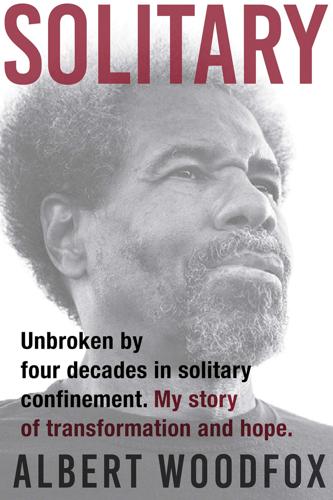
Solitary
by
Albert Woodfox
Published 12 Mar 2019
King, Tory Pegram, Chuck Blitz, Gordon Roddick, and several other members of our advisory board, including Barry Scheck, the cofounder of the Innocence Project; Denny LeBoeuf, a Louisiana death penalty defense attorney who was directing the ACLU’s efforts in Guantánamo at the time; Joan Claybrook, the founding executive director of Ralph Nader’s Public Citizen; Ira Glasser, the former executive director of the ACLU’s national office; Ira Arlook of Fenton Communications; Webb Hubbell, President Bill Clinton’s associate attorney general and former chief justice of the Arkansas Supreme Court; the actor and anti–death penalty activist Mike Farrell; and Gordon’s close friend and colleague Ben Cohen from Ben & Jerry’s, met with as many legislators and other potential national advocates as they could.
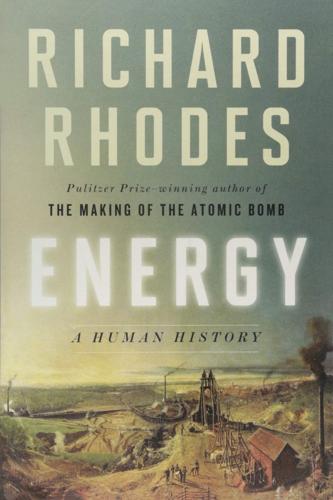
Energy: A Human History
by
Richard Rhodes
Published 28 May 2018
If the healthy-worker effect applied, then the radiation workers’ reduced mortality was all the more remarkable.26 Fear of radiation and misunderstanding of its effects were powerful drivers of antinuclear sentiment. Activists encouraged this response over the years with claims that a meltdown would destroy an area “the size of Pennsylvania” (Ralph Nader) or that “nearly a million” had died from Chernobyl fallout (Helen Caldicott, the Australian physician).27 Bolstering the claims of extremists, the United States in the 1950s adopted a flawed model of radiation exposure that made radiation safety seemingly impossible to guarantee. How that standard emerged is a sorry tale of scientific ineptitude if not actual misconduct and of good intentions gone bad.

Capitalism in America: A History
by
Adrian Wooldridge
and
Alan Greenspan
Published 15 Oct 2018
MOTOR VEHICLE SALES BY ORIGIN 1931 – 2011 They weren’t even very good at doing what they regarded as their core business, devoting far too little attention to the bread and butter of the industry, reliability and safety. A striking number of these “ocean liners of the road” ran into technological icebergs as they cruised down Eisenhower’s highways and left their passengers stranded by the side of the road. Ralph Nader’s Unsafe at Any Speed (1965) became a bestseller because it diagnosed a national catastrophe. In the 1950s and 1960s, more than 2.5 million Americans were killed in car accidents, and several millions injured. Detroit also devoted far too little attention to fuel efficiency: even after the first oil shock of 1973–74, it continued to produce giant gas-guzzlers, on the assumption that high fuel prices were simply a passing peculiarity, and the world would soon return to the Elysian days of the 1950s.

Gonzo: The Life of Hunter S. Thompson
by
Corey Seymour
,
Johnny Depp
and
Jann S. Wenner
Published 31 Oct 2007
He believed that they were statespersons, and there was a small handful of others, but beyond that, whether it was Reagan or Bush or Clinton, he was bipartisan in his disdain for presidential power. He was a libertarian. He preferred to vote for a third-party candidate as a throwaway vote—he voted for Dick Gregory in ’68 and Ralph Nader in 2000. He felt that the politics of both the Republican Party and the Democratic Party were worthless. He formed a friendship late in his life with Jesse Ventura when he was running for governor of Minnesota, and he liked the idea of Kinky Friedman running for governor of Texas. He would always be behind outsider candidates.
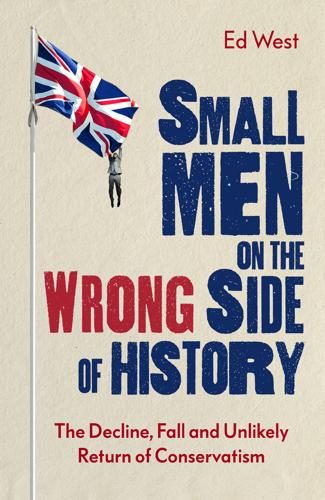
Small Men on the Wrong Side of History: The Decline, Fall and Unlikely Return of Conservatism
by
Ed West
Published 19 Mar 2020
On the other, he did it in what was arguably the most demagogic, crude, fear-mongering fashion possible.’12 He also somewhat blurred the line between political news and tabloid TV, which critical conservatives saw as further dumbing down, and yet without him neither George W. Bush nor Trump would have won. Limbaugh and others had already set the tone on radio and in books, ‘treating not just Democrats but country-club Gerald Ford Republicans . . . as though they were flag-burning hippies and dangerous radicals,’ while on the Left Ralph Nader and Michael Moore were attacking ‘Right-wing’ Democrats like Gore or Clinton.13 America’s increasingly hyper-individual society was opening up a gap in politics. Today just under half of ‘Consistent conservatives’ in the US cite Fox as their main source of information about politics.14 Those with consistently liberal views rely on a far wider range of news outlets, including the New York Times, and most trust PBS, NPR and the BBC.
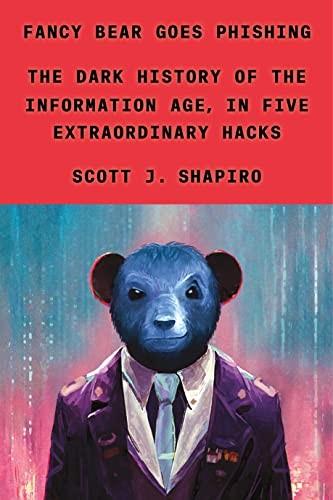
Fancy Bear Goes Phishing: The Dark History of the Information Age, in Five Extraordinary Hacks
by
Scott J. Shapiro
Chong points out that, in the 1960s, people were hesitant to impose liability on automobile manufacturers for unsafe vehicles. In a court ruling on whether General Motors was negligent for not including widespread safety features in a 1961 station wagon, the court rejected the claim because a “manufacturer is not under a duty to make his automobile accident-proof or foolproof.” But in 1966, a year after Ralph Nader published Unsafe at Any Speed, in which he charged car companies with resisting safety improvements, Congress passed the National Traffic and Motor Vehicle Safety Act, refocusing automobile safety on the vehicle, rather than the driver. Today, similar concerns are expressed about software liability: tech is too important to our society to be slowed down, yada yada yada.
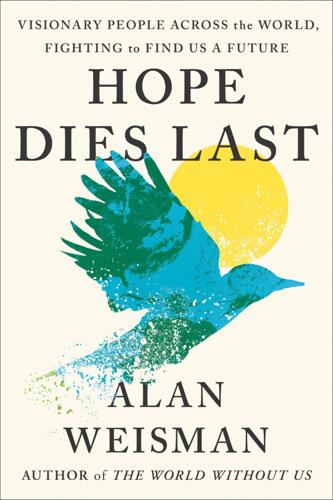
Hope Dies Last: Visionary People Across the World, Fighting to Find Us a Future
by
Alan Weisman
Published 21 Apr 2025
The Thomas Merton Award and Ann Bancroft Award for Women’s Leadership followed. Ms. magazine named her “Woman of the Year.” She proposed a constitutional amendment requiring environmental policies to project their impact on the next seven generations. She wrote books about Native struggles and gave talks all over the world. Ralph Nader twice selected her to be his Green Party running mate.[*4] Now she sat in her Shell River camp, in treaty land just south of the White Earth Reservation, awaiting a nightmare to commence. They came for her in early July. She and six other Water Protectors sat in blue beach chairs in straw sunhats, linked by quarter-inch-gauge chrome-plated chain around their waists.
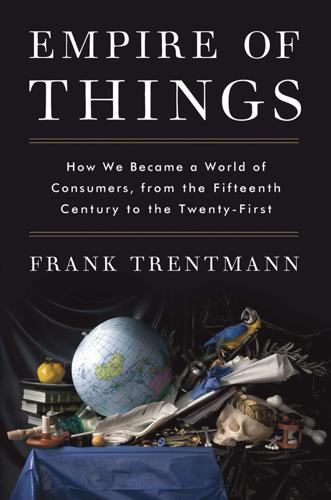
Empire of Things: How We Became a World of Consumers, From the Fifteenth Century to the Twenty-First
by
Frank Trentmann
Published 1 Dec 2015
Article 49 of the Consumer Rights Law set the amount of compensation at double the purchase price. Spotting a fake became a lucrative enterprise. From being a small trader in Beijing, Wang Hai rose to media celebrity by exposing a string of fake Sony earphones and counterfeit designer bags. By 1998, he had a dozen fake-busters working for him. But China’s answer to Ralph Nader did not take on corrupt institutions, nor did he become a political maverick. Instead, he became the darling of the state. Communist leaders invited him along to meet US President Clinton, celebrating him as a new kind of communist hero who showed it was possible to work for the good of society and make money at the same time.106 The regime’s watchdog is the China Consumer Association (Zhongguo Xiaofeizhe Xiehui).
…
Anwar Fazal, the IOCU’s Asian regional president, went so far as to drop choice off the list of consumer rights altogether.94 The South left its mark on the IOCU’s increasingly ambitious programme. Its 1978 Charter put poverty relief and the environment at the heart of consumer protection. The right to consume was balanced by the social and ecological responsibilities that came with it. Such appeals were not without their crusaders in the rich North. Ralph Nader, who shot to fame in the United States in the late 1960s with his exposures of exploding cars and corporate abuse, campaigned for a shift from conspicuous to conscientious consumption. The UN’s Guidelines on Consumer Protection (1985) were proof consumers had arrived in the corridors of international politics.

WTF?: What's the Future and Why It's Up to Us
by
Tim O'Reilly
Published 9 Oct 2017
In 1993, early in the history of the World Wide Web, Carl was helping Sun Microsystems give a demonstration of the capabilities of the Internet to the House Subcommittee on Telecommunications and Finance. After the demonstration, Subcommittee Chairman Representative Edward J. Markey (now a US senator from Massachusetts) told Carl that his subcommittee also had oversight of the Securities and Exchange Commission. Jamie Love, who worked with Ralph Nader on Internet matters, had been sending petitions to the subcommittee asking why SEC filings weren’t available online. The initial reaction from the SEC, Representative Markey told Carl, was that the data wasn’t on the Internet because making it available was technically impossible, and, as Carl wrote in his colorful history of the event, “even if the data were available the only people interested in SEC filings were Wall Street Fatcats and they didn’t really need subsidized access to data they were willing to pay for.”

Lonely Planet Nicaragua (Travel Guide)
by
Lonely Planet
,
Alex Egerton
and
Greg Benchwick
Published 30 Jun 2013
These factories provide much-needed work (Nicaragua’s underemployment rate runs at around 46%), but critics say the maquilladoras are no real solution – they set up in Free Trade Zones (Nicaragua has four), which aren’t bound by Nicaraguan law, so they don’t pay minimum wage or respect workers’ rights. When exported, goods don’t incur export duty, so Nicaragua ends up earning very little. It’s a process that workers’ rights and environmental activist Ralph Nader calls ‘the race to the bottom,’ where poor countries end up competing to see who can offer the most favorable deal to investor nations. Population With 6.1 million people spread across 130,000 sq km, Nicaragua is the second-least densely populated country in Central America after Belize.

The Red and the Blue: The 1990s and the Birth of Political Tribalism
by
Steve Kornacki
Published 1 Oct 2018
Any factor could credibly be singled out as the difference maker. Democrats called it a stolen election, accusing the five Supreme Court justices who ended the recount—all of them Republicans—of doing Bush’s bidding, and casting suspicion on Florida’s top election official, Republican Katherine Harris. Their fingers also pointed at Ralph Nader, the consumer activist who ran as the left-wing Green Party’s candidate and gobbled up almost three million votes nationally—and ninety-seven thousand in Florida. It was at least as plausible, though, that the third-party candidate who damaged Gore the most was Pat Buchanan. The culprit was the bizarre “butterfly ballot” used in Palm Beach County.
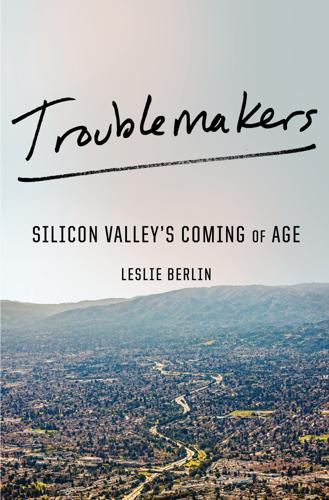
Troublemakers: Silicon Valley's Coming of Age
by
Leslie Berlin
Published 7 Nov 2017
“Patents are intended to ensure that technological discoveries are not kept secret,” he liked to say. As for the concern about public funding: there was an established process, called an institutional patent agreement, which allowed a university to petition for rights to an invention that had received public funding.14 Some people objected to those agreements—Ralph Nader’s Public Citizen organization filed unsuccessful civil actions against them in 1973 and 1974—but Reimers believed that the agreements were essential. Universities would be less inclined to pursue applied research, he said, “if the government would march in to take back any patent with significant commercial potential.”15 Reimers also explained that a patent application would cost Cohen no money and that Stanford had a good record of receiving the rights for which it petitioned.16 “Why don’t we proceed and let this all sort itself out?”

Of a Fire on the Moon
by
Norman Mailer
Published 2 Jun 2014
Perfectionists could have spent six months recovering from those fifty mishaps, but this was October 1968, this was the year in which the war in Vietnam became a debauch, and Bobby Kennedy and Martin Luther King had been killed, and Lyndon Johnson abdicated, this was the year in which the colleges showed open signs of revolution and corporation executives for munition firms were barred from campuses, it was a year in which industry was still recovering from the shock that General Motors had put private detectives on Ralph Nader. (Didn’t General Motors understand how modest and uneventful were the private lives of savage writers?) So NASA had barreled ahead, NASA had pushed for results as if the very nerve of endeavor in the nation depended on their effort, depended on doing it before ’69 was out (what a joke for the sophistications of Jack Kennedy that men would first kiss the moon in ’69).

Generations: The Real Differences Between Gen Z, Millennials, Gen X, Boomers, and Silents—and What They Mean for America's Future
by
Jean M. Twenge
Published 25 Apr 2023
POPULATION IN 2021) 78.1% White 8.2% Black 8.1% Hispanic 4.8% Asian, Native Hawaiian, or Pacific Islander 0.8% Native American Parents: Greatest or Lost Children: Gen X and Boomers Grandchildren: Millennials and Gen Z MOST POPULAR FIRST NAMES Boys Robert John William James Charles Richard Girls Mary Dorothy Shirley Betty Barbara Patricia Linda Carol FAMOUS MEMBERS (BIRTH YEAR) Actors, Comedians, Filmmakers Johnny Carson (1925) Paul Newman (1925) Rock Hudson (1925) Lenny Bruce (1925) Marilyn Monroe (1927) Sidney Poitier (1927) Shirley Temple (1928) Audrey Hepburn (1929) Grace Kelly (1929) Bob Newhart (1929) Clint Eastwood (1930) Elizabeth Taylor (1932) Carol Burnett (1933) Joan Rivers (1933) Woody Allen (1935) Mary Tyler Moore (1936) Robert Redford (1936) Burt Reynolds (1936) Alan Alda (1936) Dick Cavett (1936) Dennis Hopper (1936) Jane Fonda (1937) Jack Nicholson (1937) George Carlin (1937) Dustin Hoffman (1937) Evel Knievel (1938) Sherman Hemsley (1938) Tommy Chong (1938) Lee Majors (1939) Richard Pryor (1940) Annette Funicello (1942) Harrison Ford (1942) Chevy Chase (1943) George Lucas (1944) Goldie Hawn (1945) Loni Anderson (1945) Mia Farrow (1945) Henry Winkler (1945) Steve Martin (1945) Musicians and Artists Chuck Berry (1926) Tom Lehrer (1927) Andy Warhol (1928) Jasper Johns (1930) Yoko Ono (1933) Elvis Presley (1935) Bob Dylan (1941) Joan Baez (1941) Aretha Franklin (1942) Barbara Streisand (1942) Jerry Garcia (1942) Jimi Hendrix (1942) Barry Manilow (1943) John Denver (1943) Joni Mitchell (1943) Janis Joplin (1943) Diana Ross (1944) Entrepreneurs and businesspeople Warren Buffett (1930) Andy Grove (1936) Ted Turner (1938) Politicians, Judges, and Activists Robert F. Kennedy (1925) Cesar Chavez (1927) Walter Mondale (1928) Martin Luther King Jr. (1929) Sandra Day O’Connor (1930) Ted Kennedy (1932) Diane Feinstein (1933) Ruth Bader Ginsburg (1933) Gloria Steinem (1934) Ralph Nader (1934) Geraldine Ferraro (1935) John McCain (1936) Antonin Scalia (1936) Madeleine Albright (1937) Colin Powell (1937) Nancy Pelosi (1940) Dick Cheney (1941) Jesse Jackson (1941) Bernie Sanders (1941) Joe Biden (1942) Mitch McConnell (1942) John Kerry (1943) Angela Davis (1944) Athletes and Sports Figures Arnold Palmer (1929) Mickey Mantle (1931) Roberto Clemente (1934) Wilt Chamberlain (1936) Jack Nicklaus (1940) Muhammad Ali (1942) Arthur Ashe (1943) Joe Namath (1943) Billie Jean King (1943) Journalists, Authors, and People in the News Harper Lee (1926) Hugh Hefner (1926) Erma Bombeck (1927) Maya Angelou (1928) Barbara Walters (1929) Neil Armstrong (1930) Tom Wolfe (1930) Toni Morrison (1931) Dan Rather (1931) Susan Sontag (1933) Philip Roth (1933) Joan Didion (1934) Charles Kuralt (1934) Carl Sagan (1934) Phil Donahue (1935) Ken Kesey (1935) Judy Blume (1938) Peter Jennings (1938) Joyce Carol Oates (1938) Jerry Rubin (1938) Jacqueline Kennedy Onassis (1939) Tom Brokaw (1940) Anthony Fauci (1940) Sue Grafton (1940) Ted Koppel (1940) Ed Bradley (1941) Nora Ephron (1941) Martha Stewart (1941) Michael Crichton (1942) Erica Jong (1942) John Irving (1942) Bob Woodward (1943) Carl Bernstein (1944) The Equality Revolution Trait: Pioneers in Civil Rights Imagine hopping into a time machine and stopping at two different times, just seven years apart: 1963 and 1970.
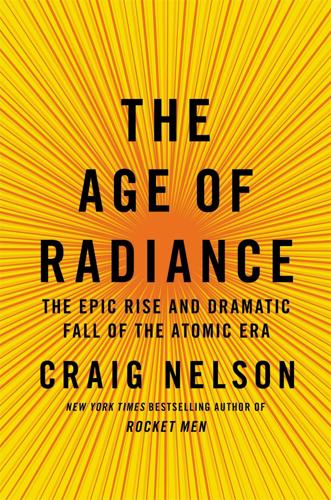
The Age of Radiance: The Epic Rise and Dramatic Fall of the Atomic Era
by
Craig Nelson
Published 25 Mar 2014
In the 1970s, the AEC was split into the Department of Energy, which promotes and develops, and the Nuclear Regulatory Commission, whose mission is clear. Japan’s government did not make these changes. Additionally, the United States has a history of civilians and journalists questioning and criticizing state policies. Both Robert Oppenheimer and consumer advocate Ralph Nader, among others, warned of the dangers of civilian nuclear power plants at the industry’s very birth. “The Atomic Energy Commission was licensing unsafe reactors operating near major metropolitan areas, and they clearly were aware of this lack of safety,” Nader said. “The press wasn’t critical. The Congress bought into the Atomic Energy Commission party line.
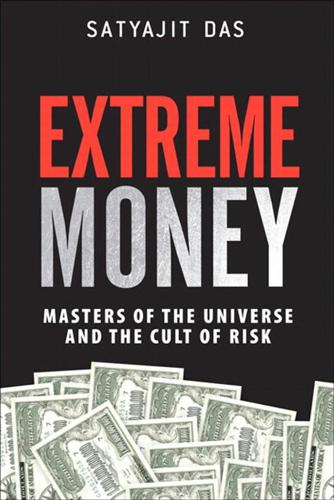
Extreme Money: Masters of the Universe and the Cult of Risk
by
Satyajit Das
Published 14 Oct 2011
Their model was Richard Gere: “Hi, I’m Richard Gere and I’m speaking for the entire world.”17 Bear Stearn’s Ace Greenburg donated $1 million to a hospital so that homeless men had access to free Viagra.18 George Soros supported free markets and democratic initiatives in Eastern Europe. Of course, hedge funds were beneficiaries from the opening up of these economies. Veteran campaigner Ralph Nader’s book, Only the Super Rich Can Save Us, urged billionaires to use their wealth to clean up America in a form of practical utopianism. Warren Buffett has indicated that he will leave 85 percent of his multibillion-dollar fortune to charity to be managed by his friend Bill Gates. One blogger urged everybody to go and get rich, so they could help more people.

The Taking of Getty Oil: Pennzoil, Texaco, and the Takeover Battle That Made History
by
Steve Coll
Published 12 Jun 2017
More particularly, it pushed John McKinley and Al DeCrane into the eager arms of thirty-six year old Bruce Wasserstein, cohead of First Boston’s aggressive merger division, and a Wunderkind even amid the precocity of modern Wall Street. On the face of it, they were poorly matched. In background, personal style, and business philosophy, Wasserstein had little in common with the staid, disciplined leaders of Texaco’s corporate empire. Far from being a combat veteran or military academy graduate, he had worked for Ralph Nader during the 1960s and dabbled in journalism and antipoverty work. His suits were wrinkled, he was overweight, and he was unrestrainedly verbose. Raised in Brooklyn in an intellectual, prosperous, and socially ascendant Jewish family, Wasserstein was above all else a prodigy. He matriculated at the University of Michigan at age sixteen and entered Harvard Law School at nineteen.
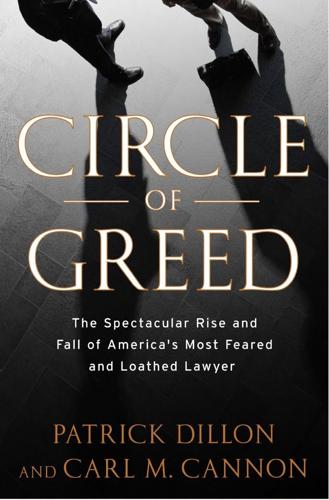
Circle of Greed: The Spectacular Rise and Fall of the Lawyer Who Brought Corporate America to Its Knees
by
Patrick Dillon
and
Carl M. Cannon
Published 2 Mar 2010
The second was a bundle of more than 150 reference letters from a wide array of allies, opponents, friends, and family members, including his former wife Star, and former clients. Federal and state judges who had heard his cases were among the petitioners for lenience, as were public officials such as U.S. Senator Carl Levin of Michigan and political activist Ralph Nader. University presidents and law professors submitted letters, including one by Mary Crossley, dean of the University of Pittsburgh Law School, Lerach’s alma mater. Citing previous lectures Lerach had delivered to Pitt law students, she had made the judge an offer: “Given Mr. Lerach’s extensive experience as a litigator, he would be able to offer students valuable real world illustrations of how major litigations are conceived and the interplay of substantive law with procedural rules,” she wrote on December 21, 2007.
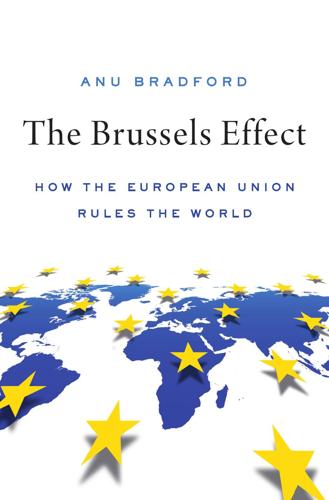
The Brussels Effect: How the European Union Rules the World
by
Anu Bradford
Published 14 Sep 2020
Pol’y 841, 841–59 (2005); Beth Simmons, The International Politics of Harmonization: The Case of Capital Market Regulation, in Dynamics of Regulatory Change (David Vogel & Robert A. Kagan eds., 2004), at 42, 50–52; Bruce Carruthers & Naomi Lamoreaux, Regulatory Races: The Effects of Jurisdictional Competition on Regulatory Standards, 54 J. Econ. Lit. 52 (2016). 4.See, e.g., Ralph Nader, Preface to Lori Wallach & Michelle Sforza, Whose Trade Organization?: Corporate Globalization and the Erosion of Democracy, at ix, xi (1999). 5.See Alan Tonelson, The Race to the Bottom: Why a Worldwide Worker Surplus and Uncontrolled Free Trade Are Sinking American Living Standards 14–15 (2002).
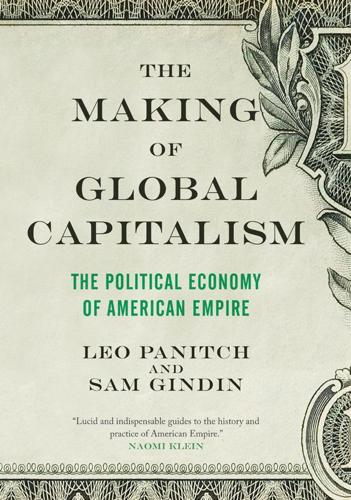
The Making of Global Capitalism
by
Leo Panitch
and
Sam Gindin
Published 8 Oct 2012
At the beginning of the 1980s they held and guaranteed some $85 billion in mortgage assets, equivalent to 7 percent of the mortgage market; by 2002, this had grown to $3.7 trillion, equivalent to almost 45 percent of the total mortgage market; by 2007, the total had reached $5.3 trillion, although it was a slightly smaller proportion of the total mortgage market since so many others had gotten into the game. As Ralph Nader put it, referring especially to the tax deduction allowed on mortgage-interest payments, Fannie and Freddie “swiftly and skillfully managed to pick up the roughshod tactics of the private corporate world and at the same time cling tightly to the federal government’s deepest and most lucrative welfare troughs.”23 Above all, given the implicit guarantee the federal government gave to GSE securities, financial markets regarded them as virtually as safe as Treasury securities while yielding a higher return—no small consideration at a time when interest rates on Treasuries were effectively negative.
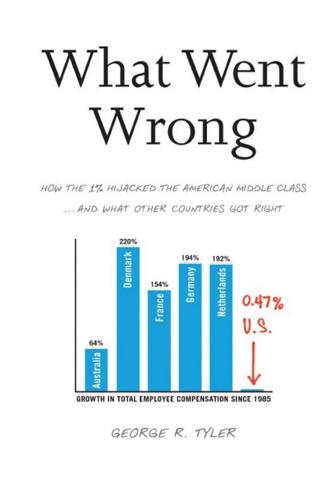
What Went Wrong: How the 1% Hijacked the American Middle Class . . . And What Other Countries Got Right
by
George R. Tyler
Published 15 Jul 2013
Parsons, The Rule of Empires (New York: Oxford University Press, 2010), 170, 194, 201–202. 13 John Gillespie and David Zweig, Money for Nothing (New York: Free Press, 2010), 20–24 and Jan Edwards, “Challenging Corporate Personhood,” Multinational Monitor, November 2002. 14 Amrit Dhillon, “Fresh Brew,” Sydney Morning Herald, June 5, 2010. 15 Ralph Nader, The Nader Reader, Feb. 21, 2000, speech. 16 R. Jeffrey Smith, “DeLay Trial a Window Into Influence,” Washington Post, Dec. 1, 2010. 17 Justin Fox, “What the Founding Fathers Really Thought about Corporations,” HBR Blog Network, Harvard Business Review, e-mail exchange between Justin Fox and Brian Murphy, April 1, 2010, http://blogs.hbr.org/fox/2010/04/what-the-founding-fathers-real.html 18 John Kay, “Beware the Bailout Kings and Backbench Barons,” Financial Times, May 20, 2009. 19 Luke Mitchell, “Understanding Obamacare,” Harper’s Magazine, December 2009. 20 Hedrick Smith, Who Stole the American Dream (New York: Random House, 2012). 21 Charles Morris, “A Recession Can Clear the Air,” Washington Post, Nov. 16, 2008. 22 Northeast Public Power Association (NEPPA), “Deregulation Continues to Impact Retail Electric Prices in Region,” NEPPA News Line, vol. 43, no. 12, December 2007.

Hard Landing
by
Thomas Petzinger
and
Thomas Petzinger Jr.
Published 1 Jan 1995
For eight days, spread over the months of February and March 1975, a parade of witnesses came forth, carefully arranged by Breyer and Bakes to cast the regulators and the industry as evildoers. Proponents of deregulation generally got the chance to make their case first, putting the beneficiaries of the status quo on the defensive. Ralph Nader, an ardent deregulation advocate, was sworn in to lend his populist imprimatur to the cause. Ford administration officials were carefully chosen to make sure they personally favored and fully understood deregulation, even if their agencies had taken no official position. Among the academic theorists, Alfred Kahn of Cornell was chosen to testify because of his rapier intellect.

City for Sale: The Transformation of San Francisco
by
Chester W. Hartman
and
Sarah Carnochan
Published 15 Feb 2002
While they could raise only forty-two thousand dollars, they were able to effectively use the Federal Communications Commission’s (since discarded) “fairness doctrine” (a technique profitably used earlier in the Proposition U and Proposition R campaigns) to persuade television and radio stations to give them free air time, in about a 1:4 ratio to the time the realty interests had bought. The group used most of its money to produce some extremely clever and sophisticated thirty-second spots, featuring such icons of integrity as Henry Fonda, Jack Lemmon, and Ralph Nader, which hit squarely on the issue of voter fraud. The result was a 65 to 35 percent rout of the proposition. The next state-level move by real estate interests was another attempt to have the California legislature pass a law limiting local rent control efforts, imposing restrictions similar to those the state’s voters had just rejected.
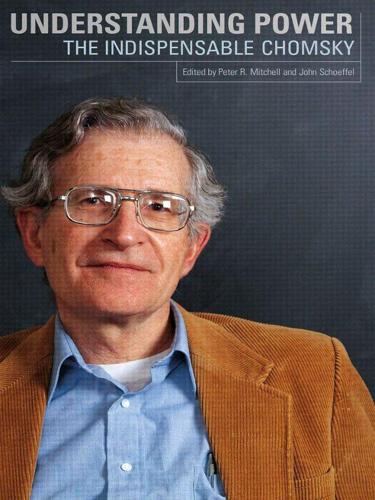
Understanding Power
by
Noam Chomsky
Published 26 Jul 2010
MAN: Could you mention some specific organizations that we could try to link up with and network with, which are doing a good job of working on these problems? Well, a lot of organizations are involved, from a lot of different points of view. For example, at one level—which is important, though of course superficial—Ralph Nader’s Public Citizen is involved [the group works primarily on consumer issues]. That’s important, like I say, but not really touching the basic structure of power. Beyond that, if the American labor movement ever recovers the insights that ordinary working people had a hundred years ago, then it will be working on them too.
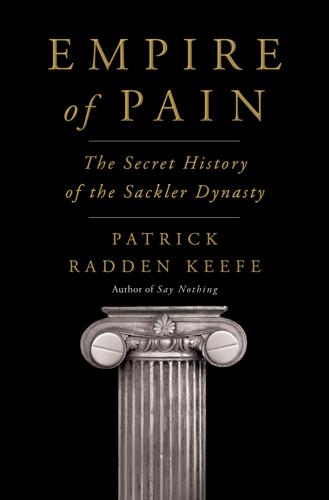
Empire of Pain: The Secret History of the Sackler Dynasty
by
Patrick Radden Keefe
Published 12 Apr 2021
In his Medical Tribune column, “One Man & Medicine,” he served up an idiosyncratic miscellany of righteous polemics against things that he hated (cigarettes, FDA regulation, “lay” journalism written by nondoctors) and name-droppy journal entries about his life and travels. He devoted three columns to an extended conversation with the opera singer Luciano Pavarotti. Stories on a range of subjects somehow returned to his close personal friendship with the king of Sweden. Arthur boasted about having been an early booster of Ralph Nader’s consumer safety work, though the head of an organization Nader started, Public Citizen’s Health Research Group, once declared, “What passes for news in the Medical Tribune is highly filtered editorial comment irrationally favorable to the drug industry.” If Arthur was getting used to the idea of publicity, he insisted that it was publicity on his own terms.
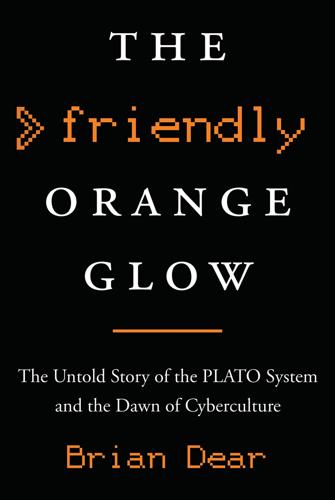
The Friendly Orange Glow: The Untold Story of the PLATO System and the Dawn of Cyberculture
by
Brian Dear
Published 14 Jun 2017
Thanks to Andy Hertzfeld, Paul Resch, Bill Galcher, Donald Norman, Dan O’Neill, and Ray Ozzie for reviewing all or portions of the manuscript over the years. Thanks also to writers Steven Levy and John Markoff, whose inspiring writing, support, and encouragement have helped give me the strength to finish this book. Thanks to Ralph Nader and William C. Taylor, authors of The Big Boys: Power and Position in American Business (Pantheon, 1986), who without hesitation gave me two boxes full of all of their research on Control Data Corporation, including raw interview transcripts and handwritten reporter’s notes, which I put to extensive use in Part Three of this book.
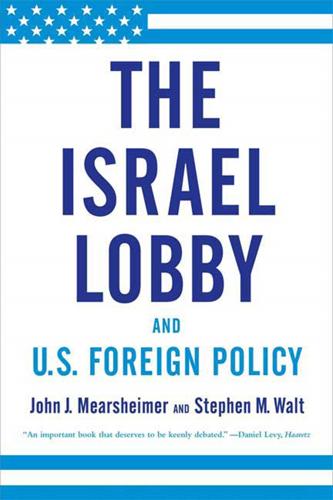
The Israel Lobby and U.S. Foreign Policy
by
John J. Mearsheimer
and
Stephen M. Walt
Published 3 Sep 2007
For examples of this argument, Phyllis Chesler, The New Anti-Semitism: The Current Crisis and What We Must Do About It (San Francisco: Jossey Bass, 2003); Hillel Halkin, “The Return of Anti-Semitism: To Be Against Israel Is to Be Against the Jews,” Wall Street Journal, February 5, 2002; Barry Kosmin and Paul Iganski, “Judeophobia—Not Your Parents’ Anti-Semitism,” Ha’aretz, June 3, 2003; Amnon Rubinstein, “Fighting the New Anti-Semitism,” Ha’aretz, December 2, 2003; Gabriel Schoenfeld, The Return of Anti-Semitism (San Francisco: Encounter Books, 2003); Natan Sharansky, “Anti-Semitism Is Our Problem,” Ha’aretz, August 10, 2003; Yair Sheleg, “A World Cleansed of the Jewish State,” Ha’aretz, April 18, 2002; and Yair Sheleg, “Enemies, a Post-National Story,” Ha’aretz, March 8, 2003. For criticism of this perspective, see Akiva Eldar, “Anti-Semitism Can Be Self-Serving,” Ha’aretz, May 3, 2002; Brian Klug, “The Myth of the New Anti-Semitism,” Nation, February 2, 2004; Ralph Nader, “Criticizing Israel Is Not Anti-Semitism,” CounterPunch.org, October 16/17, 2004; Rieframing Anti-Semitism: Alternative Jewish Perspectives, ed. Henri Picciotto and Mitchell Plitnick (Oakland, CA: Jewish Voice for Peace, 2004); and Finkelstein, Beyond Chutzpah, chaps. 1–3. 84. Helen Nugent, “Chief Rabbi Flays Church over Vote on Israel Assets,” Times (London), February 17, 2006.
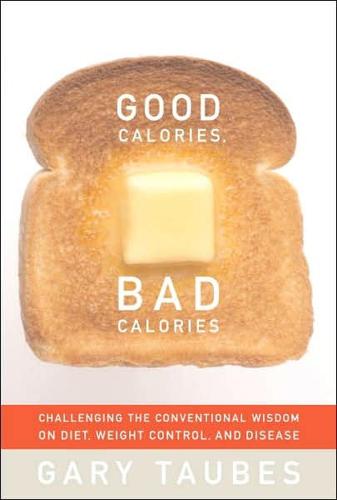
Good Calories, Bad Calories: Challenging the Conventional Wisdom on Diet, Weight Control, and Disease
by
Gary Taubes
Published 25 Sep 2007
Though the conflict-of-interest accusations served to discredit the advice proffered in Toward Healthful Diets, the issue was not nearly as simple as the media made it out to be and often still do. Since the 1940s, nutritionists in academia had been encouraged to work closely with industry. In the 1960s, this collaborative relationship deteriorated, at least in public perception, into what Ralph Nader and other advocacy groups would consider an “unholy alliance.” It wasn’t always. As Robert Olson explained at the time, he had received over the course of his career perhaps $10 million in grants from the USDA and NIH, and $250,000 from industry. He had also been on the American Heart Association Research Committee for two decades.

Enlightenment Now: The Case for Reason, Science, Humanism, and Progress
by
Steven Pinker
Published 13 Feb 2018
The magazine graph was annotated with landmarks in auto safety which identified the technological, commercial, political, and moralistic forces at work. Over the short run they sometimes pushed against each other, but over the long run they collectively pulled the death rate down, down, down. At times there were moral crusades to reduce the carnage, with automobile manufacturers as the villains. In 1965 a young lawyer named Ralph Nader published Unsafe at Any Speed, a j’accuse of the industry for neglecting safety in automotive design. Soon after, the National Highway Traffic Safety Administration was established and legislation was passed requiring new cars to be equipped with a number of safety features. Yet the graph shows that steeper reductions came before the activism and the legislation, and the auto industry was sometimes ahead of its customers and regulators.
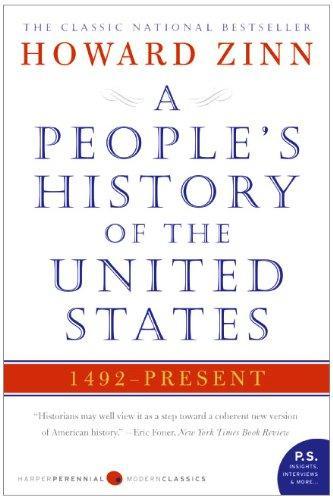
A People's History of the United States
by
Howard Zinn
Published 2 Jan 1977
Neither Gore nor Bush had a plan for free national health care, for extensive low-cost housing, for dramatic changes in environmental controls. Both supported the death penalty and the growth of prisons. Both favored a large military establishment, the continued use of land mines, and the use of sanctions against the people of Cuba and Iraq. There was a third-party candidate, Ralph Nader, whose national reputation came from decades of persistent criticism of corporate control of the economy. His program was sharply different from the two major candidates, emphasizing health care, education, and the environment. But he was shut out of the nationally televised debates during the campaign, and, without the support of big business, he had to raise money from the small contributions of people who believed in his program.

The Rise and Fall of American Growth: The U.S. Standard of Living Since the Civil War (The Princeton Economic History of the Western World)
by
Robert J. Gordon
Published 12 Jan 2016
The cause was determined to be pilot error, as the pilot’s aggressive use of the rudder caused the tail of the plane to snap off, and before the aircraft hit the ground, both engines had fallen off the wing. These three incidents with their very different causes—inadequate air traffic control, faulty maintenance, and pilot error—appear to have taught airlines and aircraft manufacturers many lessons. To quote the title of Ralph Nader’s famous book, air travel was initially “unsafe at any speed” but now is safer than walking across the street. AIRLINE PRICES AND THE INITIAL PROMISE OF AIRLINE DEREGULATION In the history of the U.S. airline industry since World War II, one theme stands out. Air travel rapidly made the transition from a travel mode that was relatively dangerous and expensive to one that opened the world as an affordable destination for millions of Americans.

Strategy: A History
by
Lawrence Freedman
Published 31 Oct 2013
The question posed now was whether and how the principals could reassert control over their agents.1 If the agents did not wish to be so controlled, they had to take the initiative in demonstrating their value to shareholders or else find ways of releasing themselves from this constraint by becoming the owners as well as the managers. Agency Theory Michael Jensen, a Chicago-trained economist at Rochester, was impressed by a 1970 article in the New York Times by Milton Friedman that announced his arrival as an outspoken advocate of free-market economics. Friedman’s target was activist Ralph Nader’s campaign to get three representatives of the “public interest” on the board of General Motors. Friedman countered that the only responsibility of the corporation was to make profits so long as it engaged in “open and free competition without deception or fraud.” His arguments challenged the managerialism of the past two decades directly: the leaders of the big corporations should neither expect to act as agents of the state nor expect the state to shield them from competition.
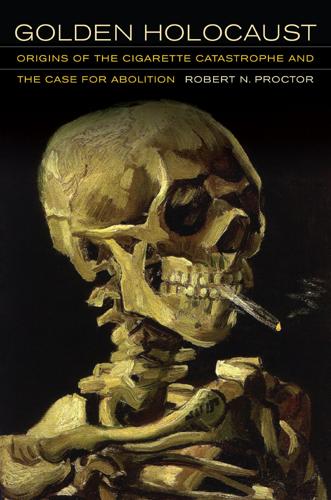
Golden Holocaust: Origins of the Cigarette Catastrophe and the Case for Abolition
by
Robert N. Proctor
Published 28 Feb 2012
Cuyler Hammond of the American Cancer Society and Hayden Nicholson of the University of Arkansas, for example, but also McKeen Cattell, chief of pharmacology at Cornell.32 Hueper as head of the NCI’s Environmental Cancer Section must have seemed an attractive candidate: the world’s leading authority on occupational carcinogenesis thought that tobacco was being unfairly blamed as the cause-all of modern cancer and that other kinds of carcinogens were being let off the hook, notably asbestos and the many dangerous pollutants belched forth from the petrochemical industry. And he was partly right. It was easy for the Dows and DuPonts of the world to blame smoking or some other “personal factor” for whatever maladies their workers were contracting. Hueper was a kind of proto-Ralph Nader or Rachel Carson, keenly aware of the depth of corporate neglect and malfeasance. Much of his life had been spent documenting dangers to which workers were exposed, but he was no friend of Big Tobacco and scoffed at the idea of taking money to become their corporate poodle. He didn’t think much about tobacco as a cancer cause—for decades he smoked a pipe and at one point credited 90 percent of all lung cancers to (non-tobacco) environmental and occupational causes, leaving only 10 percent for cigarettes—but he also had a strong moral compass and wasn’t about to let himself be bought.
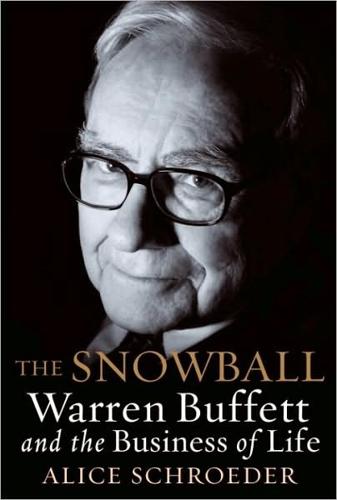
The Snowball: Warren Buffett and the Business of Life
by
Alice Schroeder
Published 1 Sep 2008
They never met Susie Jr., who had moved to Washington, where Katharine Graham took an interest and arranged for her to work as an editorial assistant, first at the New Republic and then at U.S. News & World Report. In November 1983, in a huge wedding at New York’s Metropolitan Club, she married again, this time to Allen Greenberg, a public-interest lawyer for Ralph Nader. Greenberg had her father’s cool analytical bent and looked like someone who lived in a library. Both Susie’s parents took to their new son-in-law immediately, and people remarked on how much Allen resembled Susie’s father—rational, dispassionate, good at saying no. The newlyweds moved into a Washington town house but rented most of it out to other tenants and lived in a tiny apartment.
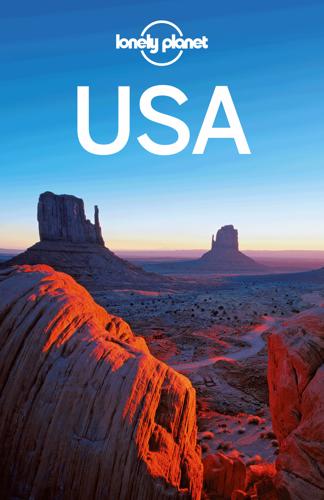
USA Travel Guide
by
Lonely, Planet
Milk, along with San Francisco mayor George Moscone, was assassinated in 1978. Betty Friedan (1921–2006) Founder of the National Organization of Women (NOW), Friedan was instrumental in leading the feminist movement of the 1960s. Friedan’s groundbreaking book The Feminine Mystique inspired millions of women to envision a life beyond mere ‘homemaker’. Ralph Nader (1934–) The frequent presidential contender (in 2008, Nader received 738,000 votes) is one of America’s staunchest consumer watchdogs. The Harvard-trained lawyer has played a major role in insuring Americans have safer cars, cheaper medicines and cleaner air and water. PAX AMERICANA & THE WAR ON TERROR In 1980, Republican California governor and former actor Ronald Reagan campaigned for president by promising to make Americans feel good about America again.